Breathing life into Red Clay
 By IRENE HSIAO 26
By IRENE HSIAO 26

 By IRENE HSIAO 26
By IRENE HSIAO 26
CHICAGO READER | SEPTEMBER 16, 2021 | VOLUME 50, NUMBER 26
04 Shop Local Joe Judd plans to open Tangible Books in Bridgeport.

does this mean for the rest of our neighborhoods?
16 Intertwined Chicago artist Jim Duignan and his Stockyard Institute
18 Art Listings Some of the many art exhibitions to look forward to
20 Review “Earthly Observatory” draws from art and the natural sciences.
22 Twitter Josh Lipnik documents regional art and architecture on Midwest Modern.
24 Collo-Julin | Architecture Chicago Architecture Biennial and Wrightwood 659 pose architectural questions this fall.
06 Sula | Books Definitive guides on Chicago pizza, Japanese cocktails, Keralan specialties, and more

08 Joravsky | Politics Meet Jesse Sullivan—the latest Republican candidate for governor—who’s too scared to criticize Robert E. Lee, much less Trump.
10 Isaacs | Culture The Museum of Contemporary Photography draws a bead on the other pandemic.
12 Census Data shows the biggest population increases in the Loop and along the lakefront. What
26 Dance Red Clay’s Vershawn Sanders-Ward is building a cultural community hub in Woodlawn.
28 Braided Web’ The Cultural Asset Mapping Project preserves and builds on neighborhood arts programs.
30 Reid | History Makeshi Chicago Stages explores the story of DIY in our city’s drama.

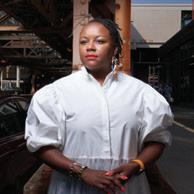
31 Drag Delights Submit yourself to
THE WEEK AFTER the shelter-in-place order hit in March of 2020, the Reader was supposed to be putting out a big spring arts preview issue. Clearly, that didn’t happen.
Now 18 months later, we’re looking at signs of hope from performing companies and visual arts organizations reopening their doors. Yet we can’t forget the recent past, including the 2020 uprisings against police violence and racism and the January 6 insurrection.
Chicago arts groups are no strangers to upheaval and making do, but “build back better” should mean more than papering over the fault lines of history. This issue focuses on what place and community mean in that healing process. From Vershawn Sanders-Ward’s Red Clay Dance Company building a new arts hubs in Woodlawn, to the city’s Cultural Asset Mapping Project raising up voices in traditionally marginalized
radical sex with Hell in a Handbag’s The Golden Girls
Previews of concerts including Meat Wave, Macie Stewart, and Eleventh Dream Day, plus reviews of releases by Robert Aiki Aubrey Lowe, Alicia Walter, SpermChurch, and more
52 Early Warnings Rescheduled concerts and other updated listings
TO CONTACT ANY READER EMPLOYEE, E-MAIL: (FIRST INITIAL)(LAST NAME) @CHICAGOREADER.COM
PUBLISHER AND PRESIDENT TRACY BAIM PUBLISHER AND EDITOR IN CHIEF KAREN HAWKINS EDITOR IN CHIEF SUJAY KUMAR MANAGING EDITOR BRIANNA WELLEN PRODUCTION MANAGER KIRK WILLIAMSON GRAPHIC DESIGNER AMBER HUFF MUSIC EDITOR PHILIP MONTORO THEATER AND DANCE EDITOR KERRY REID CULTURE EDITOR SALEM COLLO-JULIN ASSOCIATE EDITOR JAMIE LUDWIG SENIOR WRITERS LEOR GALIL, DEANNA ISAACS, BEN JORAVSKY, MIKE SULA STAFF WRITER ADAM M. RHODES EDITORIAL ASSOCIATE TARYN ALLEN
35 Toxic Avengers Black Button Eyes examines toxic masculinity in Dr. Horrible’s Sing-Along Blog
36 Offstage Stars The Saints are ready to welcome you back to the auditorium.
38 Fall Picks Our arts writers suggest some events to get back into the cultural stream this season.
40 Reid | Blackout Comedy Back to the future with Theater Wit’s Mr. Burns
42 Movies of Note Everybody’s Talking About Jamie is full of glitter, show tunes, and real earnestness; Malignant leaves viewers asking, “Does James Wan understand how arms work?”; and The Nowhere Inn is a mockumentary that occasionally gets lost in itself.
44 Feature As Rockstar E.V., Englewood scientist-turnedguitarist Edward Vaughn fuses 80s rock style with modern hip-hop and R&B.
52 Gossip Wolf Lykanthea’s Dawn Birds welcome the autumnal equinox with song, Ozzuario drop a new album of industrial blackmetal noise, and Spirits Having Fun celebrate the release of Two at Golden Dagger.
56 Savage Love Dan Savage offers advice on massage ethics and the practice of withholding semen.
61 Jobs
61 Apartments & Spaces
61 Marketplace
communities on the west and south sides, to the queer marriage of drag and leather in Hell in a Handbag moving into the Leather Archives & Museum, our contributors give us snapshots of artists who move forward without fear. As the new Chicago theater history book Makeshift Chicago Stages reminds us, building out of ashes is in the DNA of artists here.

Longtime Chicago artist and educator Jim Duignan’s Stockyard Institute, which started as a project in the mid-90s, is being celebrated with a retrospective at DePaul Art Museum. Duignan prefers to describe the exhibition as a “prospective,” and told Kerry Cardoza, “It’s going to be a kind of station to look ahead at the next 25 years.” We hope that some of the stories this week will inspire you to light your own way back to our cultural treasures. KERRY REID AND SALEM
COLLO-JULINVICE PRESIDENT OF OPERATIONS ANN SCHOLHAMER
DIRECTOR OF DIGITAL JOHN DUNLEVY SOCIAL MEDIA COORDINATOR JANAYA GREENE STRATEGIC INNOVATION DIRECTOR MARIAH NEUROTH DEVELOPMENT AND MARKETING ASSOCIATE CHINYERE FARR-DOUGLAS MEDIA PARTNERSHIPS COORDINATOR YAZMIN DOMINGUEZ EXECUTIVE ASSISTANT SANDRA L. KLEIN
ADVERTISING
312-392-2970, ADS@CHICAGOREADER.COM
CLASSIFIEDS:
CLASSIFIED-ADS@CHICAGOREADER.COM
VICE PRESIDENT OF SALES AMY MATHENY SALES DIRECTOR AMBER NETTLES SENIOR ACCOUNT REPRESENTATIVES
LENI MANAA-HOPPENWORTH, TED PIEKARZ, WILL ROGERS, LISA SOLOMON
NATIONAL ADVERTISING
VOICE MEDIA GROUP 1-888-278-9866 VMGADVERTISING.COM
JOE LARKIN AND SUE BELAIR
DISTRIBUTION CONCERNS distributionissues@chicagoreader.com 312-392-2970
CHICAGO READER L3C
BOARD PRESIDENT DOROTHY R. LEAVELL TREASURER EILEEN RHODES
AT-LARGE SLADJANA VUCKOVIC READER INSTITUTE FOR COMMUNITY JOURNALISM, INC.
CHAIRWOMAN EILEEN RHODES
TREASURER CAROL BELL DIRECTORS ALISON CUDDY, VANESSA FERNANDEZ, KIM L. HUNT, JACKIE KAPLAN-PERKINS, DOROTHY R. LEAVELL, SLADJANA VUCKOVIC
READER (ISSN 1096-6919) IS PUBLISHED BIWEEKLY BY CHICAGO READER L3C 2930 S. MICHIGAN, SUITE 102 CHICAGO, IL 60616 312-392-2934, CHICAGOREADER.COM
COPYRIGHT © 2021 CHICAGO READER PERIODICAL POSTAGE PAID AT CHICAGO, IL ALL RIGHTS RESERVED. CHICAGO READER, READER, AND REVERSED R: REGISTERED TRADEMARKS ®
pends heavily on his customers to dictate the direction and shape his bookstores take. A customer will come in and ask for something Judd has never heard of. That will send him down a rabbit hole that may result in a whole new section being added to the stacks. Judd credits his wife Lisa for the wide-ranging cooking section in his current store and expects Tangible to reflect the Bridgeport community, as the store becomes a mainstay along the area’s central commercial strip. He will be sharing the block with a couple Chinese restaurants, a junk shop, a hardware store, and various other commercial concerns. The neighborhood is in a process of transformation.
My guess is that this change will not go exactly the same way it did in Wicker Park when Judd opened his first bookstore, but without doubt, his new store will have an e ect on the character of Bridgeport. A bookstore signals to passersby that the locals have curiosity and some measure of intellect. It welcomes visitors, telling them by its presence that we want them to spend some time exploring here, rather than to merely lighten their wallets.
shop local
Joe Judd plans to open Tangible Books on Halsted Street this fall.
 By DMITRY SAMAROV
By DMITRY SAMAROV
Bridgeport is finally getting a bookstore. At the moment, neighborhood residents like myself have to travel to Pilsen or Hyde Park to get our fix. But a month or two from now, we’ll be able to walk into a store on Halsted stocked with some 60,000 hardcovers and paperbacks, on every subject imaginable. I can’t wait.
Joe Judd has a place of honor in Chicago bookstore history. As a cofounder of Myopic Books some 30 years ago, he helped transform Wicker Park into a desired destination for both Chicagoans and visitors from all over.
A good bookstore is a cultural hub that exerts a magnetic pull on people who want more out of life than to just go through the motions. Myopic has had several addresses but has
always been one of the focal points of the community. Judd hopes his new store, dubbed Tangible Books by his wife and business partner, Lisa, will have a similarly inspirational, transformative e ect on Bridgeport.
Judd’s path back to Chicago has been circuitous. He sold Myopic about 12 years ago and moved to a farm in Arkansas to raise his daughters. Several years later, he moved again to the area where he was raised, around Charleston, Illinois, and opened a bookstore. He named it Bob’s Bookstore after his father (a local fixture) and the business thrived until the onset of COVID-19. When the opportunity arose for his daughters to attend a well-rated school in Chicago, Judd decided to move back to town. With the help of his old friend
Ed Marszewski of Maria’s and Marz Brewing, Judd found a storefront location on Halsted near 33rd Street.
You might ask why anyone would open a used bookstore in 2021. Most titles that Judd will stock are likely available somewhere online, at even lower prices than the reasonable ones Tangible will surely offer. If your mission is purely a transactional one, then a sprawling, subjectively-organized labyrinth of bookshelves will not be your best bet. If, however, you’re interested in the unexpected discovery and an experience put together by a human being rather than an algorithm, then Tangible Books will doubtless soon be one of your favorite destinations in the city.
Judd tells me over the phone that he de-
Before any of this can happen, Judd must build new shelves, buy signage, and transport his massive stock from Charleston. He’s started a GoFundMe campaign in order to help defray the costs of this massive undertaking. He tells me he’s hoping to open his doors as early as October. But there’s a ton of work to do before that happens. He’s been shuttling back and forth between Chicago and Charleston for weeks. His family has found a home a few blocks from the store, and his daughters have started their school year.
When I ask Judd his favorite kind of book, he says modern fiction, but struggles to come up with a title. The first one that pops into his head is Horten’s Miraculous Mechanisms , a popular 2011 children’s book by Lissa Evans that one of his daughters brought him recently. It’s a telling example of how his mind works. Asked to name a personal preference, he defers to one introduced to him by someone else. He’s open and curious about what moves those around him.
This is why I know Tangible Books will fill a need in my neighborhood and we’ll have a big say in the shape that the store takes. No one can entirely predict the character an area in economic and demographic flux, like Bridgeport is now, will ultimately take. But the type of bookstore Joe Judd helped originate can’t help but make a place more attractive in multiple ways. I’ll be one of the first ones through the door when he flips his sign to “OPEN.”



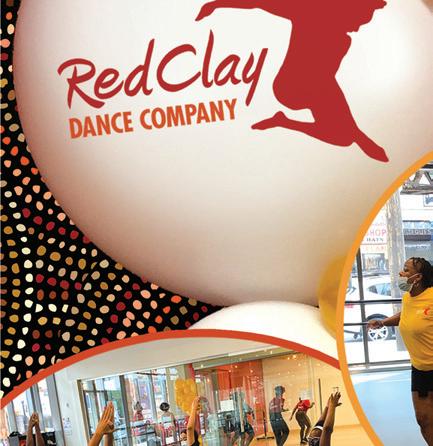

Friday, Sep 25
Qian Julie Wang: Beautiful Country. With Greta Johnsen
Saturday, Oct 2
Makaya McCraven in Conversation and Performance
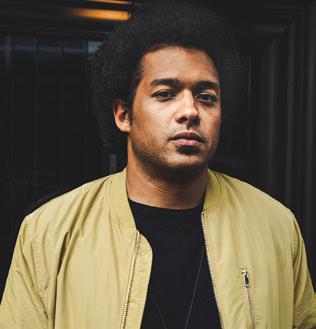
Wednesday, Oct 13
Ron and Clint Howard on Hollywood, Family, and Fame
Saturday, Nov 6
Debbie Millman: Why Design Matters
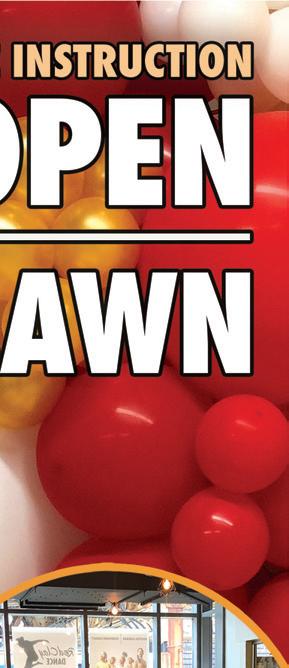
Saturday, Nov 6
Kal Penn: You Can’t Be Serious
Saturday, Nov 13 Teju Cole: Black Paper
Friday, Sep 25
Alan Cumming: Tales from a Fully Packed Life. With Chris Jones
Information and tickets: chicagohumanities.org








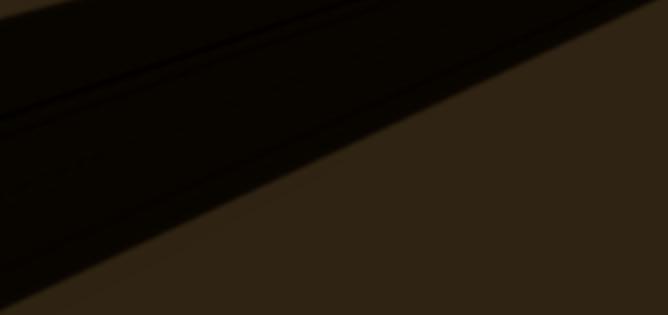











Definitive guides on Chicago pizza, Japanese cocktails, Keralan specialties, and more
By MIKE SULAWhile my comprehensive four-volume opus on freeganism was derailed by the pandemic, it seems like it was a particularly productive period for a whole bunch of local food writers who have books coming out this fall. I’m excited about all of them.
Instantly Mediterranean: Vibrant, Satisfying Recipes for Your Instant Pot, Electric Pressure Cooker, and Air Fryer, Emily Paster (Tiller Press, September 14)
I just got a new toaster oven with an air fryer function, so I’m excited to take on this Park Ridge-based writer’s recipes for chicken shawarma, lamb and bulgur kofte, and the Israeli fried eggplant sandwich sabich. But the bulk of Paster’s fourth book is concerned with Instant Pot and pressure cooker recipes, so if you’re into the gadgetry, North African spicy fish stew, muhammara, and prosecco-poached pears are pretty fetching too.
Everyday Sadya: Enjoying the Land’s Bounty, Margaret Pak, Vinod Kalathil, and Maggie Hennessy (self-published, very soon?)









I guess I’m now a collector of the one-off Kickstarter-funded food zine collaborations between local chefs and food writer Maggie Hennessy. The third, after John Manion’s Meat Project and Honey Butter Fried Chicken’s Cassoulet , is this lovely, 12-recipe guide to creating the Keralan vegetarian banana leaf feast that is both a celebratory occasion and everyday way to make use of leftovers. Pak and Kalathil, the founders of Thattu, Chicago’s only Keralan restaurant, have the project just about funded, so it won’t be long now.
The Aromatic Wild Herbs & Spices of the Midwest, Marika Josephson (Midwesterner, end of September)
I haven’t gotten a look at this yet, but it’s going to be a handmade pocket guide from a cofounder of Scratch Brewing Company in downstate Ava, Illinois, (in the Shawnee National Forest) and the coauthor of The Homebrewer’s Almanac.
The Korean Vegan Cookbook: Reflections and Recipes from Omma’s Kitchen, Joanne Lee Molinaro (Avery, October 12)

Until now I’d never heard of Joanne Lee Molinaro, but she has half a million more Instagram followers than every writer on this list combined. Actually, the Skokie-born attorney’s main platform is TikTok, where she posts intensely personal 60-second narratives while assembling everything from gimbap to gluten-free blueberry pancakes to kimchi crunchwraps for more than two and a half million followers. This book is merely the beautifully shot and written dead-tree extension of that vast platform. As she points out, veganism is rare in Korean culture, but inventive, uncompromising recipes like dashi-braised lion’s mane mushrooms, acorn jelly with blackberry dressing, and gochuchang-spiked lasagna with avocado bechamel seem pretty tempting to this hardcore carnivore.



The Way of the Cocktail: Japanese Traditions, Techniques and Recipes , Julia Momosé and Emma Janzen (Clarkson Potter, October 12)

If you’ve ever sat in front of Julia Momosé at the bar at the late GreenRiver, or now Kumiko (or sipped something she made at the Aviary



or Oriole), you know she has one of the most e ortless and fluid cocktailing styles in town. This lush, granular examination of the Japanese approach to seasonality, craftsmanship, and hospitality as it applies to the country’s deeply entrenched cocktail culture explains exactly where she’s coming from. It’s a thorough examination of history, tools, spirits, and technique with recipes broken down not just by seasons, but 24 microseasons, almost doubling as a guide to Ginza’s cocktail bars. Photography by Kevin Miyazaki makes Momosé’s drinks look like luminous jewels.
The Ultimate Chicago Pizza Guide: A History of Squares & Slices in the Windy City, Steve Dolinsky (Northwestern University Press, October 15)
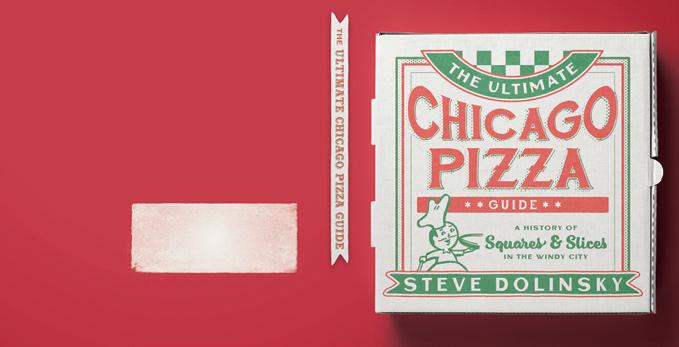

The erstwhile Hungry Hound has a new nom de TV (“The Food Guy”), a new TV gig, and a new book following Pizza City, USA. It’s an update after Chicago’s pandemic-driven pizza boom; a meticulous examination of the exemplars of nine pizza styles found within the city limits. His righteous setting of the record straight when it comes to our native pies ought to be required reading before any outsider opens his gob on whatever he thinks Chicago-style pizza is. (Yeah, it’s always a dude.) Dolinsky gives himself free rein to unleash a hilarious snark not often seen on the news.
Grist: A Practical Guide to Cooking Grains, Beans, Seeds, and Legumes , Abra Berens (Chronicle Books, October 26)

The follow-up to the former Local Foods chef’s enormously successful Ruffage: A Practical
Guide to Vegetables gets the jump on Portland chef Joshua McFadden’s forthcoming opus on similar provisions. Now the head chef at Granor Farms in Three Oaks, Michigan, Berens strolls through each category with representative methods (such as boiled, fried, sprouted) with an eye toward variety and versatility over 125 recipes.
Cheese Sex Death: A Bible for the Cheese Obsessed, Erika Kubick (Abrams, October 26)

Kubick’s carnal, voluptuous writing style is perfectly evocative of the sensual pleasures of preserved milk. But there are a lot of comprehensive cheese guides out there for beginners, and her way with words, plus her significant depth of knowledge, are undercut by increasingly labored religious puns and biblical metaphors.
The Wisconsin Supper Clubs Story: An Illustrated History with Relish, Ron Faiola (Agate Midway, November 9)

This is filmmaker (and former Couch Flambeau drummer) Faiola’s third book on the subject and his deepest dive yet into the century-plus saga of Wisconsin’s enduring home of the relish tray, fish fry, prime rib, and Old Fashioned. The archival material is rich and wistful, and while you’ll never get a dry-aged steak at Ray Radigan’s again, there’s enough here to inspire spur-of-the-moment road trips up north to the Hobnob, Ishnala Supper Club, or any of the surviving sanctuaries of midwestern midcentury swank.
@MikeSulacontributed $5 million to Sullivan’s campaign.
By the way, Larsen has amassed a fortune of either $3.4 billion or $59 billion, depending on which article you read.
I realize that’s a huge gap. Either way, he’s so rich he can spend $5 million on the longshot candidacy of a friend running for governor in a state that he, Larsen, does not live in. That’s rich, in more ways than one.
Sullivan is positioning himself as what we might call a moderate Republican. Though these days the bar is mighty low when it comes to moderacy in the Republican Party.
against mandates. In short, MAGA to the core.
In contrast, Sullivan is much slicker. Yes, he’s got nothing against the Texas abortion law, but he won’t have the votes to pass it. Which doesn’t mean he won’t try to pass it. And yes, he got the vaccine but he would never make other people get it. And, yes, he believes Joe Biden “is the president of the United States.” But that doesn’t mean Republicans and Democrats don’t have a reason to believe there’s “something wrong” with “our elections.” So he’s making it seem like both parties have doubts about the election results. Even though it’s only Republicans who are repeating Trump’s lies.
Slick, Sully, very slick . . .
Back in the 70s, a moderate Republican supported a woman’s right to choose, environmental protections, sensible gun control, a graduated income tax, and fact-based bipartisanship.
Clearly, Sullivan would rather not talk about Trump. Instead, he’d rather talk about Abraham Lincoln. Last week he announced his campaign with a speech under a statue of Lincoln outside Lincoln’s childhood home in New Salem, Illinois.
According to political reporter Mark Maxwell, Sullivan made 17 references to Lincoln in the course of a 17-minute speech.
Meet
too scared to criticize Robert E. Lee, much less Trump.
By BEN JORAVSKYWhile most of you were probably not paying attention, another Republican announced he was running for governor.
That makes four. Or five if you count Mancow, who had talked about running.
I don’t blame you for not paying attention to the Republican primary for governor—as the election’s not until June of 2022.
Gubernatorial primaries used to be in February or March, but they switched it to June because . . .
Oh, who cares why they switched it? You’re not paying attention anyway. So, if I told you, you’d only forget and I’d have to remind you the next time I wrote about it.
Point is—it’s many months away, so of course any normal human being would be paying no attention.
Especially since most Reader readers are in the fetal position worried that Governor J.B. Pritzker may be defeated by one of the whack jobs running against him.
Anyway, without further ado, meet Jesse Sullivan, the latest Republican gubernatorial candidate.
Sullivan is a 37-year-old, already fabulously wealthy venture capitalist who made his fortune creating Alter Global, a company based in San Francisco.
From here on out, Sullivan will refer to himself by the humble nickname of Sully, while constantly pointing out that he was raised in Petersburg—a town just outside of Springfield. And that he’s lived there for at least five years. And he’s raising his kids there.
All in the hopes of convincing downstate Republicans to overlook the fact that he’s a fabulously wealthy venture capitalist who made his fortune running a company with the word global in its title in the sin city of San Francisco—as I may have already mentioned.
How Bay-Area Californian is Jesse Sullivan?
Well, he’s so Bay-Area Californian that he’s already raised about $11 million (more than all the other Republican candidates combined), most of it in the form of donations from even more fabulously wealthy rich people from the Bay Area, including . . .
Kevin Taweel, chairman of Asurion, who contributed $4 million to Sullivan’s campaign.
And Chris Larsen, cofounder of Ripple, who
Nowadays, of course, the Republican Party is run by MAGA, who’s controlled by Trump, and as such, they want to outlaw abortion, mock the concept of global warming, press for tax cuts, and echo any old wacky shit they hear on YouTube.
To be a moderate means trying to reach out to independent-minded, suburban swing voters without saying anything that might o end MAGA, an awfully touchy bunch always on the lookout for signs of disloyalty.
You gotta be a Wallenda to walk that tightrope.
Consider the case of Gary Rabine, another rich guy running for the Republican nomination. When asked whether Trump was correct when he said that the election had been stolen, Rabine responded . . .
“I’m not smart enough to understand what was the end result, whether it was stolen or not.”
C’mon, Gary—if you’re not smart enough to know the difference between lies and the truth, how are you smart enough to be governor of Illinois?
Never thought I’d say this, but . . .
It’s almost enough to make me give credit to state senator Darren Bailey—another gubernatorial candidate. At least he’s sticking to his guns. He says Trump’s still his president. And that he’s not getting vaccinated. And he doesn’t think people should have to wear masks—or get vaccinated. And he’ll fight like hell against any mandate, unless it’s a mandate
He momentarily got flummoxed when a reporter asked about Trump’s latest burst of idiocy—the one in which Trump criticized the city of Richmond, Virginia, for removing the statue of Robert E. Lee.

According to Trump, “Lee is considered by many generals to be the greatest strategist of them all.”
And Lincoln, “wanted [Lee] to command the North, in which case the war would have been over in one day.”
But, “Robert E. Lee instead chose the other side because of his great love of Virginia.” (Like slavery had nothing to do with his decision.) And, “except for Gettysburg, would have won the war.”
You know, that idiocy.
When asked to comment, Sullivan, who’s running as an “anti-politician,” tried to make a joke. The exchange went like this . . .
Reporter: What would Lincoln have thought of Trump’s pro-Lee comment?
Sullivan: You got me. I have no clue. You should ask him.
As he pointed over his shoulder at Lincoln’s statue.
Man, you know being a moderate Republican isn’t what it used to be, if, when given the chance, you’re too chicken to criticize a slave-holding confederate like Robert E. Lee. v @bennyjshow


OUTDOO R S and ON LI NE , the new Open House Chicago brings you fascinating ways to explore this extraordinary city.











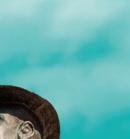










OPENHO US E CH ICAGO. ORG

This kid could be me.
“American Epidemic: Guns in the United States,” which opened last weekend at the Museum of Contemporary Photography, includes Nancy Floyd’s She’s Got a Gun —a series of portraits of gun-toting women with short wall text quotes from interviews with them.

One is a smiling 11-year-old target shooter with her finger on the trigger of a 9mm pistol. She says “Lindsay,” six years old and presumably her sister, is shooting a .22. They love it. I can relate, sort of. I got my own .22 when I was nine. But it wasn’t only for target practice.
Like many men of his generation, my father hunted for sport. The prey were wild things— pheasants and deer. We flushed birds from autumn cornfields so that humans with guns could attempt to blow their brains out.
Don’t call it gun violence. Guns are always violent.
And it’s always hunting season in Chicago. So far this year, more than 3,000 people have been shot in the city; last weekend alone, according to the Chicago Police Department, there were 40 shooting incidents and 60 firearm victims.
MoCP curator Karen Irvine says the museum
team has been actively working on this exhibit for more than three years, but had the subject on their to-do list for much longer. “We have a social justice-focused mission,” she told me, and COVID-19 has made it even more pressing: “People are compiling arsenals now; gun sales are up.”
Irvine’s exhibit essay cites some of the stunning statistics: Guns kill about 40,000 Americans every year, and are the weapon employed in 73 percent of American homicides. While research shows that “the very presence of a gun” increases the risk of gun injury (including accidents and suicides), the U.S. leads the world in private gun ownership, “with approximately 120 firearms per 100 residents.” That’s more than 100 percent higher than the runners-up, violence-torn Yemen and Serbia.
Behind the statistics, Irvine notes, is a national love affair with guns that began in the colonial period and runs through cowboy movies and concepts of masculinity, to manifest in current ideologies of individual freedom and lax control laws—in spite of the fact that, for example, “the average firearm homicide rate in states without background checks is 58 percent higher than the average in states with background checks in place.”
The rationale for this mayhem is an anachronistic one-sentence amendment to the Constitution, written before the existence of a standing national army and intended to ensure that the nation would have an equipped military force if it needed one. Here is the Second Amendment, in its entirety: “A well-regulated Militia, being necessary to the security of a free State, the right of the people to keep and bear Arms, shall not be infringed.”
The gun lobby and the National Rifle Association, both funded by the gun industry, want you to believe that this sentence gives just about any American the right to walk into a co ee shop or grocery store, or cruise a city street, packing.
The MoCP show features work by ten artists, most of it dependent on text or context for impact. It ranges from a quilt made of fabric squares cut from old police officers’ uniforms (Carolyn Drake’s One thousand and four Americans were killed by police officers in 2019) to a stop-action video that has G.I. Joe figures reenacting an actual murder (Winter in
America, by Hank Willis Thomas and Kambui Olujimi). The most powerful piece is Stephen Foster’s Libation , a video tribute to Robert “Yummy” Sandifer, an 11-year-old Chicago gang shooting victim, with a soundtrack of Sandifer’s grandmother’s searing, visceral screams at his funeral.
Also powerful: Andres Gonzalez’s booklet of four presidential speeches related to four mass murders at schools (an addition to his American Origami project). The murders span a 20-year period, from 1999 to 2018, but the presidents all say essentially the same thing: “let go of hate,” “overcome evil with good,” “I come to o er love and prayers.” Meanwhile nothing changes. We can’t even get a national assault weapon ban reinstated, or a director appointed at the national Bureau of Alcohol, Tobacco, Firearms and Explosives.
Nothing we’ve been doing for the last 20 years and more has worked, which gives rise to a question: Why not just get rid of guns? Why not make them, like other destructive explosive devices, illegal?
I put that question to Vanderbilt University professor and psychiatrist Jonathan Metzl, who’ll lecture at the museum October 6. His 2019 book, Dying of Whiteness, explores how racism figures into the gun control debate and has driven middle America whites to vote for politicians and policies that actually work against their own interests. He wasn‘t encouraging. “Guns represent freedom and liberty for a lot of people; these attitudes are hardwired,” he said. The chances we’ll get rid of guns right now? “Zero. Sad but true.”
UIC professor emeritus and criminologist John Hagedorn also told me that eliminating guns now is “a bridge too far.” Though if we could, he said, the homicide rate, in some Chicago neighborhoods among the highest in the world, would drop drastically.
Both of these experts see a parallel in issues around COVID. “People think telling them to wear a mask infringes their rights,” Hagedorn says. “They say, ‘You want to make me wear a mask today, and you’re going to come and take my guns away tomorrow.’ It’s an incredibly individualist culture where ‘my rights trump your right to live.’
“But the pandemic is raising these cultural issues across the country. People are seeing how bizarre that is. Your rights don’t mean you can take my rights away, take my life away. It really is analogous. There‘s some hope in that.” v
@DeannaIsaacsBy appointment only
Call (312) 768-8573 or email us at greaterenglewoodchamber@gmail.com to schedule an appointment

Register now for our Step by Step Back 2 Business Virtual Seminar
September 16, 2021
6-7pm
JOIN NOW!

www.gechamber.com


$5,000-$150,000 grants to cover operations/sta / overhead costs



Must have revenues of $20 million or less in 2019 and a reduction in revenue in 2020 due to COVID-19
Priority given for these businesses applying. Hardest hit industries—such as hotels, salons, tness centers, restaurants, and more.
Disproportionately Impacted Areas (DIAs)— economically distressed communities which have had higher case counts of COVID-19.
Businesses who have yet to qualify for state or federal assistance.
• A copy of your business’ 2019 AND 2020 federal tax returns

• Two business bank statements—one from the period of March through December 2020, and your most recent statement
• Business owner ID (ITIN accepted)
we share obsessive sanitation. we were both born translators of pain & English. she called me very early in the morning when my grandfather died. i thought i was in a dream even though i hadn’t been dreaming for weeks. when i started to cry, she stopped to comfort me. she told me she had a dream the night before. my grandfather was trying to tell her something, but she couldn’t understand it. months later, i call her crying because i can’t afford therapy anymore. my mother offers to pay for my therapy appointments. my mother’s birthday is the first day of spring. i don’t tell her this enough, but she is the reason spring comes. i don’t know why i’m waiting to tell her this. i don’t know what’s holding me back. when she asks me why i tattooed a small pigeon on my inner arm i say it’s how i feel closer to god. when my mother called me to say my grandfather died, i took a photo of his old glasses i’ve kept since 2007 after my plane almost crashed into the atlantic & i asked a man covered in ink & greasy hair to draw the frames on my arm. my mother doesn’t ask me why. she doesn’t look at my arm unless the sun is winding down & it’s safe to feel something enough to cry. my mother offers to pay for my therapy appointments. she knows what it means to not sleep, not dream. i don’t know what holds me back from telling my mother that she is the reason spring comes. instead, we sit quietly at dinners, too tired to make conversation. we are just happy enough to have the same blood as someone else.
Beyza Ozer is a queer/trans/Muslim poet, editor, and artist living in Chicago. Their work has been featured in Poetry, Poets.org, and the anthologies Halal If You Hear Me (2019) and Subject to Change: Trans Poetry & Conversation (2017). They are the author of FAIL BETTER (2017).
Poem curated by H. Melt: H. Melt is a poet, artist and educator whose work celebrates trans people, history and culture. They are the editor of Subject to Change: Trans Poetry & Conversation and author of There Are Trans People Here, publishing this fall with Haymarket Books.
A biweekly series curated by the Chicago Reader and sponsored by the Poetry Foundation.
FREE





Young People’s Poetry Day with Marilyn Nelson
Celebrate young poetry lovers with a reading, Q&A, and guided activities
Saturday, September 25, 2021, 11:00 AM
Learn more about resources and opportunities at PoetryFoundation.org

Lakeview to become the city’s most populous neighborhood.
Second to the Loop was the lakefront, which grew from Uptown down to Hyde Park. Here, the change was more varied: some neighborhoods grew by only a percentage point or two. But a cluster of neighborhoods around Hyde Park, including Oakland and Douglas, grew between 11 and nearly 15 percent. Edgewater, South Chicago, and the East Side were the only lakefront neighborhoods to mark a total population decline over the last ten years.
“Chicago’s population data is a microcosm of the polarization of the U.S.,” Paral says.
In the Loop, a third of residents earn more than $150,000, according to CMAP data. Its median income is $108,676—more than double the city’s median income of $58,247. Its demographics also depart from the city’s as a whole: it’s 61.7 percent white and 18.4 percent Asian, but just 8.8 percent Latinx and 7.8 percent Black.
Census data shows the biggest population increases in the Loop and along the lakefront. What does this mean for the rest of our neighborhoods?
By EMELINE POSNERAfter a dramatic drop of 200,000 residents between 2000 and 2010, this past decade Chicago’s population has risen back up by a modest 1.9 percent, or about 50,000 people, according to redistricting data released by the Census Bureau in mid-August. Chicago has retained its status as the nation’s third-largest city, for those who care about such things, though Houston is hot at the heels.
There’s a lot to unpack in the numbers—all 2,746,388 of them—and it will take years of research to formulate strong narratives about how and why Chicago is changing in the way that it is. But the city’s demographic shifts and the total population growth
make it a “very good census” for the city, Chicago-based demographer Rob Paral says.
Its Latinx, white, and Black populations each hung onto roughly a third of the total population, with the Latinx population rate of growth slowing down to 5.22 percent and the Black population rate of decrease also slowing to -9.71 percent, down from -17 percent the previous decade. At the same time, the Asian American population increased by an impressive 31.02 percent and now represents almost 7 percent of city dwellers.
Neither the regrowth nor these demographic shifts were a given: the 2019 American Community Survey had projected that Chicago would continue to shrink. And
continued growth among Latinxs comes as good news after the data collection di culties caused by the pandemic and the Trump administration’s yearslong e ort to depress immigrant participation in the census.
The most dramatic city growth occurred in just a few neighborhoods. The Loop swelled by 44.4 percent from 2010, a rate high and above any other neighborhood population increase, according to a Chicago Metropolitan Agency for Planning (CMAP) community data snapshot. The larger downtown area, including the Loop’s three adjacent communities—South Loop, Near North Side, and Near West Side—added 58,417 people. In the same time period, the Near North Side surpassed
Hyde Park’s demographic and median income is more representative of the city’s, but even its sustained income diversity sets it apart. According to a report by DePaul University’s Chaddick Institute for Metropolitan Development, Hyde Park ranks first in the city for income diversity, which is “extraordinary” considering that its adjacent neighborhoods Washington Park and Grand Boulevard rank in the bottom five. Since 1970, the city’s middle-class neighborhoods have nearly disappeared as its higher-income neighborhoods have gained and lower-income neighborhoods have lost wealth. The city’s five most income-diverse neighborhoods can be found within four miles of the Loop, the report said.
“I always describe Hyde Park and the Loop as two drops of water on wax paper,” Paral says of the growth in and between the two neighborhoods. “They’re constantly trying to move toward each other.”
As the Loop and lakefront grew, the rest of Chicago experienced a loss of 10,000 residents, according to a WBEZ analysis. Several majority Black neighborhoods on the south side lost more than than 7 percent of their residents (among them are South Chicago,
















Englewood, Auburn Gresham, Roseland, and South Lawndale). Neighborhoods known to be gentrifying or already gentrified, like Logan Square, Humboldt Park, Pilsen, and Avondale, also posted population losses between -1.5 percent (Logan Square) and -7.7 percent (Avondale), as smaller incoming white households continue to displace the typically larger Latinx households that are being priced out.
At the same time, almost half of the city’s 77 community areas underwent dramatic demographic changeover, according to WBEZ, gaining 1,000 residents of one race and losing 1,000 of a di erent group. In several neighborhoods, like New City, Chicago Lawn, and Austin, Latinx population increased as the Black population decreased. On the western fringes of the city, in the neighborhoods around O’Hare and Midway, as well as in Hegewisch in the southeastern corner of the city, Latinx residents increased as the white population decreased. Elsewhere, majority white neighborhoods like West Ridge diversified, gaining Black and Asian residents.
“I don’t see this pattern as desegregation as much as the continued legacy of racial segregation across the city,” Metropolitan Planning Council research fellow Nick Villarreal says. “There is still a significant whiteness to the north side and the lakefront, but in the northwest there are solid increases in Black population, so it’s nice to see those areas diversifying.”
After the Loop, some of the neighborhoods with the biggest growth were majority Black neighborhoods like Grand Boulevard, Oakland, and Douglas, which saw a collective 12.1 percent population gain, with Oakland seeing the highest gain at 14.9 percent, after each saw steep declines in the previous decade. A majority of this increase was in Black residents, analysis by Bread Price Fixer, an anonymous Chicago-based data engineer, shows.
Looking forward from this census data, the biggest question for Paral is how the city is going to support neighborhoods where demographic change will require new infrastructure, like in Clearing, where younger Mexican families are replacing the older white population that’s leaving the area, and in neighborhoods with aging Black populations.
“If you have a shift from 70-year-old white people to 30-year-old Mexicans with children, they’re probably going to have di erent needs for parks and education,” he says. “And
for African Americans who are aging: what’s needed for them that is not there?”
Census and neighborhood-oriented funding
How does the census impact the way in which neighborhoods get money? It’s complicated. Most federal money (94 percent) is allocated to state or local governments using formulas that are either directly based on census data or on statistical indicators (for income data, for instance) that are created by census data. That money is then distributed regionally.
For the fi rst time in 200 years, the state’s population decreased, by 243,102, which may a ect federal formulas for social service and health funding, like nutrition programs
WIC (Women, Infants, and Children) and SNAP (Supplemental Nutrition Assistance Program), and Medicaid, or even transportation funding. But because Chicago as a whole didn’t see a total population decrease, and the state lost most of its population downstate, it’s unlikely that the city’s total funding for these programs will be cut—or dramatically cut. It’s a little harder to say how shifting population numbers will a ect the allocation of social service and health funding at the neighborhood level.
The city was probably undercounted, however. Here, as in other big cities like Los Angeles, nonwhite neighborhoods were responding to the census at significantly lower rates than in 2010, CMAP reported in September 2020, some by as many as 20 percentage points. Even though the Census Bureau has various systems in place to reach those who don’t respond to the census, including using state records and statistical methods to guess at the characteristics of those who didn’t respond, low self-responding neighborhoods remain at higher risk of being left out of the bureau’s fi nal tally.
We won’t have confirmation about the undercount until the Census Bureau releases its undercount calculations in early 2022. But because of the Trump administration’s fearmongering around the census, and because of the abbreviated census count, it’s likely that the city’s population is actually higher than the 2,746,388 that the Census Bureau counted. If that’s the case, nonwhite neighborhoods would be receiving the brunt of the city’s undercount. It’s a mixed bag: the city may not be losing federal money, but its neighborhoods are probably not getting the money they should be. But the Census Bureau’s tally is what we have to work with.
Neighborhood funding and budgeting
But public policy and political will are also important in the equations that determine where the money goes, as anyone who witnessed the flourishing of the Loop under the Daley administration, even before the area had the population data to show for it—or as neighborhood organizers who’ve fought against austerity policies justifying closing or consolidating schools and mental health clinics in their wards—might tell you.
Looking at this year’s data and demographic shifts, Villarreal says that participatory and neighborhood-oriented public policy will be essential in supporting the city’s neighborhoods over the next ten years. “It’s even more important than ever to be prioritizing policies that keep people in their communities, investing directly in the people and neighborhoods most in need. Participatory planning and development should be the norm, where developers and the city work with communities to understand what locals want and need to make their lives in their communities better, taking decisions out of boardrooms and into the hands of community members,” he says. “This process gives locals voice and agency to influence what businesses come to their neighborhoods, where housing is developed, and where parks are needed.”
He also says that zoning changes will be important for correcting harmful land use arrangements on the south and west sides, where families live next door to major trucking routes and heavy industry. “These environmental injustices don’t make neighborhoods in these areas attractive, and they push people away.”
As Mayor Lori Lightfoot prepares to make her 2022 budget address on September 20, coalitions of neighborhood organizations are gearing up to make the case for a neighborhood-oriented budget. Last year, a coalition lobbied the city to cut its police budget, which comprises 40 percent of the corporate budget, to fund essential support and COVID-19 relief for working-class families, and to avoid using regressive taxes to cover the budget shortfall.
Ignoring a survey to which 87 percent of respondents supported cutting from the police budget in order to reallocate city funds, Lightfoot pushed through a budget that relied on property taxes and parking fi nes, and refi nanced debt to cover the shortfall. (The police budget was decreased by cutting vacancies; however, because other departments
saw cuts, the police department’s share of the total budget actually increased.)
Neighborhood organizers saw last year’s budget as one in a long line of budgets that have contributed to the income inequality that defi nes life in Chicago for many.
“Instead of the change voters want, we see a continuation of the same budget policies that hurt working families and further enrich the wealthy,” Grassroots Collaborative executive director Amisha Patel wrote in response to the 2021 budget address.
As the budget address nears, Grassroots Collaborative campaign director Jung Yoon says they’re keeping an eye on how the city wants to spend the $1.8 billion it’s projected to receive from the American Rescue Plan, a second stimulus bill passed in March to ease economic recovery from the pandemic. In the mayor’s latest announcement, she said she was hoping to use part of the funds to cover the budget’s $733 million revenue shortfall.
Already, the progress caucus of City Council has expressed resistance to the use of ARP funds primarily for debt service. “We were given those dollars explicitly to make Chicago healthy and stable, to help people’s lives, to help businesses recover from this pandemic,” Alderman Daniel La Spata said to WBEZ. “It should not be used for debt service. It shouldn’t be used for pensions. It shouldn’t be used for tax cuts. We may want to use it for those things. But that’s not why we were given those dollars.”
Lightfoot also announced that they had set aside $5 million for youth services, $9 million for small business assistance, $9 million for student reengagement, and $14 million for childcare assistance, WBEZ reported.
“It’s not surprising to see growth [in the Loop], where the city decides to invest,” says Yoon. “We see on the fl ip side . . . the city disinvesting from the south and west sides. But it’s also investing in increased police presence. It’s investing in corporate subsidies, to toxic polluters and heavy industry. Those are the Amazon warehouses that are popping up in the same neighborhoods, where Hilco is setting up shop, or MAT Asphalt.”
“What Grassroots Collaborative and many of our coalition partners are demanding is that that paradigm be flipped. That we actually make more reparative investments on the south and west sides—in the people instead of the corporations that exploit and extract.”
PAID SPONSORED CONTENT







Cruel Consequences: Encouraging communities to replace the negative stereotyped images of marijuana criminalization
Featuring Tamara Netzel, founder and curator of Cruel Consequences: Portraits of Misguided Law















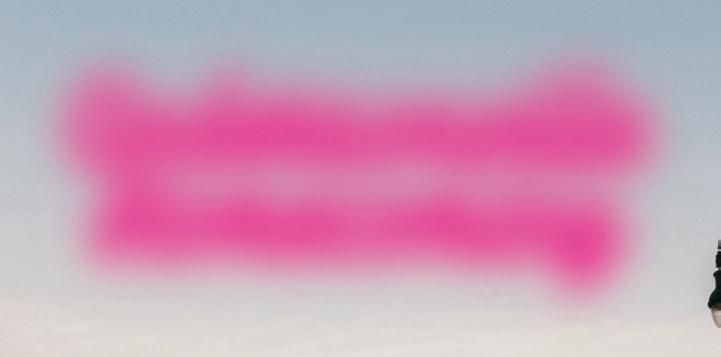
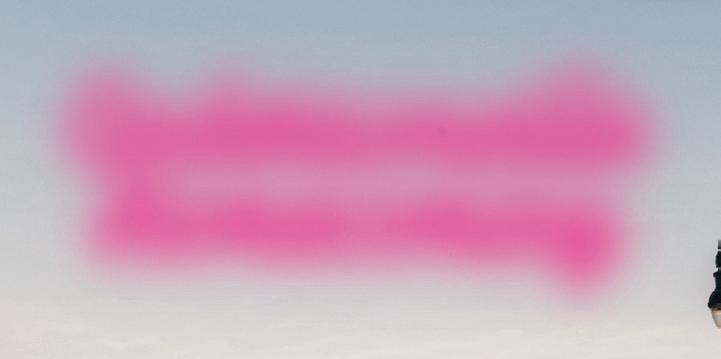



Q:How did you come to be involved in cannabis legalization and justice? And what is Cruel Consequences?
Tamara Netzel: I am a medical cannabis patient and began treating my Multiple Sclerosis after conventional treatment caused my liver to go into failure. I had been taking more than 15 di erent medications to treat MS symptoms, so, because my liver was involved, I could no longer take any of these. The thought that all my symptoms would progress and I would have no relief was depressing. Someone suggested cannabis, and it has improved my life in many ways since.
I became an advocate and testified several times in my state of Virginia for medical law reform since 2017. I knew I wanted medical cannabis for myself, but I didn’t know anything about the laws or what legalization was all about. I think I had even said back then that medical cannabis was enough for me, but I never advocated for legalization. I bought into the stigma myself. I didn’t know what happened to people charged for marijuana possession and I didn’t know anybody who had been criminalized, so that fed into how I felt. I was medically retired as a middle school teacher after my liver failure, and my husband is a retired colonel in the U.S. Army, so my life before cannabis was the furthest from anything to do with cannabis. I assumed that my government must have it right to criminalize these individuals, but I never bothered to learn more about it.
So, when I started to meet people in person who told me their stories of getting arrested for cannabis, I started to ask why these stories aren’t told. These people are just like you and me. And it was most egregious for me to learn about the collateral consequences to an arrest or conviction. Whether you get probation or a life sentence for cannabis, everyone su ers a life sentence of consequences like denial of employment, housing, and child custody, not to mention the shame people get from those around them. I had some media coverage of my own cannabis journey with local news and NBC Dateline, and telling my story was e ective in changing laws. This and my own experience of judging those criminalized before I saw them as human beings and my background in photography gave me an idea to create Cruel Consequences: Portraits of Misguided Law.
It’s designed to be a traveling portrait exhibit, and I have been taking the portraits around the DMV area (D.C., Maryland, Virginia) since 2018 to educate the community in the way that I learned. I feel the stigma of criminalization of cannabis is a huge part of changing the laws for the better. Cruel Consequences puts a human face to the issue, and we have changed many hearts and minds by allowing viewers to consider the human being behind the typical headline of a person getting
arrested and going to jail for possession of cannabis. We have been able to educate on this issue through booking events as an art exhibit, and in turn reaching members of the community who don’t normally talk about cannabis but are drawn in for the portrait art. We have displayed our portraits in some unique places to educate, for instance, a yoga studio, college classes, and political events. Currently, our portraits are displayed in our state General Assembly.
During the pandemic, we have not been able to have many in-person events, so we have pivoted to taking orders for permanent exhibits in cannabis businesses. We currently have sets of our portraits in six di erent cannabis businesses across the U.S. Several of our portrait participants have been mobilized as advocates by telling their stories and now help in advocacy by speaking at events and the media. Most of them were ashamed to let anyone know about their past, but telling their stories has empowered them to do more.
Our mission: We encourage communities to question assumptions and have open conversations to replace the negative stereotyped images of marijuana criminalization that keep Americans from Life, Liberty, and the Pursuit of Happiness.


Q: Explain the sort of “us versus them” dynamic at play here. Why is it important to share these stories, particularly from people of color?
TN: It is critical to tell these stories to educate and counter the decades of miseducation about cannabis, and because people of color are criminalized four times more, the stigma is much worse, thus the punishment tends to be worse. People of color are targeted more, and this makes it an issue of racism. We try to cover stories that are diverse in many ways, and many of our portrait stories serve to show the stark contrast of how one’s skin color plays into a person’s case, from charges to conviction and collateral consequences afterward. We’ve worked with college students and presented our stories without the portrait that matches them, having two very similar charges but a very di erent punishment. Then we reveal how the white person got the lesser punishment. It has been remarkable to see a person realize this when they compare our portrait stories.
Q: How can people and businesses support your work?


TN: We are a 501c3 nonprofit and operate solely by donations to educate and spread our message. Donations can be made through our website cruelconsequences.org, and businesses can give a suggested tax exempt donation to order their own beautiful canvas wrappedstyle Cruel Consequences portrait exhibit with accompanying story plaques. Contact us at cruelconsequences@gmail.com for more information.
This is a sponsored content series, paid for by Green Thumb Industries. Submit YOUR questions about expungement and record-sealing in Illinois to socialequity@gtigrows.com. Learn more about Cruel Consequences at www.cruelconsequences.org

“STOCKYARD INSTITUTE: 25 YEARS OF ART AND RADICAL PEDAGOGY”
Wed-Sun through 2/ 13/22 , DePaul Art Museum, 935 W. Fullerton, 773 - 325 -7506, depaul.edu
Artist Jim Duignan: “I’m not your teacher, I’m not a social worker, I’m not a priest, I’m here to build some practices.” COURTESY THE ARTIST ART FEATURE
 By KERRY CARDOZA
By KERRY CARDOZA
“What kind of a community do you want to live in?” That question, which can be found on the Stockyard Institute’s home page, is at the core of the organization’s identity. Founded by Jim Duignan in 1995, the Stockyard Institute is part civics project, part art practice, and wholly an experiment in liberatory social practice that aims to do nothing less than help participants reenvision and remake their worlds into something more equitable. Duignan is a galvanizing force. He works as an artist and visual art education professor at DePaul University’s College of Education and is also a world-class connector, adept at meeting like-minded folks and building relationships and networks into a never-ending web of collaborations. The Stockyard Institute has
been his primary concern for most of his working life, and its 25-year history was honored with a retrospective exhibition that opened in September at the DePaul Art Museum (DPAM).
The Stockyard Institute retrospective isn’t your typical blend of past artworks, documentation, and historical ephemera. It includes some of that, but Duignan prefers the term “prospective.” Duignan hopes that the museum show will provide an opportunity for him to connect not only with artist and teacher collaborators from the Institute’s past, but also forge new potential partnerships. “It’s going to be a kind of station to look ahead at the next 25 years,” he says. In addition to the work on view, the exhibition includes a working low-power radio station that broadcasts biweekly programs, a day of workshops for
musicians, and a series of public conversations and performances, among other events.
“It’s going to be a working retrospective in a way,” Duignan says.
This sort of community-engaged, multiauthored programming is typical of the Stockyard Institute. When asked about the exhibition, he immediately launched into a list of participating artists and collaborators. “You can really tell, for Jim, the relationships are the practice,” says Rachel L.S. Harper, one of Duignan’s longtime collaborators, and a curator of the exhibition. “He goes right into talking about what all these programs will be like, what people will be coming in and out, how the space will serve as an activation site for human beings being together and learning together.”
The first iteration of the Stockyard Institute coalesced in the mid-90s in the Back of the Yards neighborhood, which inspired the Institute’s name. Brother Ed Siderewicz and Brother Gordon Hannon, cofounders of the thenbrand-new San Miguel School, approached Duignan to put together an experimental arts curriculum for neighborhood youth who had left the traditional school system. Duignan began meeting with a small group of middle school-age kids; for months all they did was talk.
“I told them: I’m not your teacher, I’m not a social worker, I’m not a priest, I’m here to build some practices,” Duignan says. “They just kind of hung out until one of the kids had said one of his biggest fears was being shot in the back accidentally on his way to school. And it became a kind of moment where we pivoted and thought, ‘Well what if this group was a kind of design collective? What would this thing look like if we decided to build it?’ And it became really quiet in the space. I think that revealed a certain need that the kids had to present their voice in an authentic way that was very intimate, and it made me quiet too. And I thought, ‘Well, let’s move on this.’”
Duignan’s teaching philosophy is anti-hierarchical. He doesn’t begin with an idea or end result in mind but instead lets the project and the process come from the community he’s working with. The makeshift class spent months working on the idea, which resulted in the creation of Gang-Proof Suit. The project, part real-life armor against gun violence and part sculpture, resulted in a five-foot-tall suit made of chicken wire, papier-mâché, and found objects. Over the five years that the class worked on the project, designers, creative people from the neighborhood, and other collaborators were invited in to advise on logistics and other details. “I invited maybe 100 artists in that community over the course of the mid-90s to just sort of think about this project that I saw as a sort of artistic and pedagogical framework for how I wanted to work,” Duignan says. “And, as Rachel pointed out without me really realizing, this was a method. And that was kind of the beginning of that.”
Davion Mathews met Duignan around 1999, when he was in the fifth grade. Mathews was attending an extracurricular tutoring session at a school in Austin, when a room of clear bubble Macs caught his attention. Never having used a Mac before, Mathews sat down and quickly made a short movie. He and Duignan were both intrigued with one another, and made fast friends.
“We would just converse about different things and he would ask me different questions about projects,” Mathews says. “That’s how we will come up with a lot of projects that we worked on.”
One such project, developed for the art collective Haha’s public art piece Taxi, involved imagining a piece of digital advertising that would display on top of a cab. The ad was connected to a GPS program so that the ad text would change when it entered a new neighborhood. Mathews came up with the text, “Don’t mess with my fro,” in response to a classmate who was always pulling his hair. Mathews credits the Stockyard Institute with not only teaching him things he never would have learned in school, but for shaping the path his life took. He’s now a graphic designer who still
frequently collaborates with Duignan.
“I always replay my life in di erent scenarios,” Mathews says. “What happens if I never met Jim, if I never went into that room, what or where would my life be? I think it shaped it in a positive way, just having di erent opportunities and being able to learn certain things, just getting out of the community for one, seeing that there’s a di erent side to life versus what you see every day.”
Duignan is well aware of the long history of white artists, often older white men such as himself, entering into under-resourced neighborhoods and starting programs or projects with little or no input from the residents. He strives to operate in complete opposition to that type of colonial thinking. Duignan takes a democratic approach to knowledge-making, inspired in part by Brazilian educator Paulo Freire’s philosophy that students must play a role in the construction of their own education. Duignan also believes in sharing authorship of the Stockyard Institute’s work with all its participants. The museum publication that accompanies the DPAM exhibition includes a section on past projects, listing sometimes dozens of contributors for each work.
“What’s been important to the architecture of how Stockyard Institute has evolved, is that none of those relationships end,” Harper says. “It’s a cumulative network where every project has a slightly di erent quality because it contains the ones who were in the former ones. It’s like a big, rhizomatic family almost, of people who are interested in looking at how to create civic change and pursue justice.”
As a lifelong Chicagoan, Duignan also has a personal connection to each of the areas he works. His paternal grandfather worked in the stockyards from which Back of the Yards takes its name. Other family members lived in Englewood and Lawndale; his maternal grandmother taught at Hull-House, of which the social-minded communalism greatly influenced Duignan. As a kid, the whole city seemed ripe for exploration. It’s worth noting that the Chicago of Duignan’s childhood—he was born in 1958—looked very di erent from the Chicago of the 90s or the Chicago of today. “The city was always being built as it was being torn down,” he says in the DPAM publication. When he was growing up around Waveland Avenue, the area was rife with neighborhood gangs. Duignan sees some of his own experiences as a Chicago youth reflected in the lives of the young people he works with now.
“We were more feminist and sensitive to those kinds of conditions because we lived
them, playing with gang life and dealing with violence and substance abuse and all that stuff,” Duignan says of the Institute’s approach.
“I see in this practice someone coming from a very personal position of trying to work out the problems of his own personal experience in these neighborhoods,” Harper says. “It doesn’t mean that there doesn’t have to be a constant, foreground awareness of what privilege is and what it does, especially in association with big institutions like DePaul or other sort of ways. But the way I see it is like looking at all those institutions of privilege or institutions of plenty, and how do we sort of subvert the status quo narrative by connecting institutions so that resources flow di erently.”
Chicago is key to both Duignan’s practice and that of the Stockyard Institute. He uses the city as a medium, tapping into the histories and nuances of each neighborhood. The Austin Tourist Bureau, developed with a then-ten-year-old Davion Mathews, consisted of a used Chevrolet van that the pair used to o er guided tours of the neighborhood. Urbs in Horto , a collaboration between Stockyard Institute and the late artist Michael Piazza, was a yearlong activation of Austin’s Columbus Park, and consisted of radio broadcasts, impromptu music performances, information kiosks, sculptures, and more.
The Institute’s radio projects allow community members to record their stories and broadcast them directly to the neighborhood, a low-watt transmitter ensuring the range remains hyperlocal. The Institute initially thought of using radio not only because it’s low-cost and accessible, but also because its facelessness o ers a kind of anonymity. Duignan recalls in the mid-90s when police used high school yearbooks to identify local kids. “No one wanted to be photographed. No one wanted to be filmed,” he says. Radio became a perfect tool for kids to speak freely and safely, sharing sometimes intimate stories that they didn’t have other opportunities to talk about. Now with COVID-mandated social distancing, radio has again become an important, and safe, tool for connecting and sharing stories.
Similarly, the Institute’s ongoing planter boxes project was inspired by the homemade wooden boxes that lined the alleyways of Duignan’s youth. He and his friends would often hide treasured found objects, contraband, or notes for one another in the planters’ dirt on their way to school. Duignan has repurposed planter boxes for several projects. The planters evoke a specific Chicago feeling for
Duignan, portraying Chicagoans’ industriousness and the tactility of building something with your own hands. A 2011 iteration was labeled Gun, and served as a receptacle for discarded firearms. For 2012, he created one titled Salve for the Chicago Torture Justice Memorials project, which was planted with aloe and other succulents known for their healing properties. A new iteration is now underway, in collaboration with the University of Hip-Hop founder Lavie Raven and other artists, to paint 24 boxes for installation around Back of the Yards.
Looking back on the Institute’s first 25 years, Duignan recalls something the artist Julia Fish said to him when he was an art student at UIC in the early 90s. She said: “Your art, your life, and your work are a seamless, uninterrupted action.” It is true that Duignan’s life and work, both as an individual artist and with the Stockyard Institute, are so intertwined, it is hard to pull out just one strand or one project and make sense of it.
“The way I see it is this practice is only durational,” Harper says. “I have a suspicion based on that, to your question about how do you sustain it, I think actually the question for Jim would be how you possibly stop it, because I don’t think he can. I think it has a force that’s just his internal life force.”
Harper believes that Duignan is never out of the studio. His is a lived practice, where every encounter and every action feeds into the work of connecting people, building relationships, teaching and learning, and expressing oneself through art. In his work as a professor, he often plugs his students into Stockyard Institute projects. In turn, students and former students often invite him to take part in their own works. Duignan describes his practice as “what it looks like to use your whole life” in one’s art. “It’s about this very open, loving kind of relationship with the space and thinking that, all of the things that have happened to me, that’s the material that I use.”
“One of my big hopes for this exhibition, by examining a practice like this, is that we might all be able to see how all of our lives are seamless uninterrupted actions, that all of us are living as a work of art, whether we’re seeing it that way or not,” Harper says. “We can examine our own lives and the interconnected motivations of everything we do. That’s a sort of self-educational practice that helps us to more e ectively make the kind of positive changes in the world that we really wanna see.” v @booksnotboys

FALL ART LISTINGS
Here are some of the many art exhibitions to look forward to this fall.
By SALEM COLLO-JULINArt West
Myron Laban, Alexie Young, “Way Out West”
750 S. California artwestchicago.com
Open during events 10/1-10/3, and then by appointment
Arts Club of Chicago
Hannah Levy, “Surplus Tension”
201 E. Ontario artsclubchicago.org
Opens 9/30; Tue-Fri 11 AM-6 PM, Sat 11 AM-3 PM
Heaven Gallery
“Inflorescence” group show
1550 N. Milwaukee, second floor heavengallery.com
Opens 9/17; Fri-Sun 1 PM-5 PM
Soccer Club Club
Sadie Laska, “No Utopia For You!”
2923 N. Cicero soccerclubclub.com
Opens 10/8; Mon-Fri 10 AM-6 PM
Art Institute of Chicago Through 10/18:

Joseph E. Yoakum, “What I Saw”
Through 2/7/2022:
Mimi Cherono Ng’ok, “Closer to the Earth, Closer to My Own Body”
111 S. Michigan artic.edu
Mon, Thu-Sun 11 AM-6 PM
Block Museum of Art
Through 12/5:
Sky Hopinka, “Cloudless Blue Egress of Summer”
40 Arts Circle, Evanston blockmuseum.northwestern.edu
Wed noon-8 PM, Thu-Sun noon-5 PM
Co-Prosperity
Through 9/22:
“Recuerdos” group exhibition
3219 S. Morgan coprosperity.org
Wed, Fri 4 PM-8 PM, Sat 2 PM-6 PM by appointment
DePaul Art Museum
Through 2/13/2022:
“Learned Objects: Studio Works by William
Estrada, Regin Igloria, Nicole Marroquin, and Rochele Royster”
“Stockyard Institute: 25 Years of Art and Radical Pedagogy”
935 W. Fullerton resources.depaul.edu/art-museum
Wed-Thu 11 AM-7 PM, Fri-Sun 11 AM-5 PM
Document
Through 10/30: Claude Viallat 1709 W. Chicago documentspace.com
Tue-Sat 11 AM-6 PM
Museum of Contemporary Art Through 1/9/2022:
Alfredo Jaar, “The Structure of Images” 220 E. Chicago mcachicago.org
Tue 10 AM-9 PM, Wed-Sun 10 AM-5 PM
Newberry Library
Through 12/30:
“Chicago Avant-Garde: Five Women Ahead of Their Time”
60 W. Walton newberry.org
Tue-Sat 10 AM-4 PM
Roots & Culture
Through 10/9:
D Rosen and Vanessa Viruet, “Class & Classification”
1034 N. Milwaukee rootsandculturecac.org
Fri 4 PM-7 PM, Sat noon-6 PM
SAIC Galleries
Through 12/3:
“Earthly Observatory” group show Through 1/29/2022:
Alfredo Jaar, “This is Not America (A Logo for America)”
33 E. Washington saic.edu
Tue-Sat 11 AM-6 PM by appointment (Jaar piece is visible from the street)
6018North
Through 12/18:
“Raisin,” group exhibition exploring themes from Lorraine Hansberry’s play A Raisin in the Sun
6018 N. Kenmore 6018north.org
Fri-Sat 1 PM-5 PM by appointment v @hollo

















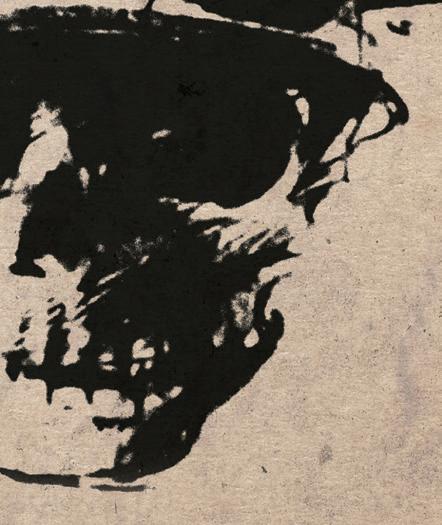









Open by appointment Tue-Sat through 12/3 (contact the gallery for reservations and more information). SAIC Galleries, 33 E. Washington, 312- 845 - 5910, saic.edu/exhibitions
“Humankind has always been very curious and driven to find out about life forms in outer space, but not so curious about life forms on the planet,” Giovanni Aloi said as he showed me each work of art included in “Earthly Observatory,” an exhibition that he curated with artist/scientist Andrew S. Yang. Over 30 artists are included in this expansive and almost overwhelming exploration of natural history in art, currently on view at the School of the Art Institute of Chicago’s Galleries at 33 E. Washington. Aloi and Yang are both SAIC faculty members and chose the word “earthly” for the exhibition’s title to convey the idea that we are all of the earth and we should not see ourselves as separate from the other creatures that exist on this planet.
As Aloi was making his observation about outer space, he was looking over a glass display case containing scattered letters and rocks. The letters were received by the Field Museum’s Pritzker Center for Meteoritics and Polar Studies, and are on loan for this exhibition. The letter writers are inquirers who have found meteorite-looking objects near their homes or elsewhere. There is one letter dated May 5, 1979, that reads: “Dear Sir, enclosed is a small fragment of a rock found in a farm field in Marengo, Illinois. The rock appeared to have a flat top surface as if from molten metal cooling to leave a surface parallel to earth’s surface. Please identify it for me.” Since none of the rocks sent to the Center were meteorites, they were instead dubbed by the museum as “meteor wrongs.” Yang reflected poetically about this in an Instagram post, “Discovery is wonder packed in an instant; a shooting star is a wish packed in a space rock.”


The themes of the exhibition seem especially relevant while we are still in the midst of a pandemic. Much of the artists’ work in the show attempts to capture something invisible, like the virus still circling among us. In his Borderless Bacteria / Colonialist Cash , Ken Rinaldo displays bank notes in petri dishes, revealing the bacteria that lives on monetary bills. Anaïs Tondeur’s eerie rayographs capture radioactivity in plants found at the
Chernobyl Exclusion Zone, while Dr. Walter Tschinkel o ers a stunning aluminum cast of an ant nest, revealing the architecture that ant colonies create in their habitats. Erin Wiersma drags large sheets of paper onto a burning tallgrass prairie, and the markings translate as beautiful charcoal drawings. As they are capturing the not-easily visible, these artists and many more included in the exhibition make us see beauty that is not usually seen through a human eye.
The exhibition also focuses on human interactions with the land, such as the concept of creating territory. “When Andy and I were thinking of ‘Earthly Observatory,’ we knew we had to expand the idea of natural history to think about what a natural history of today looks like,” Aloi explained. “Of course, acknowledging the history of the land is part of this idea of the observatory.” Three metal signs in a row present a historical reframing of Chicago. “Today your host is Ojibwe,” says one sign, with signs for Potawatomi and Odawa following. And in an e ort to spur discussion outside the physical space of the exhibition, replicas of these signs (made by artist Hock E Aye Vi Edgar Heap of Birds) have also been placed in front of SAIC’s former “Columbus” building, located at 280 S. Columbus (the school recently renamed the building to “280”) to create discussions outside the space of the exhibition as well.
The exhibition also creates the space to criticize the manner in which antiquated ways of observing and creating an “other” can harm our perspective of earthly beings and their close relation to humanity. In Jeannette Ehlers’s video aptly titled The Gaze, a row of people of color are looking directly into the camera, their gaze almost directly into one’s own eyes as an observer. Her moving video reflects upon the history of museums acquiring (sometimes stealing) objects from different cultures and forcing a particular definition upon them. “Earthly Observatory” emphasizes the power of art to transcend the human gaze.




















Josh Lipnik documents regional art and architecture on Midwest Modern.
By MEGAN KIRBYWhen Josh Lipnik answers the phone for our interview, he’s pulled over on a drive to Cleveland, on his way to take photos for his popular Midwest Modern Twitter account (62,500 followers and counting). Think of Midwest Modern like a photographic road trip through the region. Lipnik hunts out the hidden gems beyond the city skyscrapers or big-name architects; his posts instead capture design moments like the symmetry of a suburban bank or the unexpected grace of an o ce park. Scrolling his feed feels like sitting next to him in the passenger seat and watching the endless, underappreciated sites of the midwest slide by. Through his eyes and his camera, the beauty shines through.
Lipnik talked to the Reader about art and architecture, his favorite midwest spots, and the process of documenting it all for Twitter.
Megan Kirby: How did Midwest Modern start?
Josh Lipnik: I didn’t start until maybe the beginning of 2019 or the end of 2018. Originally [the account] was just under my name. I didn’t really think of branding it in any way. I was living in Columbus [Ohio] at the time, and I was home in Detroit for the winter holidays. I
just did a little tour of Detroit and posted some stu . It caught the eye of some other architecture people on Twitter and grew from there. At some point—I can’t remember exactly when—I changed the name to Midwest Modern and I started standardizing the text, and how the photos are presented. That’s when it started to take o .
Did growing up in Detroit affect how you think of architecture?
I’m sure it did on some subconscious level. Whenever I go somewhere, I’m always comparing it to Detroit. You have to go out of your way to search to find the good stu . The interesting building, or buildings by more well-known architects. You’re just exploring and figuring it out on your own.
That sounds like the vibe of your whole account.
When you’re growing up in the suburbs, in high school or whatever, all there is to do is kind of drive around places. From the time I could drive, I was always driving to other suburbs and looking for interesting houses or
interesting places. This was years and years ago, before I ever thought of doing [Midwest Modern]. I have always had that instinct, I guess, to search out interesting places, interesting buildings. Traveling with me, I’m sure, is really annoying, because I’ll just sort of pull over for anything that catches my eye.
When I’m going to a place, what I’ll usually do is I’ll have a little notebook. I’ll do some research beforehand. I have a few sources, and I’ll put together a little list and pin them on the map. Those are the landmarks. Then, I figure out if I’m driving or walking between these places. That’s where I can pick up on more of the texture. The signs. Miscellaneous, utilitarian buildings.
Since the pandemic, I didn’t want to travel too far, so I was going to a lot of smaller cities where I could drive in a day or whatever. Now that I’m doing a place like Cleveland, which is a much bigger city, I’m taking that same approach but doing it neighborhood by neighborhood. I’m looking at a neighborhood the same way I would have looked at a smaller city.
Are there any spots that you think sum up the account?
The first one is Concordia Theological Seminary in Fort Wayne, Indiana, designed by Eero Saarinen. That’s one of those places that really interests me. It’s a famous architect, a huge scale of a project. It’s in Fort Wayne, which is already not the biggest city. It’s sort of o in a suburban area, tucked away. I’m really interested in places like that: an architectural pilgrimage.
That’s one aspect of the account: looking at these buildings by famous architects that are in places that people aren’t necessarily going to visit.
You feature smaller architects, too.
There’s a bank that I posted from Youngstown, Ohio. It’s by an architect named Arthur D’Orazio, who was the main local architect there during the 50s and 60s. It’s this beautiful, round, midcentury modern bank with one of those zigzag folded roofs. It’s just a little branch of a bank. That’s where you see a lot of the experimentation from that era, the midcentury modern with smaller, more utilitarian buildings.

Also, the architect, Arthur D’Orazio, he’s someone that I’d never heard of. No one learns about him in architecture history classes. The only reason I knew who he was is that his granddaughter actually messaged me about him and sent me some photos of his projects. I’m very interested in architects who were based out of a smaller city. They never got famous in any way. They were never really in big magazines. But they really had a big e ect in shaping whatever place they’re from. Their whole career is tied to one place. To me, that’s the other side of the coin from finding buildings from those big-name architects like Eero Saarinen.
What about posts that aren’t specifically about buildings?
So, there’s another one from Youngstown. It was just a vintage 7 Up sign from, I believe the late 60s, by a designer named John Alcorn. It’s this really interesting psychedelic, Yellow
Submarine animation style. I’m interested in these leftover pieces of culture from the past. I think that’s a di erent side of what I do than the actual architecture stu . If I go to the city, I think of stuff like that—signs, or little ice cream stands, or old fast food chains—as like the texture of the place. And then the more serious architecture is like the substance.
How do people interact with your posts?
If someone had some experience of this place as a kid, I’m always interested. I’ll get stuff like, “My grandpa worked in this building in the 60s.” Little personal anecdotes or family anecdotes . . . I always appreciate those. I always think those are interesting and kind of nice, that people want to share that.
You have a Midwest Modern Patreon. What goes into that?
Basically, what I’ve been posting on there is kind of a combination of some behind-thescenes, or more travel stu . A little bit more
in-depth look at some of the places or buildings or architects that I’ve posted on the account. I’ve posted a bunch of buildings by that architect Arthur D’Orazio from Youngstown on just the regular account, but on the Patreon I wrote a little bit more about him, his background, and the actual house he lived in.
What makes Midwest architecture stand out for you?
Every city has its own vernacular, its own style. I don’t know if there is necessarily a uniform midwest architecture. But that’s interesting to me because there are these di erent subregions in the midwest. So in northern Michigan, where you have lumber towns, it’s going to look a lot di erent than somewhere in rural Ohio that was a farming town. Or somewhere like Youngstown that’s more like an industrial, Rust Belt type of midwest. I’m actually more interested in the di erent regional variations inside of that.


 By SALEM COLLO-JULIN
By SALEM COLLO-JULIN


This fall brings the return of the Chicago Architecture Biennial, an exposition of activities, tours, and exhibitions all over the city that highlight the power of architecture and the ways in which Chicagoans inhabit the spaces of the city. Although looking at skyscrapers and touring old houses are always edifying and fun ways to check out Chicago, the Biennial asks its audience to think harder, interact more, and gain an understanding about what the principles of the built environment really mean to our daily lives.
This year’s theme, “The Available City,” serves as a framework for a community-led

approach to the ongoing questions of the Biennial, which are also core concepts to consider when thinking about the things we build and the ways in which we inhabit space. How are we living? How do our choices affect Chicagoans in other neighborhoods? Who gets to make the decisions about how our cityscape looks? Why was this building put here, and why is that empty lot sitting there?
Programming for the Chicago Architecture Biennial will take place in various areas across the city, including Lawndale, the South Loop, Woodlawn, Edgewater, and also online. It all kicks off with celebrations on Saturday 9/17
and Sunday 9/18, which include the debut of the CCA Academy PermaPark, a project by the Bittertang Farm group (Saturday’s event at 1320 S. Pulaski will include a vaccination clinic and a barbecue), and the kickoff for the Englewood Village Plaza project built by Atelier Bow-Wow (Saturday’s event at 58th and Halsted launches a new regular outdoor Englewood Village Market with fresh produce and activities for kids).
For a look at architecture gone by, consider going to Wrightwood 659 this fall to see “Romanticism to Ruin: Two Lost Works of Sullivan and Wright,” an exhibition of photo-
graphs and research about two buildings that are no more: Louis Sullivan’s Garrick Theatre Building in Chicago and Frank Lloyd Wright’s Larkin Building in Bu alo, New York. Wright’s building was up for 44 years, and Sullivan’s Garrick Theatre Building stood for 69 years at 64 W. Randolph, but even photographs of the buildings’ ruins showcase the imposing physical presence and architectural legacy that these two structures carry to this day.







































Vershawn Sanders-Ward is building a cultural community hub in Woodlawn.
By IRENE HSIAO“When you realize there’s inequities, and there’s not as many performance opportunities or presentation opportunities for certain artists, you have to begin to make those spaces for yourself,” said founding artistic director and CEO of Red Clay Dance Company Vershawn Sanders-Ward in 2019. Now Red Clay, a company with a mission of teaching and performing dances of the African diaspora to advance cultural and socioeconomic equality, has opened a home of its own in the Woodlawn neighborhood of Chicago on a bustling thoroughfare just steps away from the 63rd Street Green Line.
Autonomy over a place to gather and create has always been central to the vision for Red Clay. Sanders-Ward first encountered Senegalese choreographer Germaine Acogny during her undergraduate studies at Columbia College. After graduating with an MFA in dance from NYU, Sanders-Ward continued her studies for three months at Acogny’s school in Toubab Dialaw, Senegal. Her experiences at the International Centre for Traditional and Contemporary African Dances, otherwise known as École des Sables, not only informed her choreographic voice but solidified her determination to build a company, and with it, a thriving community.
“Not only did [Acogny] have an amazing company that toured the world, but her school was a community hub,” she says. “Artists could come and learn, and it brought international artists to this small fishing village that they probably would never come to if it were not for her building this amazing compound.
That was the first moment I realized dance could be a driver economically for community. Arts could infuse opportunity and dollars and tourism into a really small neighborhood and make it visible to the world. Now, because of her school, everyone knows Toubab Dialaw. It’s not in Dakar, it’s not in the big city, it’s in the small fishing village that her father grew
up in.” Witnessing the impact of École des Sables also reinforced Sanders-Ward’s desire to return to her hometown to develop her art. “The more art you have around you, the more wealthy your community is. [Toubab Dialaw] was able to really see their wealth and their value. And vice versa—people coming there could see the value of the people there.”
For the past decade, Red Clay has rooted itself on Chicago’s south side, first in partnership with the Gary Comer Youth Center on the 7200 block of South Ingleside, then with the Chicago Park District at Fuller Park, a block from the 47th Street Red Line station. During the company’s five-year tenure as a Fuller Park arts partner, Red Clay has gradually transformed the space it was given into a viable home for dance by investing in its infrastructure.
“The room we were using was a woodshop before we came—with a floor that was scraping up our knees,” recalls Sanders-Ward. A performance at the DuSable Museum Roundhouse—formerly a horse stable (“It was literally a horse stable. It was cement. Dirty cement.”)—drove the company to action. In 2016, dancemaker and educator Onye Ozuzu initiated Project Tool, a program for dancers to build their own sprung wood floors by hand. Sanders-Ward contacted the Sweet Water Foundation, which now stewards the floors, to help Red Clay build floors and seating for the Roundhouse and Fuller Park’s woodshop.

“Thanks to Onye’s project, Sweet Water knew how to make the floors—and we left that behind,” she says. “When we moved here, we left the floor and the marley so that if any other dancers come after us, this is a dance space now. Don’t flip it back into something else! We also put up mirrors. So over five years, we made an investment. Dance space is so limited, especially south of Cermak. Just knowing that there’s another location where people can go if they need rehearsal space feels good. It felt really good to leave the park in a better place than it was when we got there.”
But the pandemic shutdown and the closure of parks buildings, with no guaranteed date of reopening, pushed Red Clay to seek greater independence. “The shutdown happened in March, and we thought we’d just wait it out,” Sanders-Ward says. “The summer went by, and we were approaching fall, and it just didn’t sound promising. We found this space in September 2020.” Empty since construction was completed in 2019, the storefront space now hosts two studios—one with marley, the other with hardwood—and both equipped to live
stream, as well as a conference room and o ce and storage space for Red Clay sta .
Her intentions for how the space will be developed reflect a commitment to partnership and mutual growth. “I want this to be a community hub, an École des Sables here in Chicago, a place where artists from around the world want to come and share their gifts, as well as being a place for south-side artists to have a home base,” says Sanders-Ward. “We’re still working on what that would look like in terms of programming. I’m not interested in replicating other residency models or rentals—I want a real relationship with the artists who use this space. What is their process? When do you need space?

“I found, before Red Clay had a space, the residency applications never aligned with when I had an actual idea. Like, I don’t have any ideas right now, but the application is due! But then when I had the idea, I missed all the deadlines. That always stood out to me. So why isn’t there a flexible kind of thing, where artists can have access to space as it’s needed? And how do I find ways to support this space that’s not o the back of artists? I don’t need to make my rent by charging you rent. It’s so transactional—it goes against everything Red Clay stands for in our mission and vision and values. I don’t want it to be transactional. I’m trying to figure out a way to make it reciprocal. I don’t have the answers. I’m asking artists, individual choreographers, what kind of arrangement with the space would benefit you? And what would you bring to that space? I’d
like to design a program that has space for individualism. It may mean we can’t support 8,500 artists, but we can fully support the ones that are here.”

In the meantime, Red Clay has been working with another south-side organization, Urban Growers Collective, to develop new work on land practices and urban communities. “Urban Growers Collective is adamant about teaching communities about food: food injustice, food disparities, how do I cultivate my own food for myself?” Sanders-Ward says. In a residency at Trillium Arts in Mars Hill, North Carolina, Sanders-Ward and her dancers began to explore themes of land cultivation, connection to the land, and how Black bodies connect to land labor.
“We’re deepening our research into land practices and trying to translate that back to more urban communities. It feels like the time for us to go big and do something outside the theater. For a project like this and how we’re trying to engage community, we need to take our time. No one’s rushing back into the theater right now, so why not take our time? We need time to create. Before we had our own space, our timeline was not really our timeline, it was someone else’s timeline that we had to fit ourselves into. So now we have the time to figure out, what is our workflow? How much time does it take for us to envision something and see it through? It feels good to be able to breathe into that.”

 By YASMIN ZACARIA MIKHAIEL
By YASMIN ZACARIA MIKHAIEL
If you stumbled across beaming and boisterous Chicagoans smashing ceramics on the side of the road, would you label it as camp, thinking it could be a performance piece? As more and more arts and culture events pop up outdoors in this limbo of pandemic living, you wouldn’t be so far off. It’s camp! More specifically, this smash pop-up was a part of the Cultural Asset Mapping Project (CAMP), an initiative that partners with artists to support the documentation and sustainability of the arts on Chicago’s south and west sides. These ceramic bits and pieces became a mural that occupies a wall at 71st and Je ery, thanks to artists Rashada Dawan and Margaret D. Morris and the Chicago Park District’s creative placemaking initiatives.
From 2015 to 2020, before CAMP, Re:Center existed as a “long-term visioning process for all 15 cultural centers in Chicago Park District’s network.” Over the course of five years, each cultural center entered a three-year process to provide an intentional home for public
programming that supported civic engagement, encouraged learning, and platformed creative gatherings. Park staff, artists, and community members collaborated to envision and produce a future for the cultural arts that was equitably resourced and reflective of their neighborhoods.
CAMP continues this model with artists at the helm, in partnership with the Department of Cultural A airs and Special Events (DCASE) and the League of Chicago Theatres. Since CAMP launched just as the pandemic made waves through the world, the first phase pivoted from the imagined in-person gatherings to that of virtual workshops and Internet-based tools. (Although as it became safer to host outside events, Dawan and Morris advocated for events like the smash pop-up.) Thirteen artists from across Chicago were welcomed as a grant-funded cohort and partnered in pairs to produce one of the most key elements of the CAMP initiative—an interactive, community-created digital map of arts and culture. This
community storytelling and data visualization project has been documenting histories that combat the narrative that historic disinvestment means that vibrant artistic communities don’t exist on the south and west sides.

CAMP’s digital hub features stories of people, places, and programs gathered both by their cohort artists and community residents themselves. Anyone can contribute to the public Cultural Asset Map by filling out a survey that collects data focusing on an individual’s memories through written or spoken stories. Participants can also upload images and videos to supplement their stories. By design, this interactive map lives on the CAMP website as a collaborative project with an ethnographic framework.
Meida McNeal, arts and culture manager of the Chicago Park District, describes her practices as an artist, academic, and administrator as a “braided web” in which she explores “how the body and performance of cultural histories and legacies are important sources of knowl-
edge.” Her background in ethnography also shines in her work as the artistic/managing director of Honey Pot Performance, which informs her work of approaching “macro issues at a community scale.” She describes CAMP as an evolution of Re:Center in that they are taking the “blueprints” of previous public programming and investing in the infrastructure that can “rally support and amplify the importance of cultural resources being as integral as sport and recreation.” Re:Center made space to investigate the needs of Chicago cultural centers and their communities. CAMP puts these blueprints into action as a community-engaged method of activating art and culture spaces that haven’t had the visibility and resources like their counterparts on the north side.
Additionally, CAMP staff designed their initiative to strengthen artist relationships across the neighborhoods. Actress and vocalist Dawan (founder of B.FLI Productions, Inc.) and movement and sound artist Morris were paired by CAMP to serve the South Shore Cultural Center. “We didn’t know each other at all before this project and through it, we realized our energies were way more similar than we really knew,” says Dawan. In pairing artists with di erent practices together, the project also lessened the silos between a range

of mediums from dance, theater, visual arts, and beyond.



When discussing the history of the South Shore Cultural Center, Dawan recalls her parents got married there (like the Obamas) and it “used to be a hub for all things community, whether it was jazz, concerts, rodeos, barbecues.” But in recent years, “it has kind of transformed into a sort of private club,” she adds. Now Dawan hosts healing circle workshops where community members show up to talk about the history of their communities and what they envision for the future. With CAMP, Dawan was able to help revitalize a cultural institution that played a huge role in her youth as a budding vocalist and dancer.
In Humboldt Park, theater artist Miranda González, artistic director of UrbanTheater Company, also shares the impact of archiving the stories of her own community in the face of rapid city change. “It always shocks me to know how much Humboldt Park has been gentrified, and how much displacement has actually taken place, and how it’s directly a ected families that I grew up with,” she shares.
In collecting stories for CAMP, she can’t help feeling the “nostalgia of a neighborhood hotdog stand that everybody used to go to or the way that they used to play with their neighbors.” She shares a sentiment with Dawan, noting, “It’s not very often that you see children in the city playing on a block.” As Chicago continues to reopen amidst the pandemic, González is hopeful her company and
future phases of CAMP will remain receptive to the needs of their neighborhoods through projects that name inequity and restore cultural wealth.

At the end of this first phase of CAMP, which focused on data collection and public programming, a final report was released breaking down the initiative’s findings and recommendations for how the city can continue to invest in historically disinvested artist communities and neighborhoods. Chief among the strategies is continuing programming that fosters “connections between artists and community members, and activate[s] public resources such as parks, schools, libraries, and neighborhood community gathering spaces.”
In order to ensure these findings have a measurable impact on Chicago’s arts and culture landscape moving forward, Nina D. Sánchez, codirector of Enrich Chicago, facilitates monthly CAMP Conversations along participating artist cohorts. She contends that if “we are embarking on a project of anti-racism and equity,” it must have “at its core, voices, lived experiences, and leadership of people who have been impacted and marginalized by systemic racism and oppression.” Like the smashed ceramics, something beautiful can emerge from piecing together lost legacies and community history when paired with the opportunity to gather and invest in the neighborhoods they were created within.
fined Chicago theater from the beginning—for good and sometimes not-so-good.
Edited by Megan E. Geigner, Stuart J. Hecht, and Jasmine Jamillah Mahmoud, the collection of ten essays grew out of various presentations and panels over the years, particularly at the May 2011 symposium at Columbia College Chicago, “Chicago: Theatre Capital of America—Past, Present, Future,” put together by Reader contributor Albert Williams, former Columbia theater department chair John Green, and the late Arvid “Gus” Sponberg, a professor at Valparaiso University and founder of the Chicago Theater History Project.
But despite its clear academic origins, the contributors here (much like the artists and companies they anatomize) know how to plant their flags in the liminal space between history and theory, popular entertainment and experimentalism. Arranged in chronological order, the book begins with Rosemarie K. Bank’s exploration of the Midway Plaisance at the 1893 Columbian Exposition. Bank argues that, while racist cultural exploitation was certainly woven throughout many of the exhibits, the Plaisance o ered “a place of transgression and border crossing, an alternative to the power narratives of the White City,” and “the central place from which these discourses speak their history.”
Makeshi Chicago Stages explores the story of DIY in our city’s drama.
By KERRY REIDTo cover Chicago theater is to carry a ghost map in one’s head of all the lost spaces. Some buildings are gone altogether, like the original Goodman Theatre at the Art Institute, or the Jane Addams Hull House Center on Broadway at Belmont, which at various points housed Steppenwolf, Bailiwick Repertory, Famous Door, and About Face. (It was replaced by a health club; the Hull House space in Uptown, which once housed Organic and Black Ensemble Theater, was also demolished.) Some are so transformed
as to bear no resemblance to their old theatrical roots. Every time I step into the Brown Elephant on North Clark, I remember when it was the drafty Calo Theatre, where friends produced James Joyce’s Exiles in the early 90s with what one waggish cast member called “authentic Irish heating.”
But ephemerality is the nature of the beast in theater and real estate. A new book, Makeshift Chicago Stages: A Century of Theater and Performance, makes a cogent and compelling case that transience and a DIY ethos have de-
One of the aftere ects of the 1893 fair was the creation of an artists’ colony on 57th Street, which Hecht identifies as the beginnings of both the “little theater” movement in Chicago and the actual Chicago Little Theatre, founded by husband and wife Maurice Browne and Ellen Van Volkenburg in Hyde Park. (The latter soon moved downtown to the Fine Arts Building and carved out an experimental space there, as described in a chapter by Shannon Epplett.)
The artists who called this stretch of live/ work spaces home not only created art—they created salons about art that anticipated the ways theaters now practice “community engagement” with talkbacks, panels, and other ancillary programs. Hecht also identifies schism as a force for change: the Players’ Workshop, formed in 1916, came about when several women involved with the Chicago Little Theatre grew disgruntled with Browne’s leadership and started their own troupe, focused exclusively on Chicago playwrights.
What’s most impressive in Makeshift Chicago Stages is the manner in which all the contributors resist the lazy David vs. Goliath narratives that sometimes permeate discourse about Chicago theater. Geigner, for example,
MAKESHIFT CHICAGO STAGES: A CENTURY OF THEATER AND PERFORMANCE
Published July 2021 by Northwestern University Press, 344 pages, $ 34 95 paperback.
lays out a compelling case for the Goodman in its earliest days as a theater that provided “equitable exchange between immigrant and community theater and the largest and oldest regional theater in Chicago.”
Chicago’s history of racism and segregation cannot be ignored, however. Aaron Krall’s chapter on Theodore Ward’s Big White Fog traces the fascinating history of a groundbreaking 1938 play about a Black family from Mississippi struggling to make it in Chicago’s “Black Belt.” Ironically, the play itself did well when presented under the auspices of the Federal Theatre Project in the Loop, but failed to find audiences when it moved to the south side.
The Lincoln Avenue o -Loop movement of the late 60s and early 70s, the rise of iO, the birth of Teatro Vista (and other Latinx companies), and the boundary-crossing work of Theaster Gates all get their own chapters, and all of them focus on the struggle to change the definition of what a theater space can be. (The Lincoln Avenue companies, as Cat Gleason recounts in her chapter, famously had to fight City Hall to get fire codes that dated back to the Iroquois Theatre disaster updated for the new storefront models that were emerging.)
The book concludes with Mahmoud’s interviews with the founders of the Chicago Home Theater Festival (including Meida McNeal, who is also a lead coordinator for the Cultural Asset Mapping Project; see Yasmin Zakaria Mikhaiel’s feature this issue.)
Inspired by Philip Huang’s 2010 International Home Theater Festival in the Bay Area, the Chicago festival brought people around the city into neighborhoods like East Garfield Park for walking tours, followed by a visit to private homes for meals, performances, and discussions. As McNeal puts it, “We need to find ways and reasons to be in each other’s neighborhoods and spaces and to allow interactions to happen, through which we might not know what will happen.” An epilogue addresses the COVID-19 pandemic and the ongoing protests against systemic racism and police violence and how theater might “survive, grow, and change in reflection of these crises.”
Makeshift Chicago Stages joins a growing line of thoughtful and nuanced books (including Mark Larson’s oral history Ensemble) about how Chicago theater has carved out its own places time and again. There may be a ghost map of venues, but the ideas and experimentation born from those places live on. v
@kerryreid

THE GOLDEN GIRLS: THE LOST EPISODES, VOL. 5 SEX!
Previews Thu-Sat 9/ 16 -9/ 18, 7: 30 PM; opens Sun 9/ 19, 7 PM; regular run 9/24 -10/23, Fri-Sat
7: 30 PM, Sun 3 PM; also Thu 10/21, 7: 30 PM, Leather Archives & Museum, 6418 N. Greenview, $27 general admission, $ 35 -$ 45 reserved/VIP seating (includes 30 -day membership to Leather Archives), 18 +, proof of COVID-19 vaccination required, goldengirls 5sex.eventbrite.com.
The Golden Girls: The Lost Episodes, Vol. 5 SEX!
campy, slippery look at senior sexuality. In the first, Rose—originally played by Betty White—lures her boyfriend to the Pleasure Dome, a Miami hotspot that’s sure to relight their fire. Blanche and Dorothy tag along for “support.” Meanwhile, Sophia takes on “a mysterious part-time job that keeps her out all hours of the night.” Episode two witnesses the unthinkable as Blanche takes a vow of celibacy. Sexy antics ensue.
For Cerda, this classic approach to drag has a meaningful place in the ecosystem of queer performance.
“I know we’re kind of old school, but we try to touch on lots of di erent things,” he says. “It’s like when a dog is sick and you wrap a pill in the bologna. We wrap some hard truths in our campy bologna.”
Hell in a Handbag whips Chicago theater back into shape at the Leather Archives & Museum.
By KT HAWBAKERWhen we talk about The Golden Girls, we need to talk about sex.
According to Buzzfeed, the four women had over 260 lovers over the course of seven seasons, with Blanche Devereaux clocking in at 165. (Get it, girl.) In a truly stupid culture that often treats women over 40 as untouchables, the sitcom’s depictions of grandmas who fuck are actually pretty radical—especially for broadcast TV at the height of Reaganism and all of its poison.
It’s fitting, then, for Hell in a Handbag’s The Golden Girls: The Lost Episodes, Vol. 5—SEX! to be staged at the Leather Archives & Museum (LA&M) in Rogers Park. It’s a new collaboration between the storied research library and theater company, though both display lovingly confrontational approaches to queer lives and non-normative sex. Handbag, which opens its 20th season with SEX! , famously puts on original drag parodies, with many produced at Mary’s Attic, upstairs from Ander-
sonville’s Hamburger Mary’s (RIP). LA&M is a singular research library and museum devoted to leather and kink; it just turned 30 this year.
Handbag artistic director David Cerda and LA&M executive director Gary Wasdin both identified how drag and leather seem like polar opposites but really possess the same kind of extreme, larger-than-life visages.
“With leather, you might think of this dark, black intensity—like Tom of Finland—versus drag, which is this bright, extravagant act,” says Wasdin, who has been with the archives since January 2018. “Both are political acts, however. They’re these statements of power.”
Wasdin says it’s impossible to do drag without being political; the same goes for leather.

Cerda echoes this sentiment, citing the way his performances act as a reclamation of self and cultural fantasy.
Spatially speaking, the Leather Archives’s building was a site of worship and spectacle long before doms and leather came into play.
Initially a synagogue built in the 50s, it became a black-box theater in the 90s. After beginning in local gay icon Chuck Renslow’s o ce in 1991, LA&M moved into the 10,000-square-foot building in 1999 and fully acquired the space after a few short years.
Handbag’s show will take place in the LA&M’s Etienne Auditorium, which is named in tribute to the late artist whose murals line the walls. The homoerotic paintings, composed by “Etienne” (Domingo Orejudos), originally hung in Man’s Country, the legendary gay bar he established with Renslow, his first lover.
It’s an ideal home for Handbag’s first live show since the pandemic ruined the party. Cerda, who cofounded Handbag, wrote and will star in this latest iteration of the company’s Lost Episodes series. (FWIW, he makes a great Dorothy Zbornak.)
The two “episodes” featured in the new show (directed by Madison Smith) take a
While the end goal is a transformative experience, Handbag also has a very loyal, tightly knit following. It’s the drag show you can take home to meet Mom—I took my mother-in-law to see Handbag’s The Drag Seed on her first trip out to Chicago after I married her son. In my mind, it was an introduction to the family I came from: midwestern queers who powerfully hated high school.
Cerda, a native of northwestern Indiana, is also a part of that family. He says that one of the reasons he chose The Golden Girls as a vehicle for these shows is its mass appeal and stealthy radicalism; he’s not the show’s number-one superfan, but he understands the power of pop culture and its ability to save lives.
What’s particularly moving about this collaboration, however, is the way it marks time. When LA&M began, the LGBTQ+ community faced genocide at the hands of its own government during the AIDS crisis; when Handbag came to fruition, our country was mired in the flag-waving nationalism of the early post-9/11 world. Here we are in a moment when a pandemic continues to destroy the most marginalized while white jingoism steamrolls the last of our better angels. It’s a brutal context for this artistic duet, but its cracks are still letting light in.
Picture it: A ragtag group of drag queens gear up in wigs and leather, surfacing joyfully after months of isolation, down the road and back again. v
Two visionary masterpieces of American architecture that were razed to erect a parking lot and a truck stop will be memorialized this fall in an exhibition at Wrightwood 659 beginning September 24. Romanticism to Ruin: Two Lost Works of Sullivan and Wright explores Chicago’s Garrick Theatre, designed by Louis H. Sullivan and Dankmar Adler, and Buffalo’s Larkin Building, designed by Frank Lloyd Wright, through two distinct presentations that investigate the full life span of these long-lost treasures from design and use through their tragic demolition.


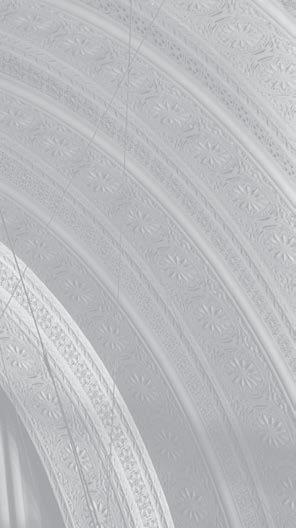


IMAGE CREDITS




10/8-11/6
with one of the four authors,” says director Ed Rutherford. “Dr. Horrible—his story—it’s an allegory. He’s this angry young man living alone, connecting to people online and not in person, feeling entitled to some kind of recognition or glory he’s not getting. Especially when it comes to female a ection.”
Movie and TV producers, “hungry for good stories,” will pay $250,000 plus for a script!
Grant Robbin, professional writer-producerteacher (Northwestern, Columbia College), has Hollywood connections and will help you develop/market your script - film or TV.
One-on-one sessions. Zoom or phone. (One hour TV pilots are only 50-60 pages!)
“If you want to be a Hollywood Screenwriter, call Grant Robbin.” - Chicago Tribune
Black Button Eyes examines toxic masculinity in Dr. Horrible’s Sing-Along Blog
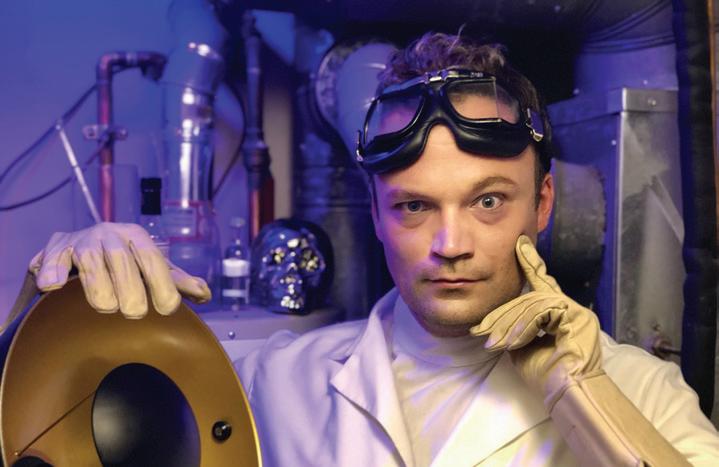 By CATEY SULLIVAN
By CATEY SULLIVAN
Midway through the first act of Dr. Horrible’s Sing-Along Blog , there’s an unforgettable duet between the bonkers, titular villain and Penny, the woman he’s loved ever since spotting her at the laundromat while his socks and such tumbled and spun.
As their voices twine together in “My Eyes,” Dr. Horrible sings of a world as corrupt and compassionless as a pound of tilapia left in the back seat for three weeks in August. Penny sings, wonderstruck, of humankind’s infinite goodness, a world where harmony is ever on the rise.
Depending on which voice you key into (or perhaps what kind of day you are having), the number’s final bars are pure elation or cynical despair.
Still, it’s not hard to find the show’s hero, says Kevin Webb, who plays the aspiring supervillain in Black Button Eyes’s staging of Dr. Horrible, opening in previews October 8. The run is a benefit for Season of Concern, with 20 percent of gross proceeds and anything left over after expenses going to the nonprofit.
“Penny’s obviously the one decent person in the whole story. But she’s surrounded by these toxically macho men who think they’re owed something. Owed her,” Webb says.
We have a word for those guys now, one
that didn’t exist back in 2008 when authors Maurissa Tancharoen and brothers Joss, Jed, and Zack Whedon penned Dr. Horrible as an Internet miniseries. Now, the bad doctor is often seen as the archetype for the legions of incels, those weapon-hoarding, woman-hating, petulance-fueled angry manbabies who are involuntarily celibate and believe every woman they encounter (except, perhaps, their mother) is to blame.
“You’ve got two men abusing their power and privilege. Both seem to believe wanting something and deserving something are the same. It certainly makes you think of the context,” says Stephanie Fongheiser, who plays the saintly, unwitting love interest of both Dr. Horrible and his archenemy Captain Hammer (Tommy Thurston) for Black Button Eyes.
That context is enraging and exhausting in its banality.
During the long, COVID-wrought time-out, Dr. Horrible made news not on its considerable merits as a musical, but as a sidenote in the ongoing chronicle of decades of sexual abuse and harassment allegations against coauthor Joss Whedon.
“I think it’s important we recognize that thematically, so many elements of this piece seem to have additional resonance, regardless of, and maybe because of, the situation
Quick plot recap (minus spoilers): Dr. Horrible yearns to join the big boys at the table of the League of Evil. He also pines for the good-hearted Penny, who has devoted her life to working in soup kitchens and building homeless shelters. His archrival Captain Hammer, meanwhile, plots to make Penny his own whilst showily trumpeting his own heroism. (You know him: Hammer is the loud guy on the socials who takes selfies giving food or dollar bills to the unhoused or indigent, always centering the frame on himself, his benefactors smiling obediently for a picture he didn’t ask if he could take.)
“For me, a lot of it came down to the fact that we’re giving the money back to the community,” Webb says. “I don’t think Joss Whedon is going to make a buck here. What’s been interesting is looking at the way the piece deals with people like him, and the destruction they can cause.” Webb adds, “It gets a bit meta, almost like a snake eating its own tail.”
After COVID canceled the show’s planned 2020 run, Rutherford remained determined to make the benefit work.
“What Joss Whedon gets from the rights, that’s not transparent to me from the payment structures set up for getting the rights. We’re focused on getting money to Season of Concern because artists need it so badly,” Rutherford says.
As for the show’s hero? That remains Penny.
“She is the one out collecting signatures. Enacting positive change for her community. Doing all the little things everyone can do to make the world better. Dr. H could learn that lesson from Penny, but—and I know this sounds melodramatic—he embraces nihilism and darkness instead.”
“It’s easy for Penny to be reduced to ‘the nice girl,’” Fongheiser says. “I really want to find the strength and depth that is innate in Penny, not a stereotype, not an archetype like the men who have manipulated their way into her life. While they’re busy being ‘heroes,’ she’s actually getting stu done.”
@CateySullivan
The Saints are ready to welcome you back.
By MARISSA OBERLANDERTearing Lady Gaga’s ticket. Seeing a tenor dropped in Tosca . Grooving to Mavis Staples from the rafters. These are the magical moments that happen with live performance. They are also just another Tuesday night for The Saints, the quiet backbone of Chicago theater that’s never stopped working, lockdown be damned.
The Saints is the only organization of its kind nationally, a group of nearly 1,300 volunteer ushers who are the first to greet you at nearly any performance worth attending across the city. These uno cial concierges for Chicago performing arts describe their role simply—to welcome, to be of service, and to support Chicago arts organizations with their time and financial resources.
The group’s origin story is well told, dating back to the 80s and the end of young David Mamet and William H. Macy’s heady run at St. Nicholas Theatre. After the theater closed, a dozen volunteer ushers took their talents elsewhere and word spread, as box o ces across the city seized the opportunity for valuable
outsourcing. Key shows and venues, like The Phantom of the Opera and the Chicago Symphony Orchestra, have boosted membership by hundreds over time, and in recent years this all-volunteer squad has reached more than 2,300 members (COVID-19 caused a downturn last year).
For many longtime arts lovers, what they call “ush-ing” has become a uniquely fulfilling second act in retirement. For Stephanie Stephens, it staved o fears of a “couch potato” lifestyle and any financial stress around her favorite activities. For Trudy Meltzer, it was a natural extension of her work in Chicago Public Schools exposing children and their families to theater. For Hugh Spencer, a Saints lifer, ushering has always been the throughline, from his high school days at Ravinia to meeting his wife at the Goodman to decades at the Lyric Opera.
Theater gives us direction in a multitude of ways, and many came into sharp relief when the pandemic closed the curtains. It asks questions, creates common ground across cultures,
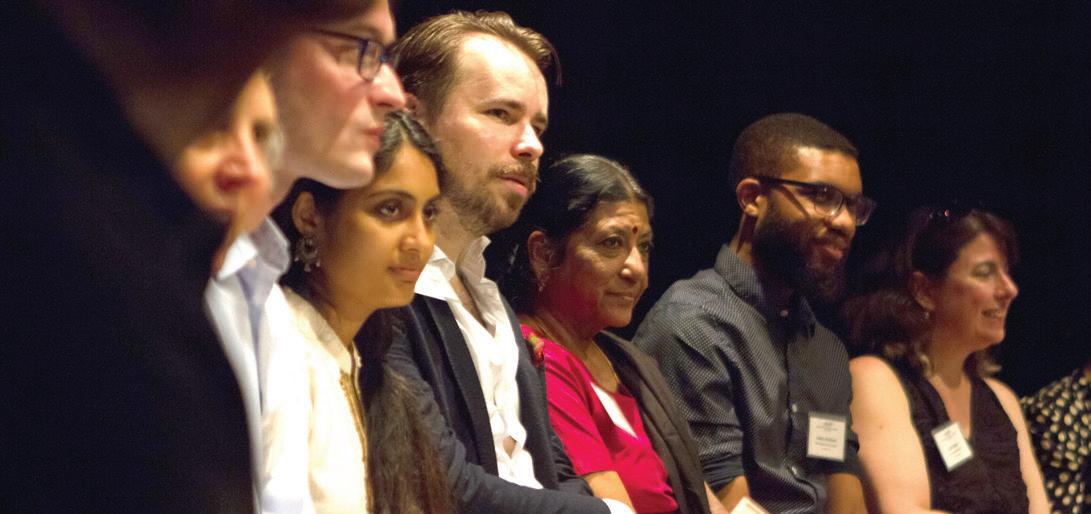
and keeps us in the present moment in a way screens have nearly destroyed. “It’s a place to go that’s home, that’s familiar, that enriches me. That’s what The Saints do. That’s what going to the theater does,” says 80-year-old Tom Lembo, a 15-year Saint.
The seven Saints I spoke with have felt the loss of theater in their lives acutely, calling it a “very big hole.” Some had ushered almost daily, relying on the organization as a source of structure, social life (from barbecues to extracurricular trips to outdoor Shakespeare at American Players Theatre in Spring Green, Wisconsin), and stimulation—a way to consistently engage with their passion for the arts. Hope may have been hard to come by, but they never stopped showing up for the Chicago arts scene. In March 2020, the group’s $25,000 donation kicked o the Chicago Theatre Workers Relief Fund, which went straight to unemployed local theater artists.
The Saints have a long history of philanthropy. The group has awarded $1,150,000 in arts grants since the program’s inception in 1992
Recipients at the 2018 Saints grants award celebration GRACE PISULA
and will have matched more than $100,000 of Saints donations to participating companies by January. The arts grants aren’t large, capping o at $5,000, but they’ve moved the needle for storefront theaters in meaningful, personal ways. A grantee once brought their torn stage curtains to the grants presentation, a touching reminder of how much theater gives us with so little. In support of this mission and with no free theater to gain, 1,244 of the Saints renewed their membership during the pandemic.
After this past year’s pivot to well-attended virtual programming with speakers like Tribune theater critic Chris Jones and Black Ensemble Theater founder and CEO Jackie Taylor, The Saints are squarely focused on welcoming audience members back to live performances. COVID compliance o cer Anna Cantlin has led the group’s evolving ushering safety policy, which outlines a minimum acceptable level of safety required to maintain agreements with participating theaters. “We’re vaxxed, masked, and ready to go,” says Saints president Ruth Johnston. “Our members know that’s part of their uniform if they’re going out into those spaces.”
With a more digital post-COVID theater experience likely in our future, featuring virtual tickets and programs, the role of The Saints comes into question. But in other ways, it doesn’t. Theater is meant to be a welcoming, safe space, and The Saints have always been the ones to do that welcoming, whether they’re scanning tickets, passing out water, or issuing mask reminders.
Prioritizing inclusivity permeates all facets of the organization, as evidenced by its progressive and proactive stance on social issues. The Saints issued a public statement in support of Black Lives Matter, created an initiative to educate members on pronoun use, and approach their collaboration with Chicago theaters with an eye on equity. Grants are carefully distributed among theater partners to ensure diverse voices are represented. The group’s virtual BOBB (before-on-behind-beyond) Stage Series was created to highlight ethnically and culturally diverse presenters in dance, music, and theater.
As for the group’s membership composition? Age diversity is a priority for the primarily senior population. Interest in a discounted “under 40” membership is growing, with 44 memberships sold to-date. Thirty-one-year-
old board member Caitlin Brecht’s grassroots marketing includes recruiting young coworkers at her o ce and plugging The Saints while performing at spoken word events around the city. Neighborly Saints checked in during COVID as Brecht navigated a move, breakup, and new job. She’s proud of the group’s work “lifting diverse voices and helping people get safely into seats,” and two books of saved programs from ushering gigs speak for themselves in terms of membership’s value proposition.
The Saints can’t wait to see you as live performing arts find their footing in this renewed, but unfortunately still-challenging (thanks, Delta) world of in-person reconnection. Whether you see them in full “penguin” attire at the CSO or business casual at your neighborhood’s small black box—stop, smile, and thank theater’s essential workers for welcoming you back home. v
@MJOberlander(Anonymity was requested so they’re not “cheating on other theaters.”)
The Golden Girls: The Lost Episodes, Vol. 5—SEX!
Chicago’s favorite drag seniors from Hell in a Handbag move to the Leather Archives & Museum; 9/16-10/23.



Songs for Nobodies




Local cabaret standout Bethany Thomas performs American standards at Northlight Theatre in Skokie; 9/23-10/31.
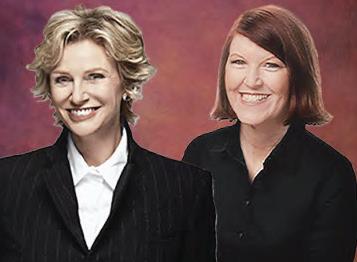




Songs for a New World Jason Robert Brown’s song cycle introduces vulnerable characters at their most pivotal moments at Theo Ubique Cabaret Theatre; 9/24-10/27.







Roots & Wings
Deeply Rooted Dance Theater, the “Alvin Ailey of Chicago,” explores the spectrum of modern, ballet, and African dance at the Auditorium Theatre; 10/23.
Mr. Burns, a Post-Electric Play Theater Wit revives Anne Washburn’s “post-apocalyptic tale of survival, passion and the enduring power of Bart Simpson”; open run.



Our arts writers suggest some events to get back into the cultural stream this season.
By SALEM COLLO-JULIN, IRENE HSIAO, DEANNA ISAACS, AND KERRY REIDTheaters, comedy clubs, museums, galleries, and other venues are blowing o the COVID-19 shutdown dust and preparing to welcome you back this fall. Many companies are picking up with productions that were cut short in March 2020, while others have world premieres up their sleeves. We suggest calling venues ahead of time or checking their websites to clarify their current COVID protocols and seating arrangements for patrons.
THEATER (Kerry Reid)
Teatro ZinZanni
“Dinner and a show” used to imply a prime rib bu et and a revival of a classic American musical comedy. But underneath the glittering indoor spiegeltent big top at this circus variety show, it means acrobats, clowns, comedians, dancers, singers, and more. The ZinZanni extravaganza, which started out in the late 90s in Seattle and played in San Francisco for years, had made its Chicago debut the summer before the COVID-19 shutdown, and it was one of the first to reopen this summer. Reader contributor Irene Hsiao noted in her review of the new show: “Impossible distillations of physics, ingenuity, and craft keep bodies hovering between flight and fall—exquisite illustrations of trust in humans and human invention, radiant, perilous, tilting extravagantly on the edge of folly, mastery of this moment.” Open run, Cambria Hotel, zinzanni.com/chicago.
The Magic Parlour
If you like your thrills delivered close up, then Dennis Watkins’s long-running magic show at the Palmer House Hilton might be just the ticket. Watkins, like a lot of performers, switched to virtual performances during the shutdown, but he’s back with a breathtaking
array of feats involving card tricks, mentalism, and much more. Open run, Palmer House Hilton, themagicparlourchicago.com.
The Infinite Wrench
The Neo-Futurists were among the earliest Chicago companies to switch to online programming. Now they’re ready to welcome visitors back to the friendly confines of their theater, where you can peruse the Hall of Presidents or hang out in the Neo-Futurist State Park before catching their signature show (33 years old and counting!), featuring 30 plays in 60 minutes performed in random order, with an unknown “wrench” in the nightly works making things even more interesting. Reopens Mon 9/20 7:30 PM, then in an open run SatSun, neofuturists.org.
Late Nite Catechism
Schools are open again, and so is Sunday school with Sister in another long-running made-in-Chicago favorite. Created by Vicki Quade and Maripat Donovan in 1993, it’s been running in Chicago (along with various Quade-created spin-o s) ever since, except for . . . you know. Since its longtime home at the Royal George is closed, the show has moved over to the Greenhouse Theater Center, with Second City vet Jeena Streege joining the rotating bevy of faux-nuns in this interactive Catholic comedy. Open run, greenhousetheater.org.
American Mariachi Goodman Theatre planned to produce José Cruz González’s comedy about a 1970s allfemme mariachi band last year. It’s happening now under Henry Godinez’s direction, presented as one of the many shows in the Chicago Latino Theater Alliance’s Destinos festival. Sones de México Ensemble perform live in the
production. 9/18-10/24, goodmantheatre.org.
Last Night in Karaoke Town
In a case of life imitating art, Factory Theater’s show about a hardscrabble Cleveland karaoke bar facing an existential threat (OK, gentrification, not a pandemic) had to close right after opening in 2020. But take heart: it’s back! Reader critic Max Maller called Kim Boler’s comedy “a fantastic play, one that gets to the heart of so many issues that matter, such as what varieties of taxidermy should be allowed in bars (squirrels? bu alo?), who gets to sing Natalie Imbruglia’s ‘Torn’ when both Audrey and Lily claim it as ‘mine, bitch,’ and whether the rusted-out factory your dad used to work in getting rebuilt as an REI is OK if you happen to like shopping at REI.” 9/24-11/6, thefactorytheater.com.
The Tragedy of Othello
Court Theatre welcomes back audiences with Shakespeare’s tragedy, codirected by artistic director Charles Newell and Gabrielle Randle-Bent and with Kelvin Roston Jr. in the title role. For the Delta-hesitant, there will also be a digital version to stream on demand. Seating is limited to 80 patrons per show, spaced in the auditorium or actually onstage. 10/8-11/21, courttheatre.org.
This touring version of Heidi Schreck’s play was also a victim of the COVID shutdown. But it’s back as part of Broadway in Chicago’s season at the Broadway Playhouse, with Cassie Beck taking on the role of “Heidi” in what Reader critic Kelly Kleiman called “a tightly woven narrative masquerading as a casual patchwork of personal reminiscences, civics lessons, and feminist observations.” 10/2611/21, broadwayinchicago.com.

The Last Pair of Earlies
Raven Theatre opens up with the world premiere of Joshua Allen’s play about Wayland and Della Rose Early, a Black couple from Mississippi who embark on the Great Migration to Chicago and find themselves decades later wondering about the choices they’ve made. Wardell Julius Clark directs. 10/27-12/12, raventheatre.com.
Her Honor Jane Byrne
J. Nicole Brooks’s portrait of the first woman mayor of Chicago and her much-publicized (and much-criticized) sojourn living at Cabrini-Green in 1981 was another COVID casualty, but Lookingglass gives us a second chance to see it. I praised the first production as “a rich, riotous, and soul-searching world premiere” back in March 2020. 11/11-12/19, lookingglasstheatre.org.
DANCE (Irene Hsiao)
A.I.M. by Kyle Abraham, An Untitled Love
The Dance Center of Columbia College reopens its stage to live performance with the world premiere of Kyle Abraham’s evening-length work on self-love and Black love to a mixtape of hits by R&B musician D’Angelo, with a post-performance discussion between Abraham and Princess Mhoon of Chicago Black Dance Legacy Project on opening night. 9/16-9/18, Dance Center Columbia College Chicago, dance.colum.edu.
Moon Festival Chicago
Celebrate unity, harmony, the harvest, and the brightest moon of the year with mooncakes, games, a lantern festival, and cultural performances by Yin He Dance and others in Chinatown Square—free and family friendly. 9/17, moonfestchicago.com.
When Day Comes
Winifred Haun & Dancers develops a second new work inspired by poet Amanda Gorman’s “The Hill We Climb” in When Day Comes , which takes as its subject the incessant pursuit of an impossible ideal. The evening also features WHD classic Bento in new costumes and guest performances by Banks Performance Project. 10/1-10/2, Ruth Page Center for the Arts, winifredhaun.org.
Harvest Chicago Contemporary Dance Festival
Harvest Chicago Contemporary Dance Festival resumes for its 11th season with a largely homegrown selection of artists, including return performances by Aerial Dance Chicago, RE|dance group, Joel Hall Dancers, and Giordano II, and HCCDF debuts by Christopher Knowlton and MusicDance En-sem’-ble. 10/810/9, in-person at Ruth Page Center for the Arts and livestreamed, hccdf.com.
Inception: ETHOS episode II
For Indigenous Peoples’ Day, witness an epic free outdoor performance and land acknowledgment at South Shore Cultural Center, replete with wind, water, poetry, dance, and meditative reflection on being and breath by Ayako Kato and collaborators including musicians Michael Zerang and Mabel Kwan. 10/11, South Shore Cultural Center, ayakokatodance. com.
GRASS
Carrie Hanson, playwright Seth Bockley, and the Seldoms consider the grass on your lawn and the grass in your bong—and how these weeds weave their way into citizenship, morality, environment, and the law—in a pre-
themselves to create environments that let ‘far-from-the-norm’ comedy thrive.” The joint is hopping again with a wide array of performers (and you can also check out their podcast). See complete schedule at thelincolnlodge.com.
miere performance featuring text, dance, animation, and historical imagery. 10/14-10/16, Dance Center of Columbia College Chicago, theseldoms.org.
OPERA (Deanna Isaacs)

Carmen
You didn’t think always-innovative Chicago Opera Theater was going to present the Bizet war horse straight up, did you? This semistaged concert performance of the familiar tragic love story has mezzo-soprano Jamie Barton (who famously waved the rainbow flag while singing “Rule Britannia” at the 2019 British Proms) making her role debut as the femme fatale, and another rock-star mezzo, Stephanie Blythe (in tenor alter-ego), as Carmen’s dumped and dangerous lover, Don Jose. COT music director Lidiya Yankovskaya, who will conduct, says “this will be a very di erent perspective on an operatic classic.” One intermission; no chorus. 9/16 and 9/18, Harris Theater; cot.org/carmen.
Florencia en el Amazonas
Lyric Opera of Chicago’s four-opera fall slate includes the first Spanish-language opera to make it into the mainstage season. Mexican composer Daniel Catán and librettist Marcelo Fuentes-Berain were inspired by the magical realism of Gabriel García Márquez when they created this lushly scored tale of a boat making its way down the Amazon with passengers who include a famous singer traveling incognito in search of a long-lost former lover. Directed by Francesca Zambello and conducted by Jordan de Souza, it features Lyric favorite Ana María Martínez as the diva,
Florencia; a cast of travelers, each with their own evolving story; and English subtitles. 11/13-11/28, lyricopera.org.
Den Theatre
The Den, the busy Wicker Park hive of theaters and bars (as opposed to scum and villainy!), is buzzing with comedians this season, including Nick Kroll (9/27-9/28), Cameron Esposito (10/2), Maria Bamford (10/14-10/17), Sam Morril (10/21-10/23), and Jacqueline Novak (11/4-11/7). See complete schedule at thedentheatre.com.
Whether you’re being abstemious or not, Annoyance’s long-running improvised mystery show with mandatory booze (for the actors, that is) o ers a chance to see characters get killed while the performers get blotto. If you’ve got moral objections to drinking as part of the job description, that’s fair; on the other hand, the times I’ve seen the show, the actors pulled it o without a, well, hitch. It’s one of many o erings at the Belmont Avenue comedy clubhouse, which also kept virtual content chugging along during the shutdown. Open run; check out complete performance calendar at theannoyance.com.
In the optimistic Before Times of early March 2020, the Reader had an entire special issue devoted to comedy. And one of the venues singled out for praise was the Lincoln Lodge; as Reader contributor Meggie Gates described it, “The space is run by comedians in the scene, artists who have taken it upon
Since its inception in 1990 as a one-day symposium held at the Art Institute and Orchestra Hall, the Chicago Humanities Festival (CHF) has delivered annual programming that celebrates ideas, the arts, and the Chicago people who dedicate their lives to making our city a haven for creativity. This year continues the recent tradition of year-round events hosted by CHF, and the fall slate provides some highlights. At the end of September, UIC professor Rachel Havrelock kicks o her Deep Dive: Great Lakes series with “Who Owns the Waters of the Upper Midwest?” It’s a panel discussion about the competing needs of tribal, local, and federal governments as well as private companies (9/25 at Columbia College Chicago). A two-part event in October revisits the Wall of Respect, the iconic mural created in 1967 on the south side that depicted Black leaders in music, literature, politics, and sports. The day starts with a panel discussion led by SAIC professor Romi Crawford and continues with a screening of the documentary BAM!, which focuses on Chicago’s role in the Black Arts Movement (10/2 at Blanc Gallery). See complete schedule at chicagohumanities. org.
The longtime publisher of Poetry magazine and independent literary organization hosts several events celebrating poets and writers this fall, including an online reading and interactive activity with celebrated writer Marilyn Nelson (9/25, in honor of Young People’s Poetry Day); “Strangers in a Strange Land,” a series of concerts and performances arranged by the Collaborative Arts Institute of Chicago that explore themes of immigration (10/7-10/9); and the 2021 Pegasus Awards ceremony, an annual which celebrates the accomplishments of several writers and critics and culminates in the awarding of the foundation’s Ruth Lilly Poetry Prize (10/21). The celebration is scheduled as a virtual event this year, hosted on the foundation’s website. See complete schedule at poetryfoundation.org/events. v
@hollo, @IreneCHsiao, @DeannaIsaacs, @kerryreid
 By KERRY REID
By KERRY REID
Midway through the first act of Anne Washburn’s Mr. Burns, a Post-Electric Play , one of the characters observes, “People are not competent. Can I just say that? People are not competent.”
Given that the character is one of a handful of survivors of a massive string of nuclear meltdowns that have completely shut down America’s power grid and killed god knows how many people, the understatement is painfully hilarious. During a mass pandemic massively exacerbated by the official idiocy and callousness of the last administration (not to mention several current governors and o cials), it’s also enraging. (You can throw in the deadly failure of Texas’s power grid during last winter’s deep freeze to up the anger ante if you want.)
What do you do when you’ve survived the worst thing imaginable? You tell stories around a fire with whoever is left behind, which is where we find Washburn’s charac-
ters hanging out. Her beginning feels like an inversion of the end of the heartbreaking 1983 post-nuclear-attack film, Testament , where Jane Alexander’s Carol, a grieving mother, celebrates the birthday of her one surviving child by blowing out a single candle, saying that they should wish, “That we remember it all . . . the good and the awful.”
But Washburn mostly isn’t interested in earnest homiletics, and her characters are invested in remembering a story near and dear to the hearts of Gen Xers especially.
They’re trying to recall all the details in the 1993 “Cape Feare” episode of The Simpsons (a ri on the 1962 Robert Mitchum film Cape Fear, remade with Robert De Niro in 1991), in which Sideshow Bob vows vengeance on Bart for testifying against him in court and getting him locked up.
That episode becomes a shared cultural narrative not just for the people we meet in the first act, but for the entire broken world
of the play. By the second act, set seven years later, they’re performing not just Simpsons episodes, but also commercials and medleys of pop hits (“Livin’ La Vida Loca,” “Who Let the Dogs Out”) for money. They’re the postapocalyptic version of the band of unlikely entertainers (a blind juggler, one-legged dancers) in Peter Barnes’s 1985 Black Death comedy, Red Noses, who struggle to serve God as holy fools bringing laughter to the 14th-century masses while keeping body and soul together.
Toss in a country filled with guns, and the competition among Simpsons touring acts becomes a bit more fraught. By the third act, set 75 years later, the original “Cape Feare” story line has taken on the tone of an epic poem. It’s become (wait for it!)—Homeric. (And Mr. Burns has supplanted the evil clown; given the historical circumstances, the feckless and vengeful owner of a nuclear plant probably makes a more convincing villain.)
Theater Wit first produced Washburn’s pitch-black (almost literally in the first act—that “post-electric” subtitle isn’t fooling around and Heather Gilbert’s lighting design accentuates the gloom) 2012 comedy in 2015. You know: those innocent days before we really thought a reality show carnival barker with fascist aspirations might actually win the presidency, and long before COVID-19 was on anyone’s radar.
Open run: Wed-Sat 7 PM, Sun 2: 30 PM, Theater Wit, 1229 W. Belmont, 773975 - 8150, theaterwit.org, $ 36 -$ 54
Jeremy Wechsler’s remount reopens the theater, which opened and closed its last production, Teenage Dick, on March 16, 2020. (That one performance was recorded and presented as a ticketed streaming show—the first of many to follow over the next 18 months.)
Unsurprisingly, it feels particularly relevant and painful now, when we’re realizing how many of our fellow citizens would rather fuck around and find out than take the simplest steps to end a pandemic.
Being steeped in Simpsons lore certainly helps one appreciate the comic details, particularly in the makeshift costumes designed
by Mara Blumenfeld and Mieka van der Ploeg.(The nesting blue plastic buckets comprising Marge’s wig in the second act are particularly cunning, but it’s all fabulously inventive.) But Washburn also isn’t interested in delivering a straight-up parody. One of the points of her play (which features terrific original songs by the late Michael Friedman) is that our collective memories both sustain us and twist us in knots.
The characters are literally fighting for ownership of the Simpsons stories in the second act, and increasingly darker tones of capitalistic competition creep up even in the midst of theatrical cooperation. “I think people are ready for status again,” says Jonah D. Winston’s Gibson, in talking about the “commercial” included in the show. (His character, like Sideshow Bob, happens to be well versed in the Gilbert & Sullivan canon, which makes him a welcome addition for reasons that fans of “Cape Feare” will understand.)
But the third act does move closer to the earnestness of Testament and the death-defying joy of Red Noses . Bart (Leslie Ann Sheppard) fights bravely for his family’s honor against Andrew Jessop’s Burns. (The latter has Eileen Doan’s Itchy and Daniel Desmarais’s Scratchy as his henchcreatures.) A roll call of those who have left us includes Friedman (who died of AIDS-related complications in 2017—lest anyone think that pandemic has completely gone away), along with Chicago actor Johnny Lee Davenport and the legendary Organic Theater founder Stuart Gordon. Will Wilhelm’s Mrs. Krabappel is no longer a snarky teacher; instead, she’s a figure of choral compassion.
It’s a dizzyingly smart contraption, and Wechsler’s direction and stellar ensemble keep it all on point, balancing the poignant with the ridiculous, the quotidian with the existential. Ana Silva’s Maria, in the first act, recounts a long story of a man who went to a power plant with fuel, hoping to keep the rod-cooling generators going for just a few more days, only to realize that he was too late.
“He said: ‘It’s not knowing, that’s the problem.’ He said: ‘I think I can handle anything, if I know what it is. I just can’t manage the dread.’”
No matter how well you feel you’ve managed the dread (and anger, and confusion) of this time, Mr. Burns o ers both wry smart laughs and a sense that finding our tribe with a common narrative is one way through the darkness.
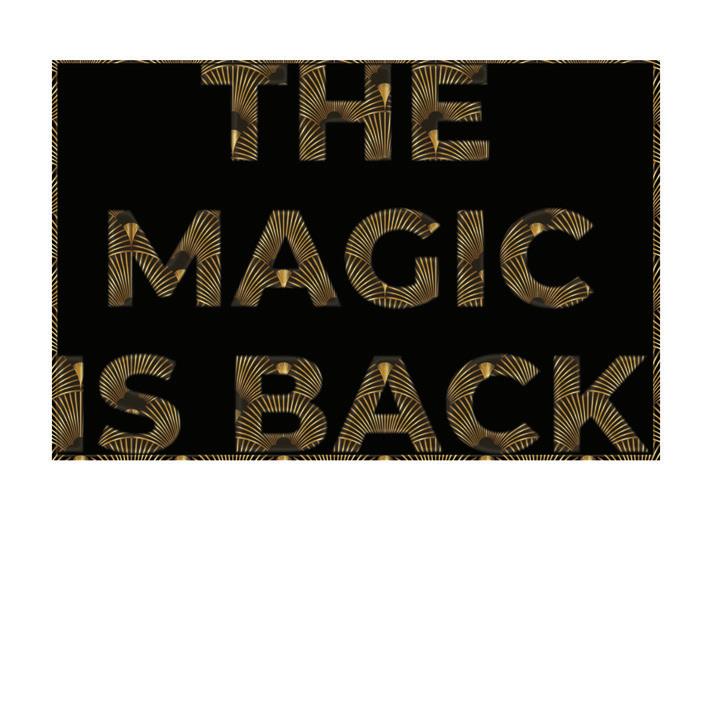


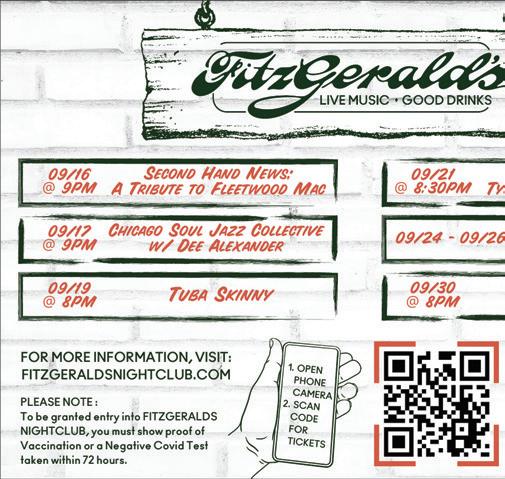




Everything’s up in the air for Anne (Deragh Campbell)—both literally, a er she becomes preoccupied with skydiving following an excursion for her best friend’s bachelorette party, and figuratively, as she contends with the uncertainty of life in her late 20s. A childcare worker in Toronto who’s just moved into her own place, the 27-year-old has more in common with her young wards than she does her peers, her guileless indecorum at times charming to those around her but otherwise just exasperating. This squally 2019 feature from New Canadian Cinema harbinger Kazik Radwanski (Tower) follows Anne’s life between her first jump and the next, which she plans with a singular focus on recapturing that immeasurable sense of freedom. In the meantime she navigates fraught relationships with her coworkers, some of whom resent her vexatious immaturity, and meets a guy, Matt (filmmaker Matt Johnson); initially beguiled by Anne’s o eat personality, Matt soon reaches his threshold with her unpredictable behavior. It’s implied, though never clearly stated, that Anne grapples with mental illness, but writer-director Radwanski forgoes much exposition and instead allows viewers to revel in their propinquity to a character whose idiosyncrasies are uniquely her own and thus seemingly beyond understanding to those looking in from the outside (or, in fitting with her obsession, looking up from their place on the ground). Campbell’s performance is noteworthy; she disappears into the role with conviction, further obscuring the whys and wherefores of Anne’s myriad complexities. —KATHLEEN SACHS 75 Min. Facets
If guilt could be considered a prison of the mind, then it’s no wonder that the strangely penitential William Tell (Oscar Isaac) acclimated nicely to prison. Having served time for his role in torturing inmates at Abu Ghraib, he reenters society as a nomadic gambler, traveling from city to city and casino to casino, pursuing low-stakes wins by utilizing the card-counting skills he taught himself while incarcerated. In the confines of his spartan hotel rooms, made to resemble monochromatic prison cells by means of sheets wrapped around the furniture, he writes in a makeshi diary, the narration of which propels this morose redemption chronicle from the potentate of such toils, writer-director Paul Schrader. Wiliam meets a young man, Cirk (Tye Sheridan), whose father died by suicide a er his own participation in the torture at Abu Ghraib. Hoping to avenge his family, Cirk plans to himself torture and murder the barbarous contractor (Willem Dafoe, woefully underused) who oversaw the malfeasance and later disappeared, leaving soldiers like William to take the fall. William takes a liking to Cirk and joins the celebrity poker circuit in order to win big and help free the young man from his obsessive quest for vengeance. He’s aided in his gambling endeavors by La Linda (Tiffany Haddish), a snazzy financier who emerges as a love interest for the guilt-ridden ascetic. All told, this is a variation on a theme for Schrader (albeit a satisfactory one, unlike some of the others) and a fitting follow-up to his 2017 standout First Reformed. O en prone to wearing thin his compulsions, Schrader’s fealty to the work of Robert Bresson and his penchant for desultory narrative and aesthetic caprices are here tempered by exceptional performances from Isaac and Haddish; they retain their individual faculties even under the thumb of a dogmatic auteur. —KATHLEEN SACHS R, 112 min

Get showtimes and see reviews of everything playing this week at chicagoreader.com/movies
From a true story, to a 2011 television documentary, to a hit West End musical, and now a feature film—it seems that everybody really is talking about Jamie. And for good reason: there’s an inescapable charm to 16-year-old Jamie New (Max Harwood), who leaves his life in Sheffield to chase his dreams of becoming a professional drag queen. Jonathan Butterell’s film adaptation of Everybody’s Talking About Jamie is full of glitter and show tunes, but it also has a real earnestness—especially in its depiction of queer mentorship in the form of Miss Loco Chanelle (a scene-stealing and perfectly weathered Richard E. Grant). There’s unfortunately some sanitization of the original show’s more outrageous moments, which can feel like an effort on Amazon’s part to capitalize on queer stories as long as they stay in line with their “family friendly” brand. But there is a welcome political message here that helps to supersede those misgivings, one that connects the new queer generation with our long-standing history of collective action and protest—specifically in regards to police violence and the AIDS crisis. In just his directorial debut, Butterell manages to translate a rousing stage show to the screen with ease. Everybody’s Talking About Jamie is a delight to watch from start to finish, especially when it champions queer joy, community, and those who paved the way. —CODY CORRALL PG-13, 120 Min. Prime Video
Malignant is the type of movie that requires viewers to strap in and shut up from the onset. That’s because, at various points throughout James Wan’s latest two-hourlong offering, he truly tests viewers’ ability to suspend disbelief. And while horror expects that, it gets a bit trickier here because Malignant’s undertones grab generously from other genres to make for a messy movie. Following Madison (Annabelle Wallis), who is paralyzed by shocking visions of gruesome murders, which she soon discovers are actually real, the movie is a tropeheavy thrill ride. Complete with an orphan origin story and evil entity, its series of events is bonkers beyond belief. The thing is, it’s still all potentially terrifying, but certain decisions continually work to undercut the fear and leave viewers asking questions like, “Does James Wan understand how arms work?” If they can resign to the ride, though, it will be an entertaining one.
—BECCA JAMES R, 111 min. Streaming on HBO Max, in theaters at AMC Theatres, Logan Theatre, Regal Theatres, ShowPlace Icon Theatre
In The Nowhere Inn, musician Annie Clark (St. Vincent) collaborates with best friend Carrie Brownstein to create a documentary about her life and music. Finding the largely private and mundane life of Clark uninspiring, the collaboration takes a turn for the bizarre when Annie takes Carrie’s suggestions of livening up the documentary a bit too far as the stage persona of St. Vincent increasingly takes control. The mockumentary fits snuggly within the filmmaking-gone-awry genre, as Clark and Brownstein struggle with how to present authentic selves, as questions on the meaning of identity, fame, performance, and sincerity threaten to disrupt the completion of their film.
Written by Clark and Brownstein, and directed by longtime television director/editor Bill Benz, The Nowhere Inn occasionally gets lost in its own self-referentiality, but when it does find the right paths it’s a charming ride. Lavish sequences showcase the ingenuity of the lead pairing, who play off one another and pull out some of each other’s most vulnerable character traits in truly sincere and o en amusing ways. Clark’s increasingly erratic behavior leads to a series of rash and over-dramatic turns for the film within a film, leaving Brownstein to try and pick up the pieces. —ADAM MULLINS-KHATIB 92 min. Music Box Theatre
Director Kiyoshi Kurosawa beautifully and methodically renders the story of a married couple plunged into uncertainty in the days leading up to World War II. With a slow-burn plot, the film marries historical drama with psychological tension, highlighted by intensely focused performances from Yû Aoi, who plays a wife slowly suspecting her husband of being an anti-Japanese spy, and the ever-stoic Issey Takahashi, who plays a husband harboring a restless secret. The film succeeds as a portrait of a marriage under duress. But at times, slack pacing causes the story to rely too heavily on the personal, at risk of unmooring the narrative’s political stakes. For example, the film touches upon historical atrocities and human experimentation conducted by the Japanese military in Manchuria, but fails to address that said experiments were never properly prosecuted or atoned for. (In fact, the United States gave immunity to researchers involved in these experiments in exchange for their data.) Whether these vagaries are a failing or a feature, Kurosawa leaves the audience with large-scale questions about the nature of love and justice. In Japanese with subtitles. —NINA LI COOMES 115 min. Gene Siskel Film Center v


A NEWSPAPER. A FAMILY. A COMMUNITY. A feature documentary about Pulitzer Prize-winning journalist Art Cullen and his family's fight to protect their Iowan farming community through their newspaper, The Storm Lake Times — come hell or pandemic.


Directed by Jerry Risius & Beth Levison



Screening: September 24-30




IL



The directors & Art Cullen will be present for a Q&A following the Friday, September 24, 5:30p show!

Tickets and more info at stormlakemovie.com
Never miss a show again. EARLY WARNINGS chicagoreader.com/early
®
To most Chicagoans, “Englewood” and “rock” are hardly synonymous, but guitarist Edward Vaughn reps his hood proudly as he follows his rock-star dreams. And where he’s from isn’t the only thing about him that points away from rock ’n’ roll: he also has a bachelor of science degree in aerospace engineering.
“I’m from Englewood, so of course, you know, hip-hop and R&B—that’s what we grow up o of,” Vaughn says. “But [Guitar Hero] introduced me to the world of rock music.”
Early rockers such as Chuck Berry, Little Richard, and Bo Diddley all drew from the popular Black music of their day, especially R&B (influenced itself by Black gospel) and electric Chicago blues (whose most important architects included Muddy Waters and Willie Dixon). But rock ’n’ roll was broadly popularized by white acts, and before long they’d taken over the genre, claiming it as their own.
Vaughn, who uses the stage name Rockstar E.V., connects rock to the Black popular music of his day. In homemade videos he posts to social media, he adds his high-voltage rock ’n’ roll guitar to songs from the 1980s till the present by the likes of New Edition, Aaliyah, Usher, Smino, King Von, Frank Ocean, and Megan Thee Stallion. Vaughn describes what makes his style stand out from those of his peers: “If you’re a Black guitarist, usually they come up in the church,” he says. “And if they are playing solos, they’re not playing like superfast shredding solos, like 80s rock solos, on top of this trap stu .”
Vaughn displays his love of rock in the reels on his Instagram page, where he intertwines 80s riffs and licks with R&B, soul, and hip-hop hits. His cover of Alicia Myers’s 1981 track “I Want to Thank You” exemplifies how he takes classics to another level, embellishing them with solos that seem to amplify the chords and bring out more from an already beloved tune.
As Rockstar E.V., the Englewood scientist-turnedguitarist fuses 80s rock style with modern hip-hop and R&B.
By CORLI JAYsity of Illinois at Urbana- Champaign. Broadly speaking, that branch of engineering deals with the development of aircraft and spacecraft, and Vaughn says his lessons included learning how to optimize the size and shape of wings, ailerons, and other control surfaces. “For my senior design project, we had to work in a team of seven to design a replacement for the Northrop T-38 Talon jet trainer,” he says. “Basically, come up with a new jet trainer, as far as college kids could come up with. The government gave us the specifications and upgrades they wanted for the new design, and we had to implement them.”
Vaughn couldn’t secure an internship in aeronautical engineering, but after graduating in 2016 he found work in a distantly related field: civil engineering, which focuses on the development of infrastructure projects such as roads and bridges. That job took him to California and Guam for nearly two years, but he took the fact that he wasn’t in aeronautical engineering as a sign to pursue his musical aspirations. “I’ve always wanted to do music,” he says. “I had to remember that engineering was just a backup plan for me—honestly, a very long, expensive backup plan.”
In 2018, Vaughn left his last full-time job in engineering to devote himself more thoroughly to music. He’s kept using his math skills, though: in 2020 he took a short-lived job as an instructor for AeroStar Avion Institute, which aims to help underrepresented or underserved kids get into the field, and he currently works for himself teaching middle school, high school, and college students under the name Supernova STEM Tutoring. He also offers virtual or inperson guitar lessons to students of any age.
Vaughn learned guitar while attending Leo Catholic High School on 79th and Sangamon. As a sophomore, he had his eyes set on joining the Jesse White Tumblers, traveling frequently to the far south side to practice. But two weeks before his tryouts, at a gym in Alsip, he broke his ankle and ended up in a cast for a couple months. “I had nothing to do but play guitar, so I just picked it up,” he says. “I started practicing like seven hours a day, and in about two years, I got decent at it.”

Though he’d become a talented guitarist in short order, Vaughn also demonstrated serious skills in math while still in high school. He says his teachers encouraged him to take pride in that. “They kept telling me to do something in math,” he says. “And I’m like, I’m good at it, I like math, that makes sense.”
When Vaughn graduated in 2011, he saw his career options as accounting or engineering. He says he chose the latter because of the Air & Water Show. “My grandma loved the Blue Angels,” he says. “I thought both [the Blue Angels and the Thunderbirds] were super cool. So I’m like, I could see myself designing something like that—if I want to go into engineering, at least that’d be something super cool.”
Vaughn studied aeronautical engineering at the Univer-
Tutoring is just one way Vaughn sustains himself. In 2019, he began playing gigs with his girlfriend Ayanna Williams, aka Yanna Cello, a cellist who also makes cover videos. He says what worked best to get them exposure and bookings was when they’d shoot a video outside and tag music producers when they posted it; the producers would then repost it with praises. “They might just take the whole video and be like, ‘Wow, this is dope,’ like, put it on their page and stu like that,” Vaughn explains. “And they might reach out like, ‘Hey, I want to work with you.’”
Vaughn has taken his talents to venues all over the city, including the Silver Room, House of Blues, the Promontory, and even the Sears (Willis) Tower. Though he appreciates the success he’s seen, his dream is tackling the United Center. “[The United Center] and the Taste of Chicago are like the major places I haven’t performed,” he says. “Everywhere else, if you named it, I might have performed there before, which is a good feeling.”
On Saturday, September 18, Vaughn will take the stage at the Englewood Music Fest on 63rd and Halsted. The free festival runs from noon till 7 PM, and its lineup also features Chicago legends Syleena Johnson and Crucial Conflict. The final schedule hasn’t yet been announced, but Vaughn will play a ten-minute solo spot sometime between 2 and 5 PM. v
@corli_jay

Recommended and notable shows and critics’ insights for the week of September 16

Melvia “Chick” Rodgers-Williams Part of the 15th annual Chi-town Blues Festival, which also features Pokey Bear, Theodis Ealey, Nellie “Tiger” Travis, Lenny Williams, Sir Charles Jones, and Bobby Rush. 9 PM, the Venue at Horseshoe Casino, 777 Casino Center Dr., Hammond, Indiana, $64-$130. 21+
MEAT WAVE, MANDY, OVEF OW
Sat 9/25 , 8:30 PM, Empty Bottle, 1035 N. Western, $10. 21+
CHICAGO PUNK TRIO MEAT WAVE were planning on touring for much of 2020 to push a new LP, but COVID cleared their calendar and delayed their album (as it did for so many working bands). Rather than sit around and wait, the band hunkered down to write, record, and self-release an EP of new material called Volcano Park, and if you’ve ever listened to Meat Wave before, you won’t be surprised that it absolutely rips. They’ve spent almost ten years mastering their style of driving, rhythmic, dissonant-yet-melodic punk rock, and Volcano Park feels like a culmination of all their past e orts. All of Meat Wave’s best qualities are proudly on display: Ryan Wizniak’s relentlessly jumpy drums, Chris Sutter’s unsettling guitars and wildly catchy vocals, and Joe Gac’s grimy bass and crisp engineering. Side A’s tracks are all hot-as-hell smashers based on repetitive ri s, while side B gives the songs more space for introspection and broadens their sonic palette to include huge cymbal washes and eerie synths. All the energy, thought, and emotion packed into these six tracks can make them feel almost overwhelming at times, but that won’t stop anyone from jamming this record over and over. Because the pandemic isn’t behind us, Meat Wave are still sitting on the new album they’d planned to support on the road last year, and they’ve again canceled their out-of-town dates. That makes this EP and this show your only chances to get your fix of new Meat Wave material this year. They’ll share the bill at the Empty Bottle with Ovef Ow and Mandy, a new band that evolved from a solo project by Melkbelly’s Miranda Winters.
—LUCA CIMARUSTIMelvia “Chick” Rodgers-Williams is a dynamic, versatile blues and soul vocalist with a pretty sparse recorded legacy (mostly under her maiden name, Melvia “Chick” Rodgers). She’s de and audacious enough to take on warhorses such as “Somewhere Over the Rainbow” and Aretha Franklin’s “Dr. Feelgood,” retaining the power and feel of the originals while making them her own. Her backstory is almost as impressive as her singing: In 1988, when she was still an aspiring artist in her native Memphis, she attended a Patti LaBelle show. When Patti decided to spice things up by asking if anyone in the audience wanted to sing, a friend literally picked up Rodgers-Williams and thrust her onto the stage. She grabbed the mike and tore into a version of LaBelle’s classic “Lady Marmalade” that wrecked the house and le Patti wide-eyed in amazement. The next day, photos of the unknown young singer and the astounded-looking superstar were all over Memphis media, and soon she was working regular gigs around town. Rodgers-Williams relocated to Chicago a few years later, quickly establishing herself as a club mainstay. In the 90s she made appearances at the Chicago Blues Festival, where she reached a wider audience with performances that showcased her roots in blues, deep soul, and gospel with equal fervor and aplomb. She’s since moved back to Memphis, where she’s expanded her territory further to become a leading light on the thriving southern soul-blues circuit.
Rodgers-Williams’s debut recording under her own name is 2009’s An Evening With Southside Blues Revue , a Dutch release where she’s billed alongside guitarist-harpist-vocalist Robbert Fossen. Recorded live, it delivers a bracing dose of her in-person charisma and powerfully churchy voice, but for a more varied and challenging RodgersWilliams experience, I’d recommend 2014’s This Kind of Love, a five-song EP where she remakes herself into a full-fledged art-song chanteuse. Backed by a variety of musicians, including a string quartet (from Corky Siegel’s Chamber Blues) and a saxophonist (the masterful Ernest Khabeer Dawkins), Rodgers-Williams’s voice sounds world-tested and scarred yet infused with light; she fearlessly plumbs despair and hope in songs whose lyrical eloquence approaches the depth and vision of legendary chanson singer Jacques Brel. Originally scheduled for March 13, 2020, this show was rescheduled for March 27, 2021, then postponed again. Tickets purchased for both earlier dates will be honored at this event.
—DAVID WHITEISOFFICIAL
A CELEBRATION— LIFE & WORKS 1980-2020 OFFICIAL RIOT FEST AFTERPARTY
with CONSOLIDATED | DALEK | GOST RHYS FULBER | ODONIS ODONIS PIXEL GRIP
SATURDAY SEP 25 / 7PM / 18+

SEP RIOT FEST AFTERPARTY with SPECIAL GUEST

PHILLIP S SAT OCT 02 MATTIEL
with FRONT 242 | YOUTH CODE BARKER+CONNELLY: LUXAPAN | ADULT PROVOKER | FEE LION


THURSDAY
/
07 / 7:30PM JILLIAN JACQUELINE SATURDAY
18+ OCT16 OCT16 OCT17 OCT25 OCT 30 OCT 30
26 / 7PM / FRI OCT 01 TUE OCT 05 NARROW HEAD TINARIWEN JACQUES GREENE @ Sleeping Village DR. DOG TV GIRL JP SAXE HIGH ON FIRE @Sleeping Village
Macie Stewart See also Fri 9/24. Ben LaMar Gay opens. 9:30 PM, Hideout, 1354 W. Wabansia, $5-$15. 21+

Macie Stewart has her hands in so many different musical projects it’s a wonder she finds the time to sleep. She coleads enchanting art-rock band Ohmme, of course, which she cofounded with Sima Cunningham in 2014, but aside from her bestknown gig, Stewart plays violin in a duo with cellist Lia Kohl, makes up one-third of improvising trio the Few, and doubles on violin and keyboard in Ken Vandermark’s ensemble Marker. As much as Stewart does with these groups to reinforce the backbone of the city’s loose community of improvising and experimental musicians, it doesn’t account for all of her creative activity. She’s also assisted her compatriots on their recordings; you’ve heard her violin if you’ve listened to V.V. Lightbody’s Make a Shrine or Burn It, SZA’s CTRL, or Whitney’s Light Upon the Lake and Forever Turned Around
After all the years Stewart has spent shaping sounds with others, it’s a treat to see her focus on her own vision. “I didn’t know who I was or what I sounded like as an individual,” she says in a press release for her new solo debut, Mouth Full of Glass “I was floating aimlessly & feeling like so many of my choices weren’t made for myself, but rather for the people with whom I shared a partnership.” She’s found a better sense of her musical identity by making Mouth Full of Glass, which casts intimate contemplation against flush, quasi-orchestral arrangements. Stewart’s soothing, elastic vocals cleave to brittle fingerpicked acoustic guitars, stentorian pianos, and blooming strings, tying together
even her most dramatic compositional shifts and making every song cohere fluidly. To finesse the details of this material, she drew from her vast network of talented friends, but as much as Kohl’s cello, Ben LaMar Gay’s cornet, and Sen Morimoto and Dustin Laurenzi’s saxophones brighten the corners of Mouth Full of Glass , the album shines thanks to Stewart’s magnetic presence and poignant songwriting. On the title track, when her multitracked vocals mirror a swelling string section, it sounds like she knows who she wants to be. —LEOR
GALILMAcie Stewart See Thu 9/23. Quinn Tsan opens. 9:30 PM, Hideout, 1354 W. Wabansia, $5-$15. 21+
Eleventh Dream Day See also Sat 9/25. 8:30 PM, Constellation, 3111 N. Western, sold out. 18+
When Chicago indie-rock stalwarts Eleventh Dream Day released their 14th album (and first in five years), Since Grazed , in April 2021, the pandemic prevented them from having a proper release party. The group, formed in 1983, are creeping up on their 40th anniversary, and though they didn’t hold together this long by being impatient, they felt so strongly about getting these songs out to the world ASAP that rather than wait for their moment in the crowded release schedule of longtime label home Thrill Jockey, they put out Since Grazed with Comedy Minus One (which also released their “lost album,” New Moodio, in 2013). “My favorite records are those that feel bound by loss, but the loss is

conveyed with such beauty that you find yourself upli ed by the time you flip the record over,” says vocalist and drummer Janet Bean. “This record felt like this to me. If there ever was a good time for such a thing it’s now.”
Eleventh Dream Day’s current lineup merits Chicago supergroup status, with members from Tortoise, Freakwater, the Zincs, the Coctails, Tweedy, and Archer Prewitt’s band, among others. The core members, aboard since the 80s, are Bean, vocalist and guitarist Rick Rizzo, and bassist Douglas McCombs; keyboardist, vocalist, and producer Mark Greenberg joined in 2000, and guitarist and keyboardist James Elkington has been with the band since 2012.
Since Grazed was originally a Rizzo solo album, but as he told webzine Concrete Islands, it evolved into an Eleventh Dream Day record as he began adding his bandmates as collaborators. While 2015’s Works for Tomorrow had a hard-rocking live-band feel, Since Grazed is more sparse and reflective—it sounds like a meticulous studio creation, with each musician putting careful thought and preparation into their own contribution. The album’s generous length (the vinyl version is a double LP) gives the material plenty of room to breathe and lets its emotions sink in. The sorrow of “Just Got Home (In Time to Say Goodbye)” and the longing mysticism of “Tyrian Purple’’ demonstrate the power of a band stretching out and taking their time. “Wish Too Far” shares the elegance of British folk rock a la Fairport Convention or Steeleye Span. The slowbuilding torch song “Matter,” sung by Bean, mines low-key beauty from horror, reaching an evocative peak as Rizzo’s guitar keens with a Tom Verlaine-like clarity: “There were rusted machines and old limousines / The sun cut through the surface and found a small patch of green / What’s the matter with you, did you not see the light bloom?” Fans of Eleventh
Dream Day’s windy and wild live sound shouldn’t be disappointed either, despite the quieter atmosphere of the album: the playfulness of “Yves Klein Blues” and the fervor of “A Case to Carry On” play great counterpoint to each other. That said, Since Grazed isn’t so much a crowd-pleaser as it is a statement that Eleventh Dream Day are still able to surprise. —MONICA
KENDRICKMEat Wave See Pick of the Week on page 46. Mandy and Ovef Ow open. 8:30 PM, Empty Bottle, 1035 N. Western, $10. 21+
Eleventh Dream Day See Fri 9/24. 8:30 PM, Constellation, 3111 N. Western, $25, $20 in advance. 18+
Ensemble Dal Niente with Ken Vandermark Part of the Hyde Park Jazz Festival. On Sun 9/25 at 3 PM, the festival will stream a recording of the show via its YouTube channel. 7:15 PM, Logan Center for the Arts, 915 E. 60th, free with RSVP. b
Ensemble dal Niente commissions and selects new music that earns the designation “new” not just because it’s freshly composed; it also challenges both players and audiences to experience performance in new ways. This program, jointly presented by Ear Taxi and the Hyde Park Jazz Festival, draws on the resources of Chicago in two ways. First, it’s a collaboration with Ken Vandermark, a local reedist whose work inhabits the fault lines between jazz,
OCTOBER
Live Concerts • Streaming Performances

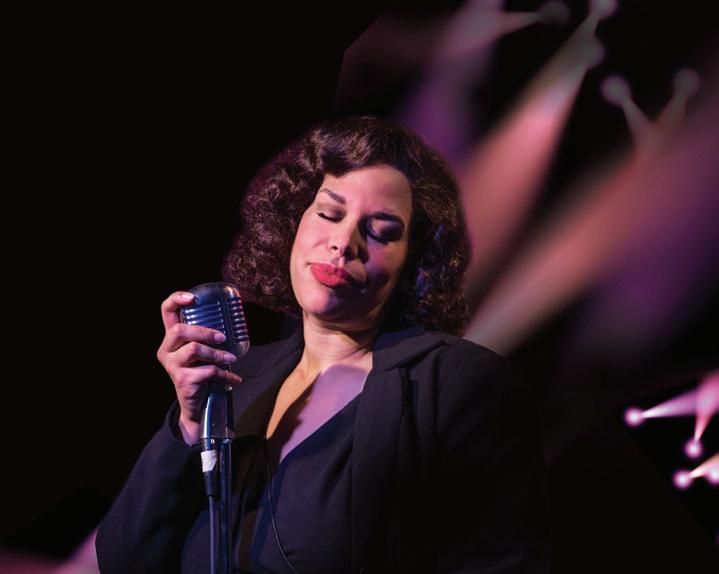





• Exhibition • Conversations and more!
Hybrid festival to feature intimate concerts and conversations, all accessible via free livestream, with select in-person programming.
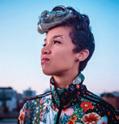
FEATURING
HEADLINERS SPANNING GENERATIONS & GENRES:
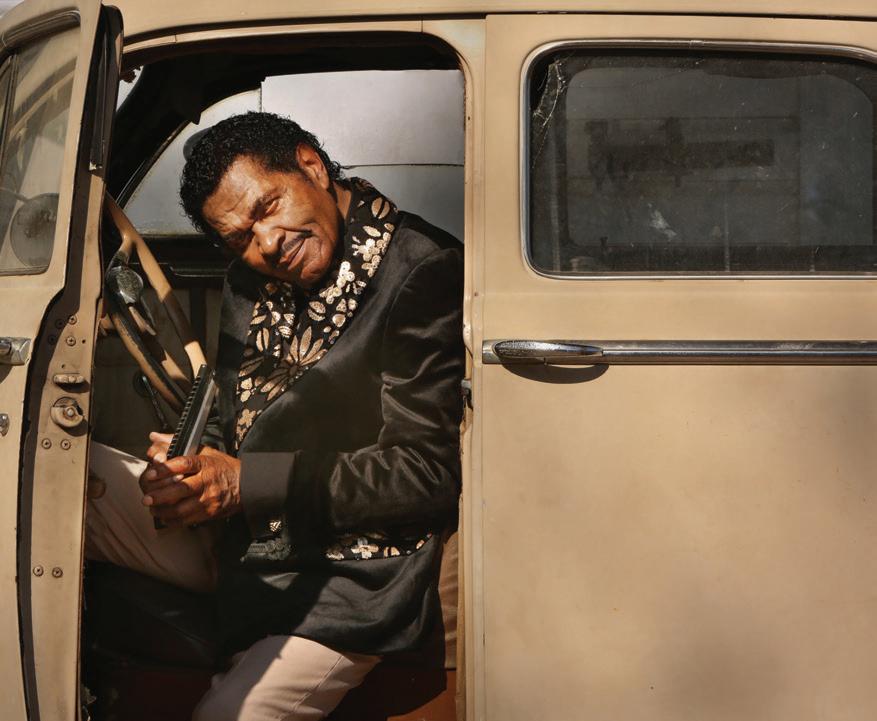
loganbluesfest.uchicago.edu

Tickets on sale September 13

“FABULOUS. Bethany Thomas leaves audiences spellbound.”
– Showbiz ChicagoDirected by Rob Lindley
continued from 48
free improvisation, modern composition, rock, and R&B. And second, all the music on the program was composed by former or late Chicagoans who’ve been members of the Association for the Advancement of Creative Musicians. While it’s most closely identified with avant-garde jazz, the AACM created a framework for its members to facilitate one another’s musical investigations regardless of genre, and the three pieces that Vandermark and Ensemble dal Niente will play all explore links between jazz and chamber music. The newly commissioned “Last Train to Clover 5,” by woodwind player Roscoe Mitchell, is one of a series of his works that uses as source material an improvised trio session with keyboardist Craig Taborn and drummer Kikanju Baku, which has been transcribed and then rearranged by Mitchell into scored compositions. “Merce and Baby,” written by trombonist, electronic musician, composer, and historian George Lewis, finds areas of overlap between the works of modernist choreographer
Merce Cunningham and early jazz drummer Baby Dodds. And “Cult of Electromagnetic Connectivity,” by flutist-composer-educator Nicole Mitchell, is a futuristically themed piece that sets darting woodwinds against dramatic percussion. Vandermark will also play a solo set based on melodies composed by the late Fred Anderson, who was not only an imposing tenor saxophonist but also a mentor for generations of local jazz musicians. —BILL MEYER
SUNDAY26


the Joe Show The Waco Brothers headline; Hushdrops, Phil Angotti, and Nora O’Connor open. 6 PM, Hideout, 1354 W. Wabansia, sold out. 21+
Since the start of the pandemic, Chicago has lost an incredible number of artists whose contributions to
the local music community helped shape the sound of the city and beyond. They include drummer and vocalist Joe Camarillo, who passed away in January following a stroke. Since the mid-80s, when he was a high school student in Midlothian, Camarillo had played in dozens of bands. He was best known for his work in rock trio Hushdrops and country-punk outfit the Waco Brothers, but he also became a go-to studio collaborator and backup musician with Kelly Hogan, NRBQ, Dollar Store, the Renaldo Domino Experience, and many others. Because Camarillo passed away before COVID-19 vaccines were widely available, safety precautions prevented his enormous network of friends from coming together in one place to share their grief. They vowed to do so when the time was right, though, and this month an in-person celebration of Camarillo’s life, music, and legacy will finally happen. Dubbed the Joe Show and held on the patio of the Hideout, this sweet, intimate concert features four acts with whom Camarillo had played: pop multi-instrumentalist Phil Angotti, singer-songwriter Nora O’Connor, the Waco Brothers, and Hushdrops (whose new album, The Static, due via Pravda in November, features their last recordings with him). The venue’s website suggests that had it not been for the pandemic, a much larger extravaganza might have taken place. But given Camarillo’s outsize talent and personality, it seems like any tribute now is just a foretaste of how he’ll be celebrated in Chicago’s music community for years to come.
 —JAMIE LUDWIG
—JAMIE LUDWIG


Thrill Jockey


thrilljockey.com/products/leaving-none-but-smallbirds
The Body and Big|Brave are both known for their takes on pulverizing, minimalist postmetal, but their new collaborative album, Leaving None but Small Birds (Thrill Jockey), gazes at the infinite possibilities of traditional folk music through a warped and weathered all-seeing eye. Cra ed in the studio with engineer-producer Seth Manchester (a frequent collaborator of the Body and Lingua Ignota), Leaving None but Small Birds pushes the boundaries of
everyone involved, making a seismic stylistic shi to muse on love, loss, and vengeance with homespun sounds. This about-face yields a photo negative of each band’s previous output, and as surprising as that is, it’s also clearly deliberate: the Body drummer and programmer Lee Buford aimed to evoke the twangy folk-rock of the Band, while Big|Brave front woman Robin Wattie endeavored to reinvent lyrics from Appalachian, Canadian, and English hymns and traditional songs. She shapes their perennial phrases to fit her character studies of the disenchanted and disenfranchised, telling new tales of strife, marginalization, and yearning.
Opening track “Blackest Crow” lends melody to the throes of grief with thrumming violin by Morgan Eve Swain and droning guitar from the Body’s Chip King, while “Hard Times” immortalizes child factory laborers and “spinning room babies.” The record’s high-water mark, the modern murder ballad “Polly Gosford,” addresses the feeling of alienation and provides the album its title: “He covered her grave / And hastened home / Leaving none but small birds / Her fate to bemoan.” The brightest points of the seven-song suite are found in the unexpected: Buford and Big|Brave drummer Tasy Hudson shirk bombast in favor of a steady percussive backbone throughout the record, and on “Once I Had a Sweetheart,” Wattie and Hudson combine their voices gloriously. Individually, the Body and Big|Brave make music that could move mountains. With Leaving None but Small Birds , they seem to ponder what songs might ring within their valleys and hollows. —SHANNON
NICO SHREIBAKSpermchurch, Merdeka Atau Mati Riverworm spermchurch.bandcamp.com/album/merdekaatau-mati
Bassist Trevor Dunn has forged relationships with polyglot saxophonist and composer John Zorn, avant-garde reedist Ben Goldberg, and scads of other jazz-world luminaries. He plays on Diatom Ribbons, a career-defining 2019 record by jazz keyboardist Kris Davis, but his contributions have largely gone unheralded, subsumed in the overall greatness of the album. Despite these accomplishments, Dunn is still generally perceived as a rock-world experimentalist—he emerged from Northern California as a member of Mr. Bungle in the late 80s,
then moved on to work within the Melvins’ sphere of influence.
But Dunn has continuously expanded his sonic purview, most recently channeling that impulse into SpermChurch, a collaboration with Sannety (aka trumpeter and electronic experimentalist Sanne van Hek). Merdeka Atau Mati, released on the bassist’s own Riverworm Records, lives mainly in Sannety’s electronic sound world, with Dunn adapting to the setting. Even the album’s title is drawn from Sannety’s half-Dutch, half-Indonesian heritage; translating to “live free or die,” it served as a rallying cry of resistance fighters in the 1940s, when Indonesians fought a war of independence to liberate themselves from three and a half centuries of Dutch colonial rule. (Sannety had the phrase tattooed on her arm.) Its ten tracks consist of home recordings captured in 2017 and 2018, which seamlessly meld the two musicians’ approaches: Sannety worked with a unique software instrument developed in Max/MSP, and Dunn ran his electric bass through various pedals. They finished mixing in March 2020, and about a month later, Sannety passed away. Dunn went on to choose names for the pieces (they’d been using working titles), master the album, and design the artwork.
Merdeka Atau Mati is permeated with waves of drum ’n’ bass and chopped up with a semblance of jungle influence. Dunn and Sannety’s rapid, rhythmic movements o en demonstrate a sublime minimalism. “You Thoroughly Want the Thing That Mounts” begins with a simplicity that creates a sense of anticipation, pushing open a compositional space that might’ve felt a bit overcrowded a er the preceding track, “What Street Is This,” where dense drones and tinny, percussive gestures clash and cajole. The album’s first single, “A Puzzle & Not Intended for Use,” feels stalled out in its purposeful abandonment of time—but the confusion potentially created by such erratic moments is easily overwhelmed by the wonky charm of a rock-world veteran collaborating with an electronic experimentalist.
—DAVE CANTOR RObert Aiki Aubrey Lowe, Candyman OST Waxwork/MGM waxworkrecords.bandcamp.com/album/candymanFolklore can be the ultimate game of telephone. As a historical form of collective communication, it brings communities together while expressing what makes them unique, and the content of its stories changes as newer generations tell them from their own perspectives. Robert Aiki Aubrey Lowe’s score for Nia DaCosta’s new film, Candyman, exemplifies how distortion—whether narrative or sonic—can express multitextual histories in succinct, powerful movements. For the original Candyman movie, director Bernard Rose transposed a Clive Barker short story set in neglected British council estates in the 1980s onto the Cabrini-Green high rises in 1992. Lowe addresses the legacy of the 1992 Candyman —on “Music Box,” he briefly reframes a placid piano melody from Philip Glass’s original score—but his compositions are largely distinct. As musician and curator DeForrest Brown Jr. detailed in an NPR piece on the new Candyman soundtrack (Waxwork/ MGM), Lowe drew from his experiences observing the creation of DaCosta’s film, which expands the backstory of the titular specter in a way that further
illuminates Chicago’s historical racial injustice. Lowe emerged from Chicago’s outre rock scene in the 1990s, playing in 90 Day Men, and later went solo as Lichens, making hypnotic, layered collages. He infuses his Candyman score with a reverence for the city’s history of experimental Black music, wielding modular synths, field recordings, and audio of the actors’ voices so similarly that it can be challenging to figure out where one element begins and another ends. The powerful but ambiguous results speak to the way Candyman continues to blur pop-culture storytelling with reality; a er all, the 1992 film borrowed elements from Steve Bogira’s 1987 Reader exposé “They Came in Through the Bathroom Mirror.” Lowe subtly infuses these tantalizing and uneasy sound pieces with so much history that they effectively dare listeners to dig in deeper— even if the results shock them.
—LEOR GALILAlicia Walter, I am Alicia
Sooper aliciawalter.bandcamp.com/album/i-am-aliciaIn the 2010s, Alicia Walter led criminally underappreciated Chicago band Oshwa, who played dizzying, dramatic math-rock with the finesse of a tween Mensa member simultaneously solving three Rubik’s Cubes. Walter moved to New York in 2016, the same year Oshwa released their final album, I We You Me, but her Chicago connections remain strong: this month, local indie label Sooper releases her dazzling solo debut, I Am Alicia. Walter’s rambunctious spirit unifies her wide-ranging stylistic journey and imbues every note of the album with freewheeling energy.

In a postgenre world, Walter gives all her material a distinctive common flavor with her highwattage musical personality, even when her songs sound disjointed slotted next to each other. To pick just one wild transition, the “night out at a rowdy jazz lounge” amusement-park ride of “Who Am I” careens into the tight 80s pop-funk of “Suit Yourself,” where Walter contorts her showstopping voice into brawny shapes and reaches for high notes and striking trills with bawdy flair. She’s an exceptionally gi ed vocalist and multi-instrumentalist, and on
I Am Alicia she swings for the fences with all her might. The album is an impressively bold statement taken together, and plenty of its songs stand out on their own—in a just world, the effervescent “Standing at Your Doorstep” would be a bona fide pop hit.
—LEOR GALIL Byron Westbrook, Mirror Views Ash International ashinternational.bandcamp.com/album/mirrorviewsThere’s more than one way to immerse yourself in sound, and electronic musician Byron Westbrook seems to be working his way through as many options as he can. He’s run the soundboard for Phill Niblock, the loudest man in minimalism; under the name Corridors, he’s conducted concerts for absent instruments that involved audience members passing speakers and handheld playback devices around the performance space; and his previous solo LP, Distortion Hue, contains a series of pithy, blown-out assaults.
Mirror Views proposes yet another approach, one rooted in a long-standing aspect of Westbrook’s work that hasn’t previously made it onto a recording. He’s been making sound and light installations for years, and this sprawling, 72-minute CD repurposes material from one that he created for Brooklyn art space Issue Project Room in 2017. Each of its four tracks includes outdoor field recordings and synthesized sounds that overtly mimic or subtly reference various environments, which Westbrook has arranged in configurations that play up their commonalities as well as their incongruities. Sometimes elements compete from either side of the stereo field, and at other times they’re stacked up in sonic space so that listening closely to one draws you into another. During one such passage in “Mirror View (First Contact),” the first thing you hear is a pulsing, machinelike hum, though lurking behind it are sequences of artificial surf, bustling crowds, and something that just might be a foghorn. What initially feels like an invitation to drift turns out to be a deep dive into a liminal sea of sound.

Mägo de Oz, Liran’ Roll 11/17, 8 PM, House of Blues, 17+
Justin Martin 11/26, 10 PM, Concord Music Hall, 18+ Material Reunion featuring Colette, Diz, DJ Heather, Josh Werner, Kid Enigma, Miles Maeda 10/2, 10 PM, Smart Bar
Meagan McNeal 10/1, 8 PM, City Winery b
Meat Wave, Mandy, Ovef Ow 9/25, 8:30 PM, Empty Bottle
Microwave, Elder Brother, Taking Meds, Weakened Friends 10/1, 6:45 PM, Cobra Lounge b
Raul Midón 9/26, 7 PM, SPACE, Evanston b
Mint Mile, Black Duck, Mute Duo 9/26, 8:30 PM, Empty Bottle
Coco Montoya 10/2, 9 PM, FitzGerald’s
Alkaline Trio, Bad Religion, War on Women 11/13, 7 PM, Radius Chicago, 17+

Alleys and Gangways, Butchered, Death and Memphis, Nowhere Days 10/29, 8 PM, GMan Tavern
Amelie Lens 11/11, 10 PM, Concord Music Hall, 18+
Anna, Jeff Derringer 10/1, 10 PM, Smart Bar
James Arthur 5/7/2022, 7:30 PM, Riviera Theatre b
Bellheads, Mystery Actions, No Dead Heroes, DJ Greg Corner 9/29, 8:30 PM, Empty Bottle
Berwyn Blues Festival day one featuring Shemekia Copeland, Honey Island Swamp Band, Toronzo Cannon & the Chicago Way, Lil’ Ed & the Blues Imperials, Dave Specter Band featuring Brother John Kattke, Donna Herula
9/24, 6 PM, FitzGerald’s b
Berwyn Blues Festival day two featuring Black Joe Lewis & the Honeybears, Thornetta
Davis, Bette Smith, Jackie Venson, Mike Wheeler
Band, Zach Person, Lauren
Anderson, Smiley Tillmon
Band, Nick Moss Band, Omar Coleman 9/25, 1 PM, Fitz-
Gerald’s b
Berwyn Blues Festival day three featuring Ronnie Baker
Brooks, Cedric Burnside, Joanna Connor Band, Billy Branch & the Sons of Blues, John Primer, Vanessa Collier, Nora Jean Wallace, and more
9/26, 1 PM, FitzGerald’s b
Best Coast, Rosie Tucker
1/19/2022, 8 PM, Metro, 18+
Beths, Lunar Vacation
1/28/2022, 9 PM, Metro, 18+
Bleacher Bum Band 9/25, 5 PM, GMan Tavern
606 Records DJs 9/24, 9 PM, Punch House F
Sk8 9/28, 7 PM, Cobra Lounge b
Smut, Camp Edwards, Gloss Coats 9/25, 9 PM, Schubas, 18+
Soul Summit featuring Peanut Butter Wolf, J. Rocc 9/24, 10 PM, Empty Bottle F
Soulphonetics 9/26, 9 PM, Punch House F
John Splithoff 9/27, 8 PM, City Winery b
Blue Stones, Maybird 9/23, 8 PM, Subterranean, 17+
Stephan Bodzin, Reinier
Zonneveld, Hiroko Yamamura 11/19, 10 PM, Concord Music Hall, 18+
Boombox Cartel 11/19, 8:30 PM, House of Blues, 17+
Broasted Rat, A Mammoth Task, Violet Meridian 9/28, 8 PM, Beat Kitchen, 17+
Cactus 11/6, 7 PM, Bananna’s Comedy Shack at Reggies
Chiiild, Shungudzo 9/29, 8 PM, Schubas b
Stef Chura, Izzy True 9/27, 8:30 PM, Empty Bottle F
CircuitMOM presents Slashers featuring Dani Toro, Ale Maes 10/30, 9 PM, House of Blues
Clever 10/31, 8 PM, Bottom Lounge b
Paula Cole 9/26, 7 PM, City Winery b
John Craigie, Honeysuckle 9/30, 8 PM, City Winery b
Dirt Monkey, Digital Ethos, Kumarion 11/20, 8 PM, House of Blues, 17+
Dorian Electra 1/29/2022, 8 PM, Metro, 17+
Dreamer Boy, Jack Larsen 9/28, 7:30 PM, Schubas b
Kevan E ekhari 9/25, 9 PM, Tack Room F
May Erlewine & the Woody Goss Band 9/28, 7:30 PM, SPACE, Evanston b
Alejandro Fernández, Alex Fernández 9/26, 8 PM, Allstate Arena, Rosemont b
Fiery Furnaces with Fred
Armisen 11/15, 8 PM, Thalia Hall, 17+
Flux Pavilion 10/27, 9 PM, Concord Music Hall, 18+
Flynt Flossy & Turquoise
Jeep, Kid Fraze 9/25, 8 PM, Subterranean
Fuzzz 9/24, 8 PM, Reggies Music Joint
Gatecreeper, Like Rats, Rotted 9/24, 8 PM, Subterranean, 17+
Giolì & Assia 11/27, 9 PM, Bottom Lounge, 17+
Gored Embrace, Bovice, Hanging Fortress, Maul 10/2, 7 PM, Reggies Music Joint
Greasy Gravy 9/23, 6 PM, Hideout
Gus Dapperton, Michelle 11/10, 8 PM, Thalia Hall, 17+
Rosie Hays 9/24, 9 PM, Tack Room F
Heisenberg Uncertainty
Players 9/23, 8 PM, Bananna’s Comedy Shack at Reggies
Kacy Hill 11/18, 7:30 PM, Schubas b
IDK 11/11, 8 PM, Bottom Lounge b
Injury Reserve, Zeroh 10/8, 8:30 PM, Lincoln Hall b
Inner Wave 1/14/2022, 7 PM, Metro b
Inventors 9/24, 7:30 PM, Bottom Lounge, 17+
J. Copes 9/25, 9 PM, Punch House F
Joe Pug, Andrea von Kampen 9/30, 8 PM, FitzGerald’s
JPEGmafia 11/9, 8:30 PM, Thalia Hall, 17+
Kings of Leon, Cold War Kids 10/9, 7:30 PM, Hollywood Casino Amphitheatre, Tinley Park b
Kiss, David Garibaldi 10/16, 7:30 PM, Hollywood Casino Amphitheatre, Tinley Park b
KSHMR 11/12, 10 PM, Radius
Chicago, 18+
Lawrence 11/18, 7 PM, House of Blues b
Lightleak, Patter 9/24, 6 PM, Hideout
Ricky Liontones 9/23, 6:30 PM, Reggies on the Beach F
Lucky Boys Confusion, Dog and Everything, Gelheads, Til Morning 11/5-11/6, 7:30 PM, Bottom Lounge, 17+
Pete Muller & the Kindred Souls, Kevin Mileski 9/29, 7:30 PM, SPACE, Evanston b Kacey Musgraves, King Princess, Muna 1/20/2022, 8 PM, United Center b New Power Generation 10/3, 5 and 8 PM, City Winery b Nitzer Ebb 11/18, 8 PM, Metro, 18+
Tobe Nwigwe 11/13, 8 PM; 11/14, 7 PM, House of Blues b Joan Osborne 9/23-9/24, 8 PM, SPACE, Evanston b
¡Pachanga! Zombie Quinceañera featuring Lester Rey, Itzi Nallah (DJ set), Sabby (DJ set), DJ Sandra Treviño, ¡Pachanga! (DJ set), and more 10/1, 8 PM, Metro David Paige, Element, Next Day Air 10/16, 8 PM, GMan Tavern
Puma Blue 11/13, 9 PM, Lincoln Hall, 18+ Queen! featuring Michael Serafini, Garrett David, Josh Cheon 9/26, 10 PM, Smart Bar
Queers, Capgun Heroes, OK Cool 12/11, 8 PM, Reggies Music Joint
Qwel, Robust & Max, Offwhyte, Royce, Meaty Ogre, Consumer 9/24, 8 PM, Reggies Rock Club, 17+ Reagan Youth, the Usuals, Torch the Hive 10/3, 8 PM, Beat Kitchen Red Elvises 10/1, 9 PM, FitzGerald’s Rock and Roll Playhouse presents the Music of Phish for Kids 10/31, 11:30 AM, Thalia Hall b San Holo, Kasbo, Devault, Duskus 12/4-12/5, 8 PM, Concord Music Hall, 18+ Scuttlebuggs, the Anna Maze 9/26, 8 PM, Beat Kitchen Show Me the Body, Blu Anxxiety, Big Laugh 9/29, 8 PM, Cobra Lounge, 17+ Sistazz of the Nitty Gritty 10/27, 8:30 PM, Szold Hall, Old Town School of Folk Music F b
Sullivan King, Blanke, Layz 11/24, 10 PM, Radius Chicago, 18+
Sunvolume, Blue Beam, Daisychain 9/24, 8 PM, Beat Kitchen, 17+
Richard Thompson 11/16-11/17, 8 PM, Maurer Hall, Old Town School of Folk Music b
Tossers 11/6, 8 PM, Maurer Hall, Old Town School of Folk Music b
Julius Tucker 9/23, 9 PM, Tack Room F
Twenty One Pilots 10/14, 7 PM, Aragon Ballroom b
Michael Vallera (DJ set) 9/23, 7:30 PM, Empty Bottle F Washed Out 2/1/2022, 8 PM, Metro, 18+
Webstirs, Joy Poppers 10/15, 8 PM, GMan Tavern
Yomí 9/25, 6 PM, Hideout Young Man in a Hurry, Yours, Mookie, Neptune’s Core 9/23, 7 PM, Schubas b
Jeremy Zucker, Babygirl 11/8, 7 PM, House of Blues b
Chicago R&B Fest featuring Bell Biv DeVoe, Brian McKnight, Tevin Campbell, Dru Hill, Silk, El DeBarge, Res 10/30, 8 PM, Wintrust Arena, lineup updated b Dashboard Confessional, Into It. Over It., Armon Jay 10/7, 7:30 PM, Riviera Theatre, canceled
Lightning Bolt, Problems 9/20, 8:30 PM, Thalia Hall, postponed, 17+
Neck Deep, Boston Manor, Zero 9:36, Heart Attack Man 11/23, 5 PM, Radius Chicago, lineup and start time changed b
Gary Numan, I Speak Machine 10/10, 8 PM, Park West, postponed, 18+
Colter Wall, Red Shahan, Summer Dean 9/30, 8 PM, Thalia Hall, postponed, 17+ v
LAKSHMI RAMGOPAL, who makes music as Lykanthea, moved to the east coast in 2016 (she’s an assistant professor of history at Columbia University in New York), but she still considers Chicago her spiritual and musical home. “I visit the city at least once a month,” she says, “so a substantial part of my life happens there.”
That’s led to a series of unforgettable site-specific pieces, including a revelatory 2017 sound installation at Comfort Station and a nine-member ensemble she assembled for the Museum of Contemporary Art’s MCA 50 series later that year. On Tuesday, September 21, Ramgopal will lead a performance called Lykanthea’s Dawn Birds (with violinist Johanna Brock , cellist Erica Miller , and dancer Asha Rowland) at the Garfield Park Conservatory’s City Garden . She says the 6:30 AM sunrise show will celebrate the following day’s equinox and feature music from the forthcoming album Some Viscera , including a “lullaby that I wrote for myself, a work in progress called ‘Water, Wind, Waves, Snow’ that we’re excited to share.”
Gossip Wolf faves Ozzuario blend clanging industrial rhythms and grimy black-metal guitars, and their album Existence Is Pain has been in constant rotation since its LP release last summer. This month the duo dropped a follow-up, Mental Hell , that they call a “post-traumatic journey through a world decimated by a crushing pandemic, murderous authoritarian governments, institutional racism, never-ending wars, religious extremism, climate change, and predatory capitalism.” Needless to say, “March of the Pigfucks” and “Attack and Dethrone God” sound timely! The band’s label, Distort Discos, is selling LPs and downloads via Bandcamp.
On Friday, September 17, Spirits Having Fun, a joyfully artsy indie-rock band based in Chicago and New York, headline Golden Dagger . It’s a release show for their new album, Two , which Born Yesterday issued this month; Moontype and Floatie open. —J.R. NELSON AND LEOR GALIL
Got a tip? Tweet @Gossip_Wolf or e-mail gossipwolf@chicagoreader.com.



9/25: MEAT WAVE, 9/26: MINT MILE, 9/27: STEF CHURA (FREE!), 9/29: BELLHEADS, 9/30: TATIANA HAZEL, 10/1: GREET DEATH, 10/2: FAT TONY + CADENCE WEAPON, 10/3: NATION OF LANGUAGE, 10/4: MOTEL BREAKFAST (FREE!), 10/5: A NIGHT OF MODULAR SYNTHESIS VII, 10/6: PUBLIC OPTION, 10/7: WILD PINK, 10/9: HANDMADE MARKET (12PM - FREE), 10/9: DEEPER, 10/10: FRANKIE & THE WITCH FINGERS, 10/12: WILL ORCHARD, 10/15 - 10/16: OOZE
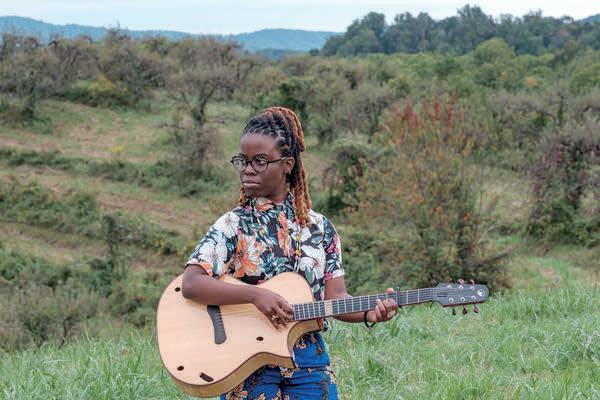


FEST, 10/20: HUBERT LENOIR, 10/21: WOMBO • PACKS, 10/22: MIKE LUST (RECORD RELEASE), 10/29: MATING RITUAL, 11/1: SONNY FALLS (RECORD RELEASE), 11/6 - 11/7: TOPS, 11/7 @ CO-PROSPERITY SPHERE: BLACK DICE, 11/8 - 11/9: PROTOMARTYR, 11/10: UNIFORM, 11/13: HANDMADE MARKET (12PM - FREE), 11/13 - 11/14: SQUID







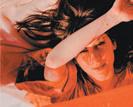
































































































therapist handled this the way he was trained to handle similar situations in the professional ethics courses he was required to take to get his license: disclose and discontinue the professional relationship.
 By DAN SAVAGE
By DAN SAVAGE
Q : I’m a 35-year-old straight woman living in the midwest. I was seeing a massage therapist for three years and we became very close friends. I referred my friends to him and helped him grow his business. He eventually disclosed to me that he had developed feelings for me. I went into instant shock and said that I had no idea and I thought we were only growing in our friendship. He told me that he had to tell me and wanted to leave it up to me if I felt comfortable continuing to see him. I was really numb from my shock and thought I was okay at first, only later realizing how upset and violated I felt. I never went back to him. I found out that he closed his practice during COVID. My question is, should I report him to his ethics board? —REALLY UPSET
BY BEWILDERING EROTIC DISCLOSUREA : No. This guy was initially your massage therapist, RUBBED, but you eventually became very close friends. I’m going to assume this was one of those consensual friendships—meaning, your former massage therapist didn’t force his friendship on you—and that you welcomed his friendship. So, while you may have gotten to know him in a unique professional setting, you wound up in a kind of two-track relationship with him: he was your massage therapist and also your friend. It’s not uncommon for friends to catch feelings for each other and it would seem to be in that capacity—in his capacity as your friend—that your massage therapist caught feelings for you.
Given that he developed feelings for you, I don’t see how he could avoid making this disclosure. Indeed, keeping these feelings to himself while continuing to see you as a client—or dropping you as a client without explanation (an explanation that you, as a friend, would have felt entitled to)—would have constituted an ethical violation.
“What he did was borderline, but not unethical,” said a physical medicine practitioner that I shared your question with. “That he brought up the fact that she could/should consider no longer seeing him keeps it just in bounds. The most correct thing would’ve been to maintain boundaries and not become friends in the first place.”
A massage therapist I shared your e-mail with told me that your former massage
als and to quash feelings of sexual attraction during a session, regardless of how long we’ve been seeing them. And regardless of what kind of relationship we might have with them outside the treatment room.
Another massage therapist I spoke to did think your former massage therapist was guilty of an ethical lapse. He referred me to the professional code of conduct published by his professional association—the College of Massage Therapists of British Columbia—which bars entering into a “close personal relationship” with a client. He felt the friendship was the ethical violation; if your massage therapist had done the right thing and kept your relationship strictly professional, he wouldn’t have caught feelings for you the way he did. And if he hadn’t caught feelings for you the way he did, RUBBED, he wouldn’t have put himself in the position of having to disclose those feelings to you. Or put you in the position of having to listen to him make that discomforting disclosure.
I understand not wanting to see this massage therapist again, RUBBED, and I understand feeling squicky about this. If I were in your shoes, I would probably wonder how much time, if any, passed between my friend/ massage therapist becoming consciously aware of his romantic feelings for me and the moment he disclosed those feelings—and I might find myself thinking back on our previous sessions and feeling a little goobed out. But while it’s uncomfortable to contemplate a massage therapist taking his own pleasure in your sessions, RUBBED, that’s always a risk. (Kind like friends catching feelings for friends is always a risk.) We rely on massage therapists to be profession-
Some of the massage therapists I spoke with felt you should report him, but the majority did not—and I’m going to stick with my advice not to report him. But you get to make your own call.
Q : I’m a healthy and active 72-year-old man who found love the second time around. In fact, I have discovered not only a depth of love I never knew existed, with my new mate I have the most active and satisfying sex life I’ve ever known. My question is this: During nearly a year of solitary processing a er my marriage ended, I chanced upon writings about tantric lovemaking practices and was fascinated by them. I began to practice withholding ejaculation, which is a tantric practice that has tremendous benefits. One of those benefits is existing in a state of perpetual desire for my partner and this lovely hum of continual sexual energy between us. But a er two years of practicing withholding semen, I now find it almost impossible to come at the time of my choosing. It is almost as if my inner tantric shaman has taken hold of the controls. The wonderful woman in my life consistently has multiple orgasms, but I come about once every seventh or eighth time, and only when we have a long, involved, and deeply connected sex session. While the release, when it comes, is always spectacular, I would like to have more control over my orgasms. Do you have any suggestions?
—WANTING A DIRECTION
A : Men who practice orgasm denial—whether they’re
withholding their own orgasms or being denied orgasms by their dominant partners—o en report existing in a pleasantly buzzy state of perpetual horniness. Doms who lock their lover’s cocks up in chastity devices (instead of relying on them to refrain climaxing or jacking off ) o en report that their perpetually horny partners are more attentive. And while those are attractive perks, I’ve never been tempted to go the orgasm denial route myself. First and foremost, I enjoy coming too much to give it up. And coming in a close second, multiple studies have shown a link between frequent ejaculation and a lower incidence of prostate cancer. Maybe at 72 you’re not worried about prostate cancer—seeing you haven’t gotten it by now—but guys who don’t want to risk prostate cancer should err on the side of busting those nuts (which is not to be confused with busting those balls).
As for your problem, WAD, if withholding orgasms is making it difficult for you to have ’em when you want ’em, well, then you might wanna stop withholding ’em. But considering how much pleasure you get out of withholding them—that buzz, those spectacular orgasms when you do come—maybe unpredictable orgasms are a price you’re willing to pay. It’s also possible that age caught up with you and your orgasms became a little less reliable at the same time you took up tantric sex practices. (For the record: tantra is a nearly two-millennia old tradition/ body of wisdom that originated in India and is typically practiced by Hindus and Buddhists. While sex is a part of tantra, sex isn’t the only thing tantra is about.) v
Send letters to mail@ savagelove.net. Download the Savage Lovecast at savagelovecast.com. @fakedansavage
Real Men. Real Community. Real Men. Real Community.
VISIT WWW.SQUIRT.ORG AND CHECK OUT OUR NEW FEATURES:
Video Chat Video Chat






Video Video
…

Push Notifications
Push Notifications



















Search Filters Search Filters


and more! and more!



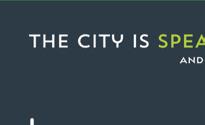






Book Club members receive an additional 10% off at the following stores:
The Book Cellar | 4736 N. Lincoln 60625 773-293-2665 | bookcellarinc.com
Bookie’s | 10324 S. Western 60643 312-890-3860 | bookiesbookstores.com
Bucket O’Blood Books and Records | 3182 N. Elston 60618 312-890-3860 | bucketoblood.com
The Dial Bookshop | 410 S. Michigan, 2nd Floor 60605 dialbookshop.com
Madison Street Books | 1127 W. Madison 60607 312-929-4140 | madstreetbooks.com
Pilsen Community Books | 1102 W. 18th St. 60608 312-478-9434 | pilsencommunitybooks.com
Roscoe Books | 2142 W. Roscoe 60618 773-857-2676 | roscoebooks.com
Semicolon | 515 N. Halsted 60642 312-877-5170 | semicolonchi.com
Seminary Co-Op Bookstore | 5751 S. Woodlawn 60637 773-752-4381 | semcoop.com

We’re continuing the conversation! Watch for the next Reader Cannabis Conversations on September 30, 2021


Space is limited. Reserve your spot now. For more information, contact ads@chicagoreader.com

Volumes Bookcafe | 1474 N. Milwaukee 60622 773-697-8066 | volumesbooks.com
Women & Children First | 5233 N. Clark 60640 773-769-9299 | womenandchildrenfirst.com

This yearlong partnership with independent bookstores is supported by the Poetry Foundation.



Mikki Kendall
Hood Feminism: Notes From the Women That a Movement Forgot
Author Talk: Oct. 22, 2020
Sonali Dev Recipe for Persuasion
Author Talk: Nov. 19, 2020
Riva Lehrer Golem Girl
Author Talk: Dec. 17, 2020
Emil Ferris
My Favorite Thing Is Monsters
Author Talk: Jan. 28, 2021
Eve Ewing
1919
Author Talk: Feb. 25, 2021
Nnedi Okorafor Remote Control
Author Talk: Mar. 25, 2021
Natalie Moore
The South Side
Author Talk: Apr. 22, 2021
Rebecca Makkai
The Great Believers
Author Talk: May 26, 2021
Fatimah Asghar
If They Come for Us
Author Talk: June 24, 2021
Kayla Ancrum
Darling
Author Talk: July 22, 2021
Jessica Hopper
The First Collection of Criticism by a Living Female Rock Critic
Author Talk: Aug. 26, 2021
Precious Brady-Davis
I Have Always Been Me: A Memoir
Precious Brady-Davis is a true Renaissance woman for the ages; as a native Nebraskan, she has never lost her midwestern charm.
Lauded internationally as an award-winning diversity advocate, communications professional, and public speaker, she currently serves as the central region communications director for the Beyond Coal Campaign at Sierra Club.

With over 15 years of experience in nonprofit administration, leadership development, and public relations, Brady-Davis is a dynamic speaker and panelist who has been featured at University of Chicago, Northwestern University, Reed College, University of Michigan, The Chicago Community Trust, Hampshire College, James Madison University, and the University of Cambridge.
Book Club membership includes:
Exclusive access to conversations between Authors and the Reader Discounts to your favorite independent bookstores



A curated monthly newsletter A members-only discussion forum






Special offers from Reader partners
Brady-Davis finds deep meaning in discovering the root of what proliferates bias, bigotry, and prejudice in our world. Through celebrating the beauty of coexistence, upli ing and centering the stories of those who are most marginalized, and seeing that all issues that damn the human condition are interconnected, she invites all who come in contact with her to see the resilience that lives within us.
She previously served for three years as the assistant director of diversity recruitment initiatives at Columbia College Chicago, her alma mater from which she received a bachelor’s in liberal arts. Brady-Davis implemented the campus-wide diversity initiative and under her tenure provided leadership and oversight of national diversity recruitment and strategic inclusion policy initiatives.
Brady-Davis also served for three years as the youth outreach coordinator at the largest LGBTQ+ community center in the midwest, Center on Halsted. Under Brady-Davis’s tenure she launched and coordinated a 1.6 million dollar CDC HIV prevention grant which provided outreach, education, youth programming, and testing services to more than 3,000 young African American and Latinx gay, bi, and trans youth between the ages of 13 and 24.
Her debut memoir I Have Always Been Me is set for release in 2020 with Topple and Amazon Publishing.
Presented by:
Author Talk: Sep. 23, 2021 Learn
Brady-Davis is married to Myles Brady and they are proud residents of Hyde Park on the south side of Chicago.
Presented by:
Adam

In this November 2, 2001 installment of Night Spies by Richard Knight Jr. and Stephen Gruhn, we meet Dana with a harrowing tale of her birthday festivities at Stanley’s.
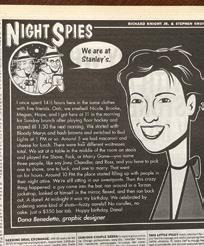
2002
Among the Missed Connections in the February 8, 2002 issue were Blue-Eyed Brandon; Accenture Girl; and Manhole, Friday 1/25. Hey, maybe if they didn’t see it back then, now’s your second chance!
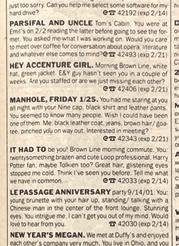
2003
In “One Shot” from the June 6, 2003 issue, photographer Suzy Poling captures the nostalgia of Santa’s Village in Dundee.
A DAILY DIP INTO THE STACKS, LEADING UP TO OUR 50th ANNIVERSARY
FOR DAILY UPDATES (MON.-FRI.), FOLLOW THE CHICAGO READER ON INSTAGRAM, FACEBOOK AND TWITTER; OR CHECK OUT chicagoreader.com/50
What were the new food spots in the October 7, 2005 issue? Oh, just a little boîte called Alinea. Perhaps you’ve heard of it ...


2008
Browsing with The Breeders on the cover of the Arts & Entertainment section of the May 29, 2008 issue of the Reader.

2006
Kari Lydersen talks with Bob Cohen, a leading US doctor in the fight for the treatment of black lung, in this cover story of the March 31, 2006 issue.

2009
Tuck in for a hearty slice of mince pie, “the real American pie,” in this exhaustive (but not exhausting) article by Cliff Doerksen from December 17, 1909 ... oops, sorry, 2009.

2004
Oak Park’s own John Mahoney (of Frasier fame) starred in Steppenwolf’s I Never Sang for My Father at the time the May 7, 2004 issue hit the streets.

2007
The Reader’s Ben Joravsky does what he does best— sticking his fingers in the eye of Chicago corruption— in this scathing piece from the August 17, 2007 issue.

2010
All the kids were joining Twitter in 2010, including the then-39-year-old Reader. This ad is from May 13 of that year.

Software Developers & Computer Systems Analyst Needed Computer Systems Analyst needed to analyze business problems and provide solutions to improve computer systems. Interact with customer for requirement gathering, analysis, identification of the business use cases and translation of the requirements into functional use cases. Provide technical support for the Sales Applications for Driver and merchandisers. All of the above duties will be performed using wide variety of tools but mainly using SAP CRM, SAP SD, Middleware. Multiple Software Developers needed to develop, create, and modify computer applications software or specialized utility programs. Analyze user needs and develop software solutions. Design software or customize software for client use with the aim of optimizing operational efficiency. Design, develop, test, and deploy custom and complex Application Integrations by working individually or coordinating development as part of a team. Ensure smooth and reliable integration of the system components. Maintain post deployment and support post production. All of the above duties will be performed using wide variety of tools but mainly using Mulesoft, WebMethods, & AWS; OR using Java/J2EE with Spring & Struts, AWS Cloud and Node Js; OR using Manual Testing & Oracle SQL; OR using Manual Testing, Automation Testing, .NET/ SQL. Multiple positions available for Software Developers using one of the above combination of skills. Not all positions require all skills. Work locations for all positions will include Chicago, IL and also at various unanticipated locations in the U.S., as assigned, which may require relocation. Applicants for all positions must specifically identify all post- secondary education and all mentioned software, languages or tools in which applicant has education, training or experience. Resumes must show if the applicant has any of the mentioned combination of skills. Mail all resumes to Quinnox, Inc., Attn: EVP - HCM, 1 South Wacker Drive, Ste # 3150, Chicago, IL 60606.
A Project Manager for the Chinese Market to perform services in Chicago, Illinois. Support and strategize with employer, intermodal monorail development and services company, in establishing, maintaining, and managing relations with partners and clients in the Chinese marketplace. Participate in negotiations and emphasizes product and transportation system features and benefits to potential customers and partners in the Chinese marketplace based on a technical understanding of product and system capabilities. Advise management regarding business practices and identification of prospective customers in the Chinese marketplace. Perform original research on port authority, city and provincial government and railroad intermodal planning as relevant to employer intermodal solution. Create and maintain financial models, projections, and reports including supply chain reports and translations from English to Mandarin for sales purposes. Bachelors degree or higher in business administration required. Fluency in Mandarin and English required. Limited international travel to China of approximately 25% of workdays required. Email resume and cover letter to Jim Guttosch, EagleRail Container Logistics, Inc. 231 S. LaSalle St., Ste. 2100, Chicago, IL 60604, jim. guttosch@eaglerail.com.
Dermacare LLC seeks a Senior Data Scientist in Chicago, IL to bild rbst core SW infra for the telemed sys, prodctn & flfllmnt sys, as well as the electr med rcrds sys. Please submit resume to: steve@dermacare.com.
VDC Project Engineer, Wight Construction: Plans & implements a variety of BIM/Virtual Design & Construction (VDC) processes and works w/ Proj Mgrs & Sprntndnts on project docmntation; process sbmttls, RFI’s & change rqsts; subcontractor coordination. Reqs: BS in Constr or Cvl Engr. w/ 1-yr wrk exp in commrcl constr field or Mstrs degr in Constr or Cvl Engr. Any eductnl or exp bckgrnd mst incl: 4D BIM modeling, Autodesk Navisworks, Autodesk Revit, Synchro, Microsoft Project, & CAD. Local travel reqd. Loc: Darien, IL Contact: kprock@ wightco.com.
TAC Suprvs’r– (Chicago, IL) RSM US LLP: Prov. Tech accnt’ng & fin’cl or buss advs’ry guid’nce to clts. Reqs: Master’s in Accnt’g, Fin, Buss Admn or rltd fld; 3 yrs’ of exp as a Fin/Audit Assoc, Audit Sr, Audit Mngr or a rltd pos’n, & incl: Exec’n of extrn’l audit engmnt’s of clnts, incl SEC regstr’nts, in acc. w/ reglt’ry audit’ng & assrn’ce stndrds; Res find’gs re accnt’g literat’re, tr’nds, & tech issues relevn’t to clnt’s ind’try; Idntfy & comm issues & opportnt’s for audit efficienc’s & proc imprvm’nt to mngrs & prtnrs. Will accpt Bach in same flds + 5 yrs’ exp in lieu of Master’s + 3 yrs’ exp. Upto 15% trvl may be req. Mail resumes to: Attn: C Volkening – Ref # 2380, 30 S. Wacker Dr, Ste. 3300, Chicago, IL, 60606
Medline Industries, Inc. has multi open’gs in Northfield, IL for:
A)Senior QA Automation Engineer to dv’lp/ execute test cases & automated/manual testing on WEBBR & mobile devices. Apply at: medline. taleo.net/careersection/ md_confidential/jobapply.ftl?lang=en&job=INF0100BE
B)Sr. Manager, IS Applications (Business Intelligence) to coord’te systems, an’lys & app dvlpmt actv’s. Apply at: medline.taleo.net/careersection/md_confidential/ jobapply.ftl?lang=en&job=INF0100B7
No trvl; no telcomm
U4 Business World Consultant for SystemsAccountants a leading financial systems recruitment and consulting firm in Chicago, IL, to utilize the UNIT4 Business World (formerly Agresso) product and modules and maintain an appreciation of all UNIT4 product families. Requires a Bachelor’s degree or foreign equivalent degree in Computer Science, or a related field, and five (5) years of experience utilizing the Unit4 Business World product and modules, IT processes and systems; implementing and enhancing Unit4 products and modules (including the Core Financials, Procurement, Project Costing & Billing, Human Resources and Payroll); configuring and testing system functionalities to overcome deficiencies; participating in development projects utilizing ERP software such as Business World;
developing and configuring Business World systems; assisting with the implementation of functionality changes for new and existing Business World users. Two (2) of these five (5) years of experience should include management experience of supervising a team of three or more analysts and managing development projects from start to finish for projects such as Concur and Unit4 Business World upgrades. Send resumes to SystemsAccountants at jack@systemsaccountants.com.
Category Manager
(ABM Industries Inc.)
(Chicago, IL): Spearhead a dynamic supply chain strategy directly relating to the distribution of supplies and equipment. Work hand-in¬-hand with operations to understand their needs to create service level agreements (SLA’s) and key performance indicators (KPI’s). Requires a Master’s degree or foreign equivalent in Business or related technical field, plus 5 years of relevant experience in a procurement/ strategic sourcing role or similar capacity negotiating and purchasing materials and services. Must have 3 years of experience in sustainable sourcing and evaluating alternative technologies to lower costs of ownership via energy and carbon footprint reduction. Experience must include: working with strategic sourcing processes and methods as well as relevant procurement technologies and ERP systems; working with MS Excel and PowerPoint; driving and creating change through actionable recommendations and implementation plans. Send resumes by mail to ABM Industries Inc. Attn: Marliane Charles, Director, Human Resources, One Liberty Plaza, 7th Floor, New York, NY 10006.
OfficeNation, Inc. d/b/a PCNation is seeking a .Net Developer in Northfield, IL with the following requirements: Master’s degree in Computer Science or related field or foreign equivalent degree. 2 years related experience. Required skills: Design and develop winform/ web application using Asp.Net, C#, MVC, WPF, WCF, VB6, XAML, JavaScript and other Microsoft technologies(2 yrs); Develop reports and
maintain report definitions and report manager portal using SQL Server Reporting Services (SSRS) (2 yrs); Perform Software Analysis, Design, Development, Data Modeling, testing and implement Object Oriented Programming Concepts (OOPS) (2 yrs); Design the extraction and transformation of Data from stores using Data Transformation Services (1 yr). Send resume to careers@pcnation.com. Must reference K112489.
FOR SALE BY OWNER
Sunny and great layout studio for sale by owner. This 630 sq. ft. spacious studio is located at 5701 N. Sheridan Road and Hollywood. It is in great condition, ready to movein. Wooden floors. Kitchen has been updated with white quartz countertops and stainless steel stove, full size refrigerator. Large freshly painted walk-through closet with mirror doors. Window treatments have been updated with vertical blinds. Excellent public transportation, 24-hour doorman Price: $117,000 (negotiable) Please call Virginia at (773-334-6890) for appointment, or send an email to vpenaranda@ aol.com.
LAKEVIEW
One bedroom garden apartment, wall to wall carpet, A/C, recessed lighting, laundry, storage. No pets. $850.00 a month plus utilities. 773-296-1316
Zen Meditation Practice. Sunday mornings, Bultasa Buddhist Temple, 4360 Montrose Avenue 10 AM - Noon 815 701 7733. Bultasa Zen Group on Meetup and Facebook. Korean Zen Master Seung Sahn tradition.
Danielle’s Lip Service, Erotic Phone Chat. 24/7. Must be 21+. Credit/ Debit Cards Accepted. All Fetishes and Fantasies Are Welcomed. Personal, Private and Discrete. 773-935-4995
WANT TO ADD A LISTING TO OUR CLASSIFIEDS?
Email details to classified-ads@chicagoreader.com
CLEANING SERVICES
CHESTNUT ORGANIZING AND CLEANING SERVICES: especially for people who need an organizing service because of depression, elderly, physical or mental challenges or other causes for your home’s clutter, disorganization, dysfunction, etc. We can organize for the downsizing of your current possessions to more easily move into a smaller home. With your help, we can help to organize your move. We can organize and clean for the deceased in lieu of having the bereaved needing to do the preparation to sell or rent the deceased’s home. We are absolutely not judgmental; we’ve seen and done “worse” than your job assignment. With your help, can we please help you? Chestnut Cleaning Service: 312-332-5575. www.ChestnutCleaning. com
Have you had an unwanted sexual experience since age 18? Did you tell someone in your life about it who is also willing to participate?
Women ages 18+ who have someone else in their life they told about their experience also willing to participate will be paid to complete a confidential online research survey for the Women’s Dyadic Support Study. Contact Dr. Sarah Ullman of the University of Illinois at Chicago, Criminology, Law, & Justice Department at ForWomen@ uic.edu, 312-996-5508. Protocol #2021-0019.
Find hundreds of Readerrecommended restaurants, exclusive video features, and sign up for weekly news at chicagoreader.com/ food
DOM SEEKS OLDER
SUB FEMALE

Married White Male Dom 52 seeks older sub female for discreet LTR and will train likes pleasure and punishment I can host and discreet call-224292-9899 or you can em me dragonmastercs69@ gmail.com
Submit your Reader Matches ad today at chicagoreader. com/matches for FREE. Matches ads are not guaranteed and will run in print and online on a spaceavailable basis.

Find a concert, buy a ticket, and sign up to get advance notice of Chicago’s essential music shows at chicagoreader.com/early



















Part of a series of events marking late CHICAGO MAYOR WASHINGTON’S 100th BIRTHDAY
Featuring LGBTQ+ advocates discussing Washington’s role in the city’s gay-rights ordinance, HIV/AIDS, appointing the first mayor’s liaison to the gay and lesbian community, the first gay and lesbian advisory council, and more.




SPEAKERS

Sen. Mike Simmons & Tracy Baim MCs
PANEL: Washington’s Campaign and Outreach


Peggy Baker
Ann Christophersen



Moderator: Mona Noriega

PANEL: Advocacy for the Gay-Rights Bill
During Washington’s Tenure

Laurie Dittman


Rick Garcia



Art Johnston

Moderator: Mary Morten



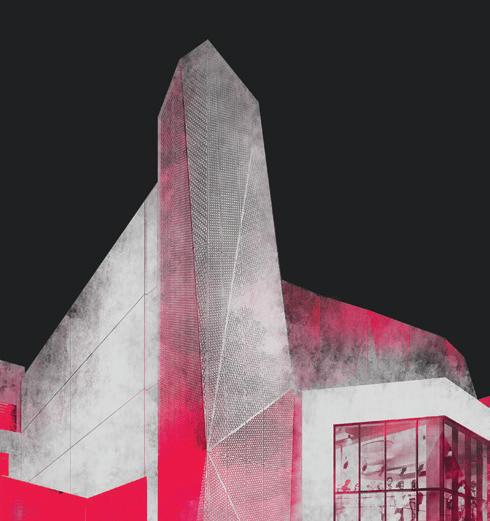 By ensemble member
By ensemble member
Tracy Letts
Directed by David Cromer

Featuring ensemble members Randall Arney, Carrie Coon and Namir Smallwood with Jennifer Engstrom and Steve Key
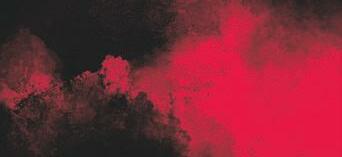
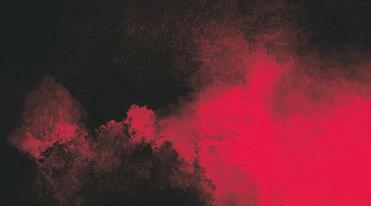





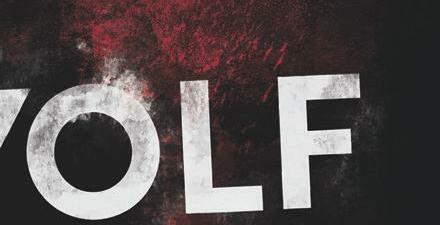

November 11 – December 12, 2021





 By ensemblemember
By ensemblemember
Rajiv Joseph
Featuring ensemble member Glenn Davis with Chris Perfetti
February 24 – April 3, 2022


















King James is co-commissioned and co-produced by Steppenwolf Theatre Company and Center Theatre Group.

 By Anton Chekhov
By Anton Chekhov
Adapted and directed by ensemble member
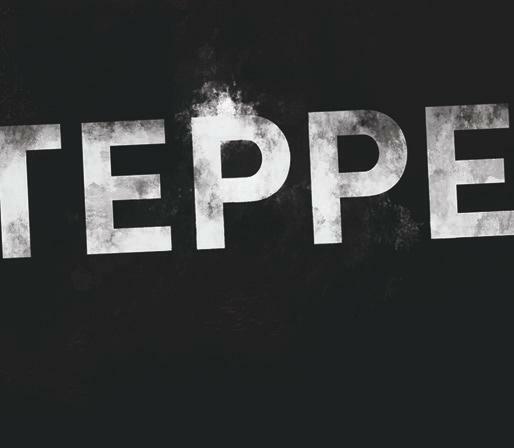
Yasen Peyankov
Featuring ensemble members
Tim Hopper, Sandra Marquez, James Vincent Meredith, Caroline Neff, Jeff Perry, Karen Rodriguez and Namir Smallwood
April 28 – June 12, 2022


In the NEW Round Theater
By ensemble member TarellAlvin McCraney
Directed by Kent Gash
Featuring ensemble member James Vincent Meredith with Daniel Kyri
June 16 - July 24, 2022




NIGHT SAFARI
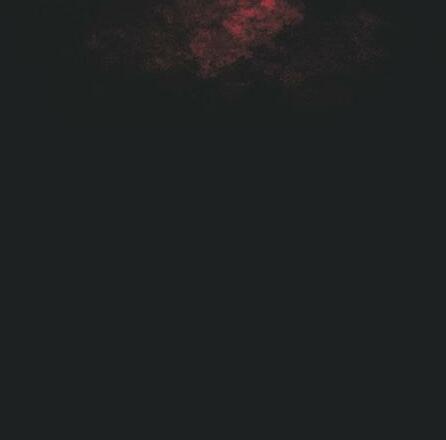
Written by ensemble member
Tracy Letts
Directed by Patrick Zakem
Featuring Rainn Wilson
Streaming Sept 29 – Oct 24

THE OLD COUNTRY
Written by ensemble member
Tracy Letts
Directed by Patrick Zakem
Featuring ensemble members
William Petersen and Karen Rodriguez with

Mike Nussbaum
THE STRETCH
Written by ensemble member
Tracy Letts
Directed by ensemble member
Anna D. Shapiro
Featuring ensemble member
Tracy Letts
Streaming Sept 29 – Oct 24 BECOME


